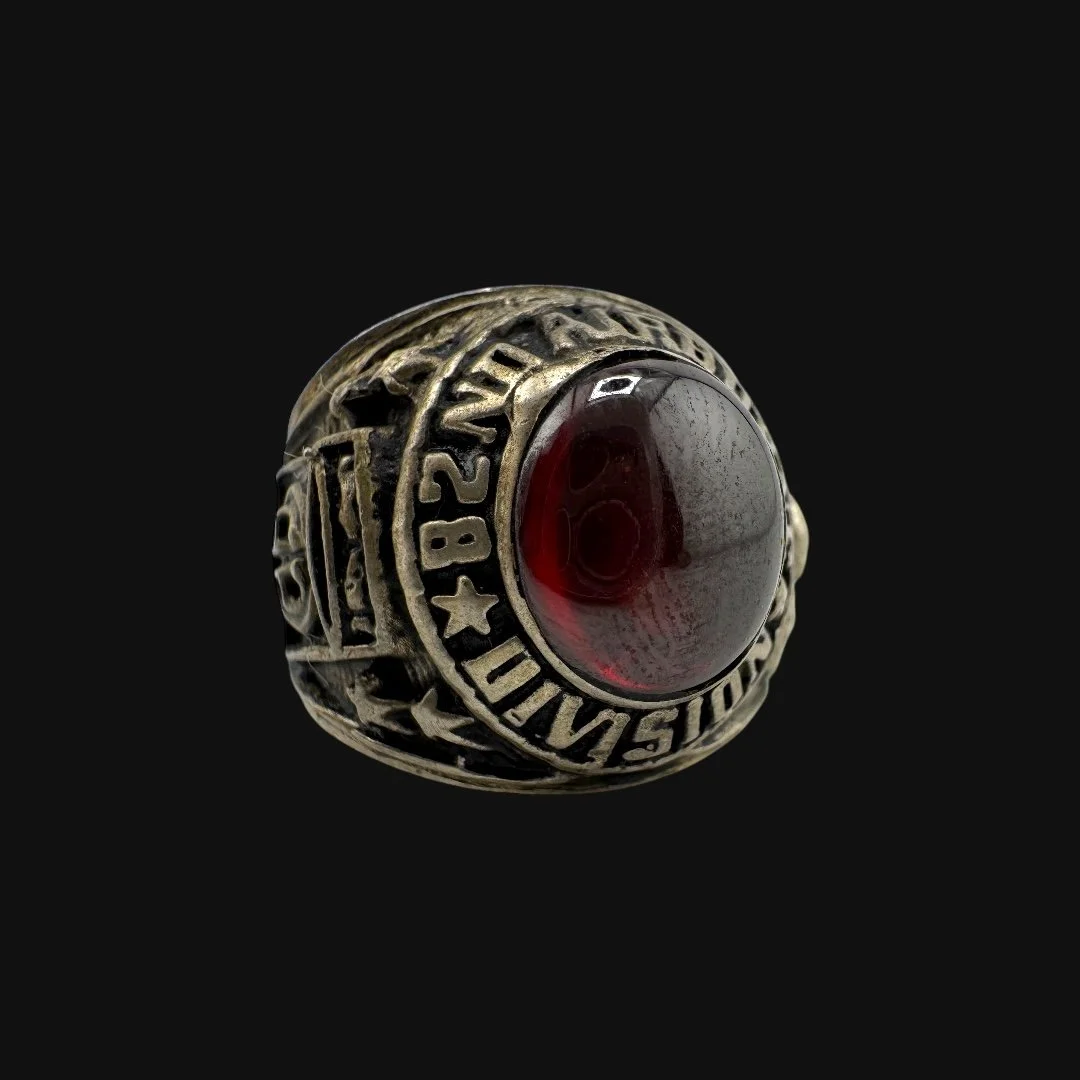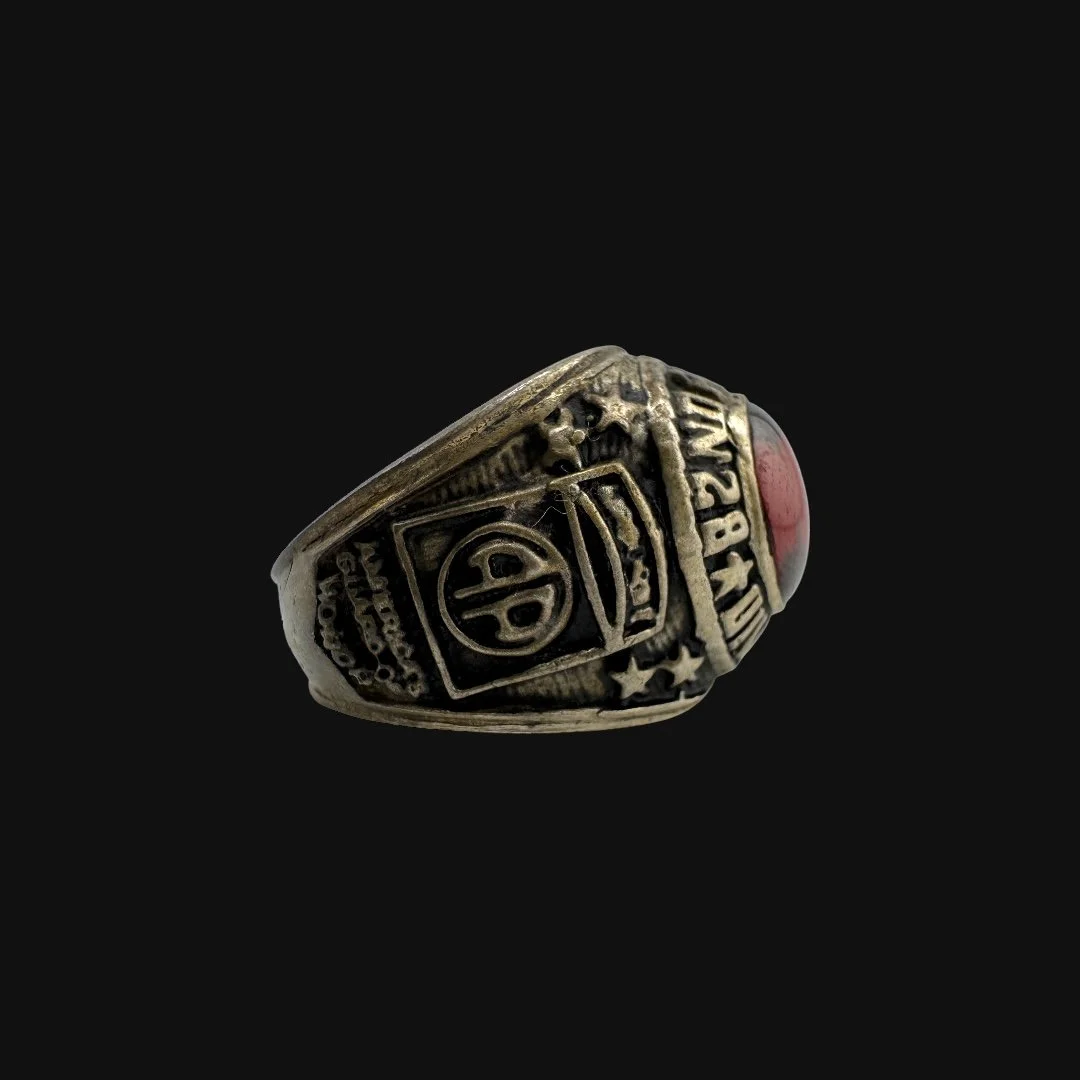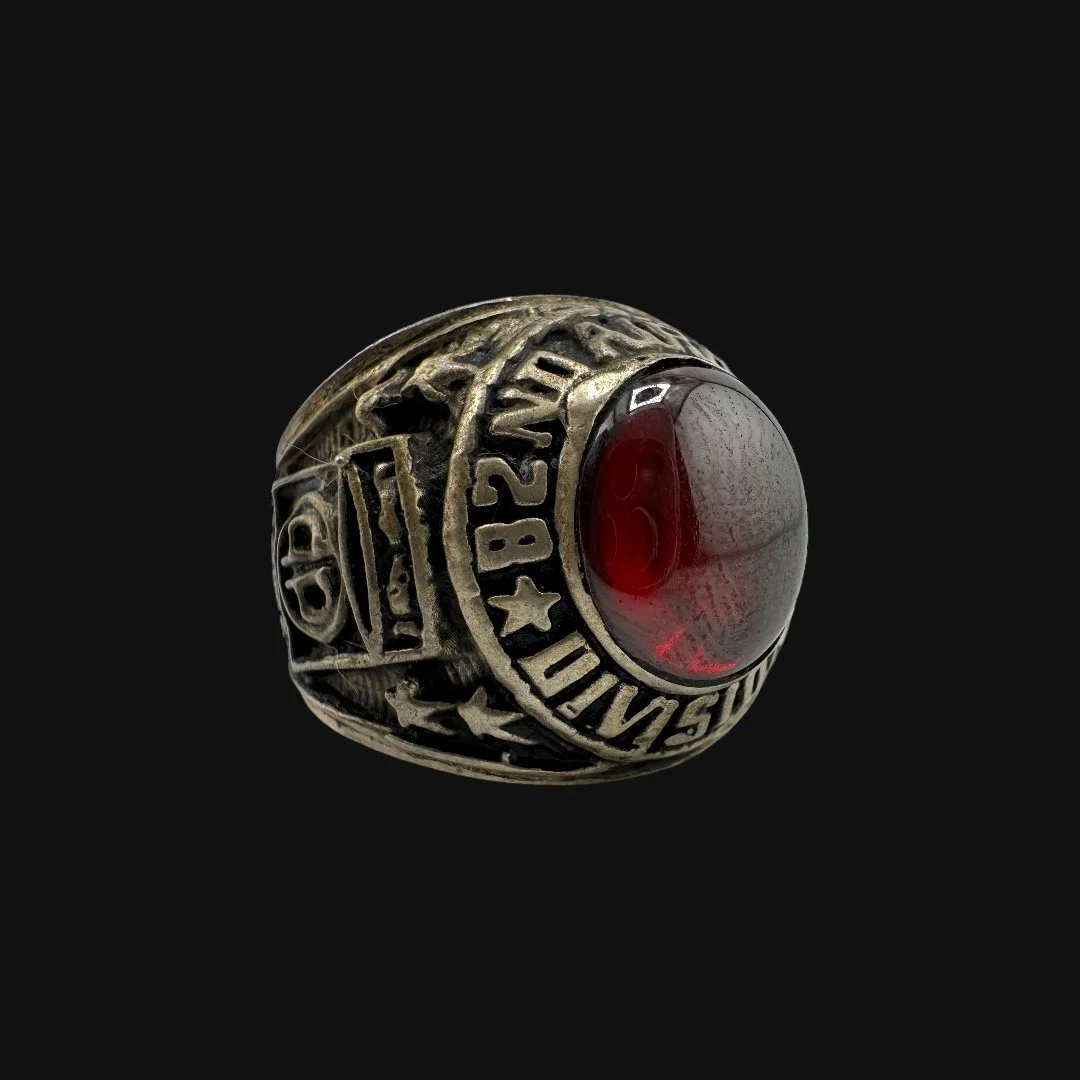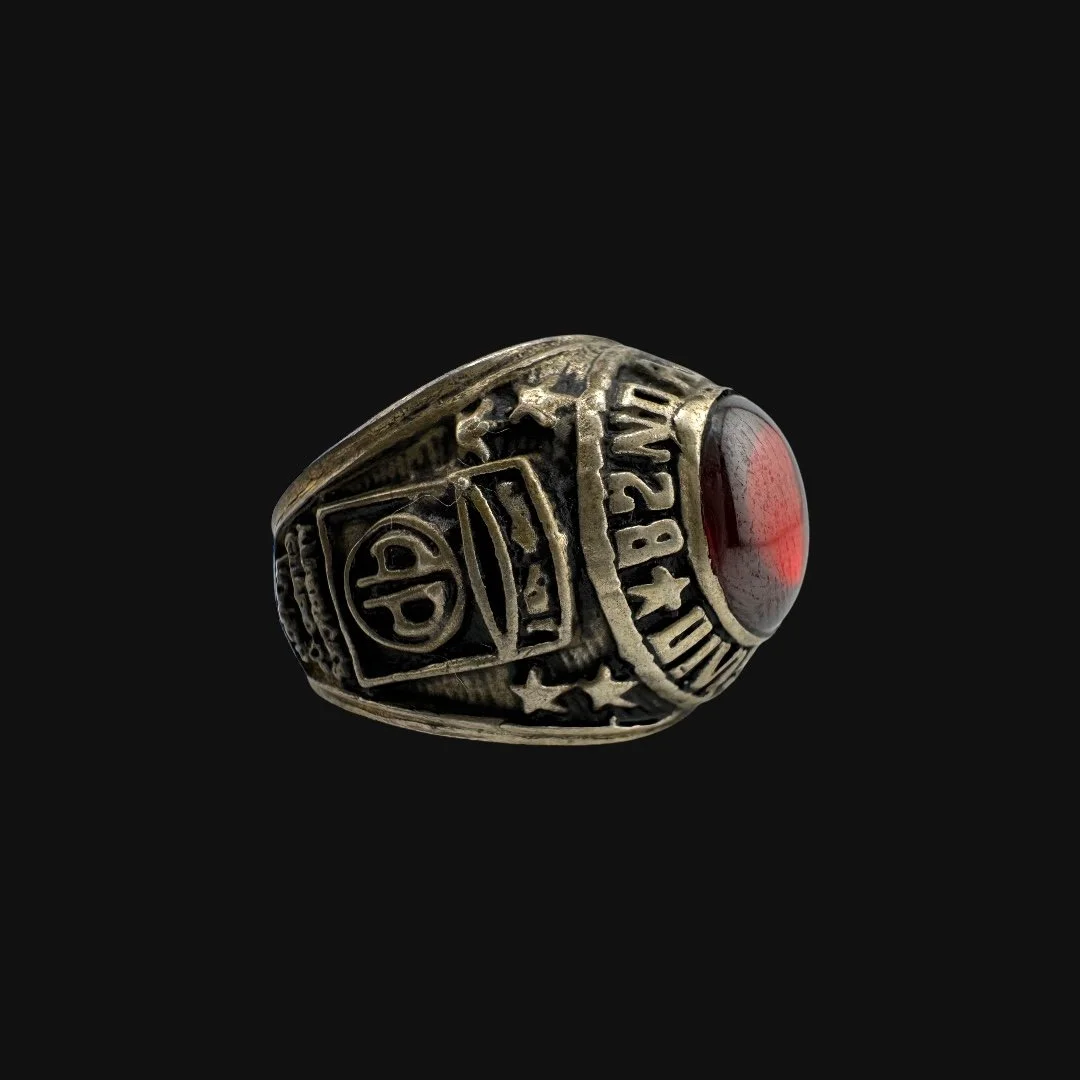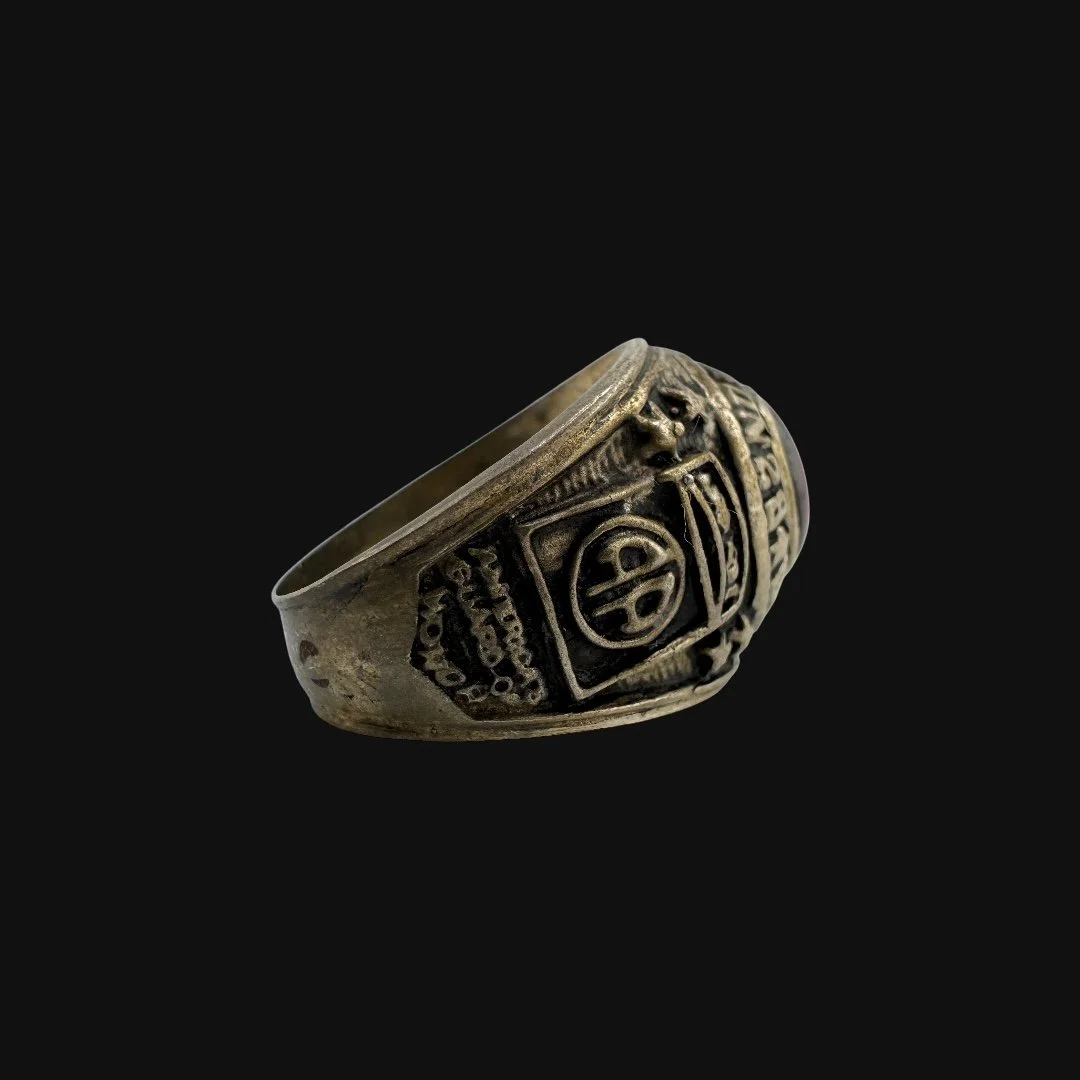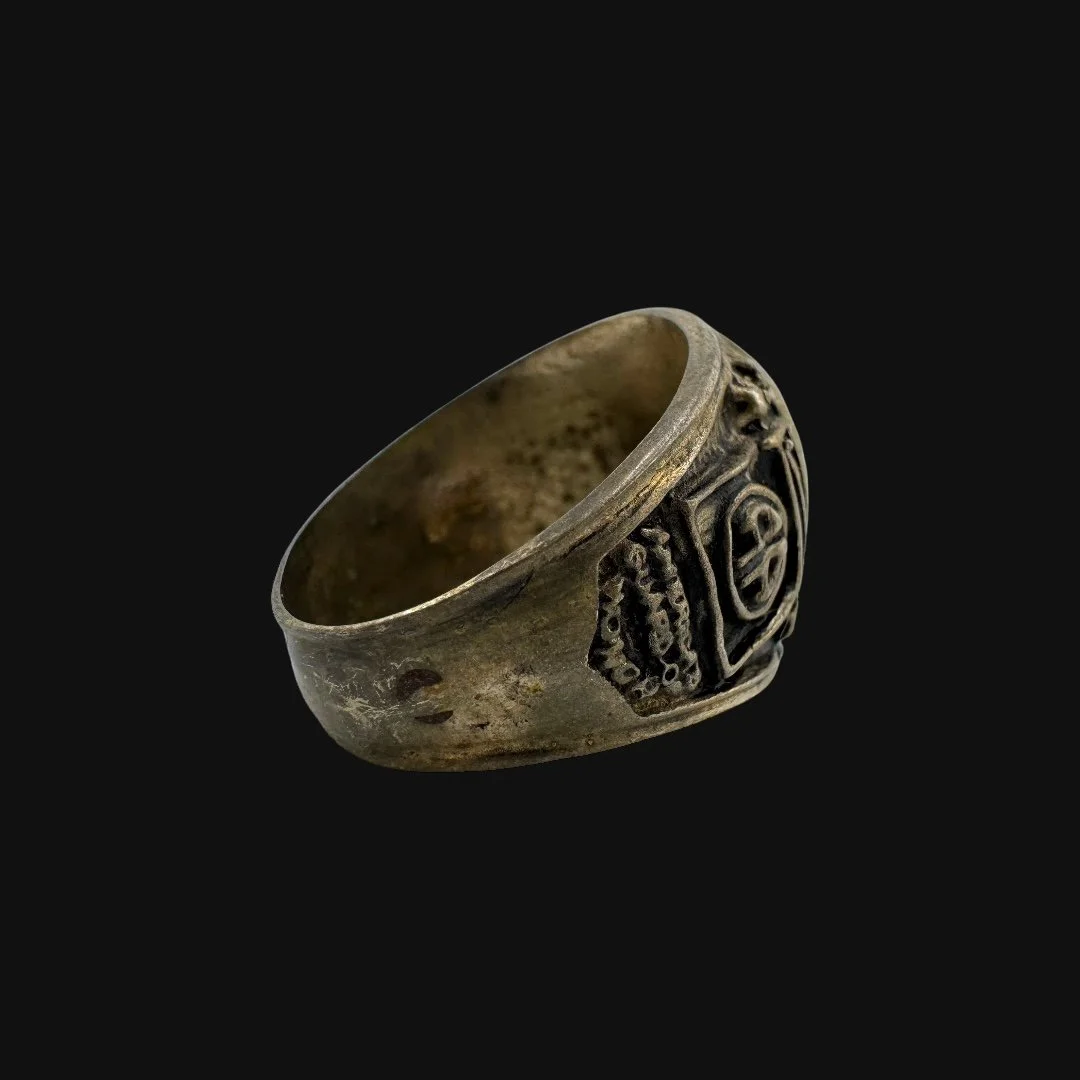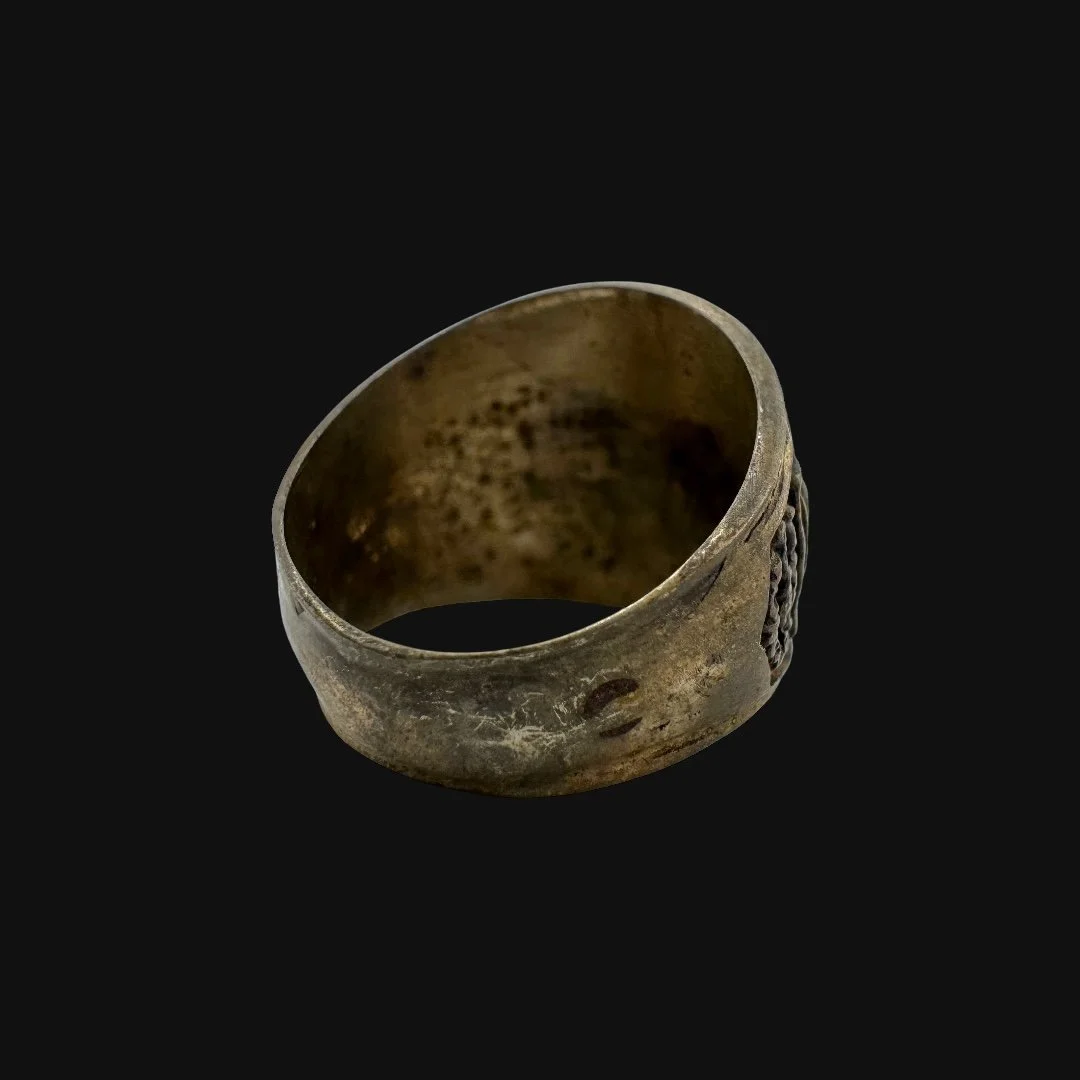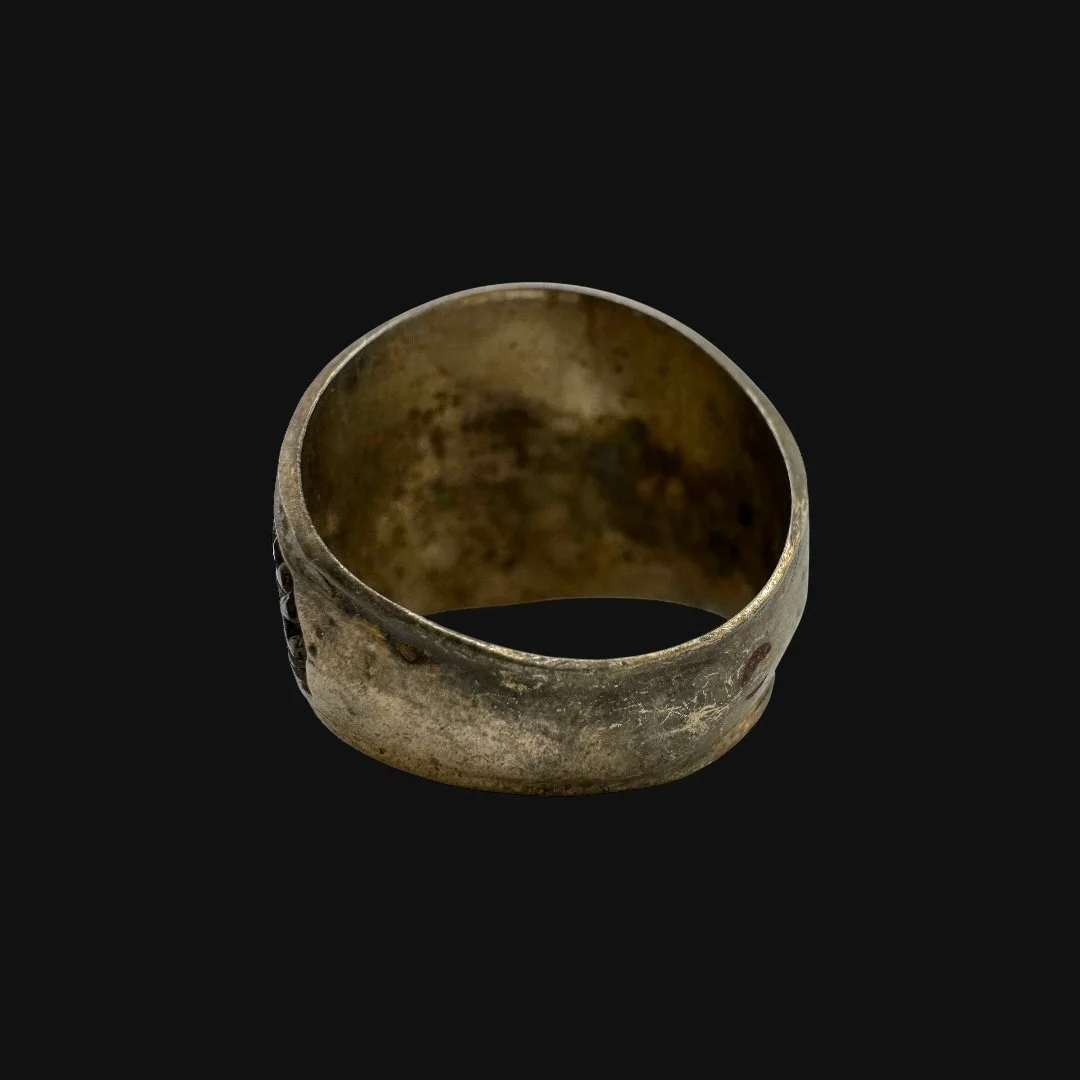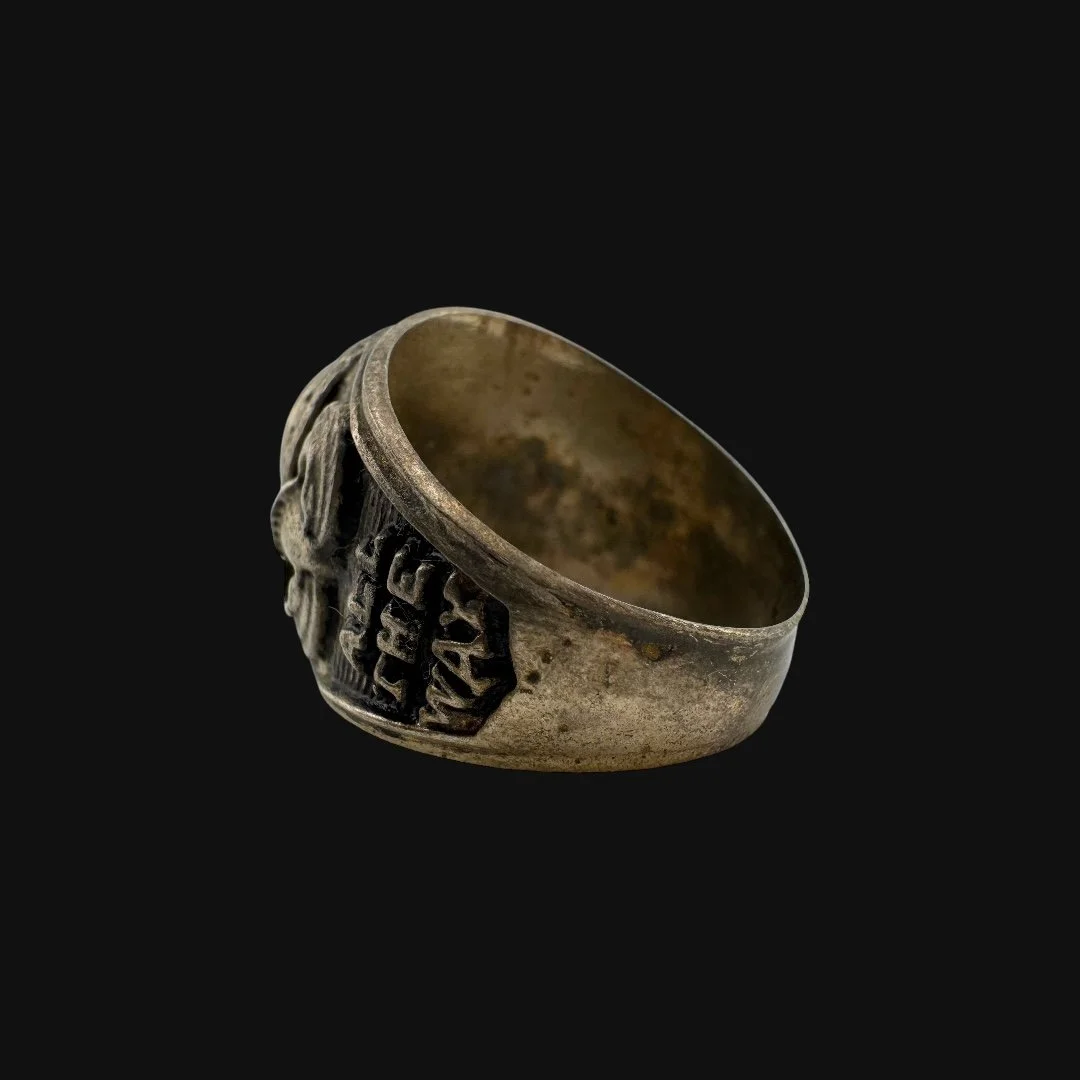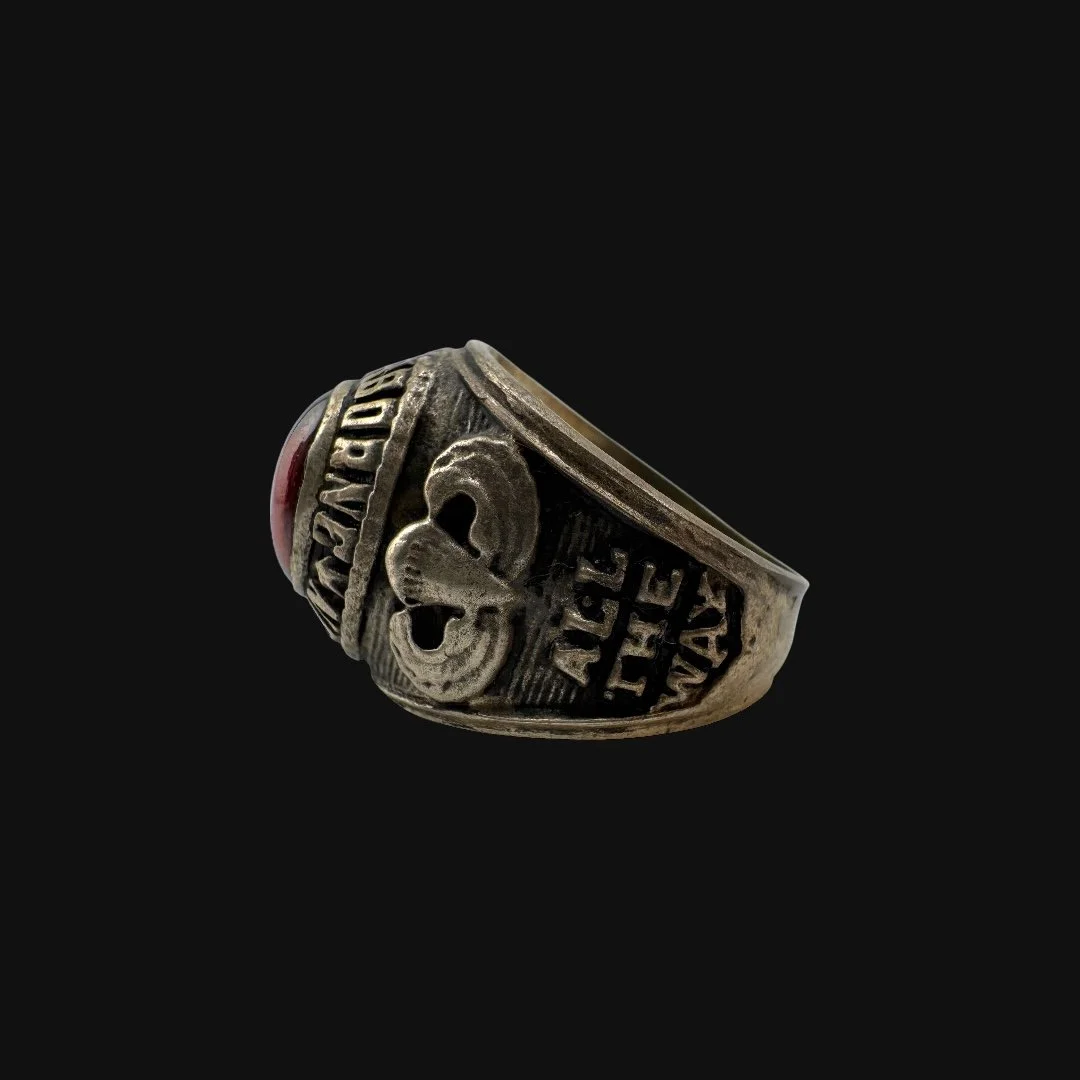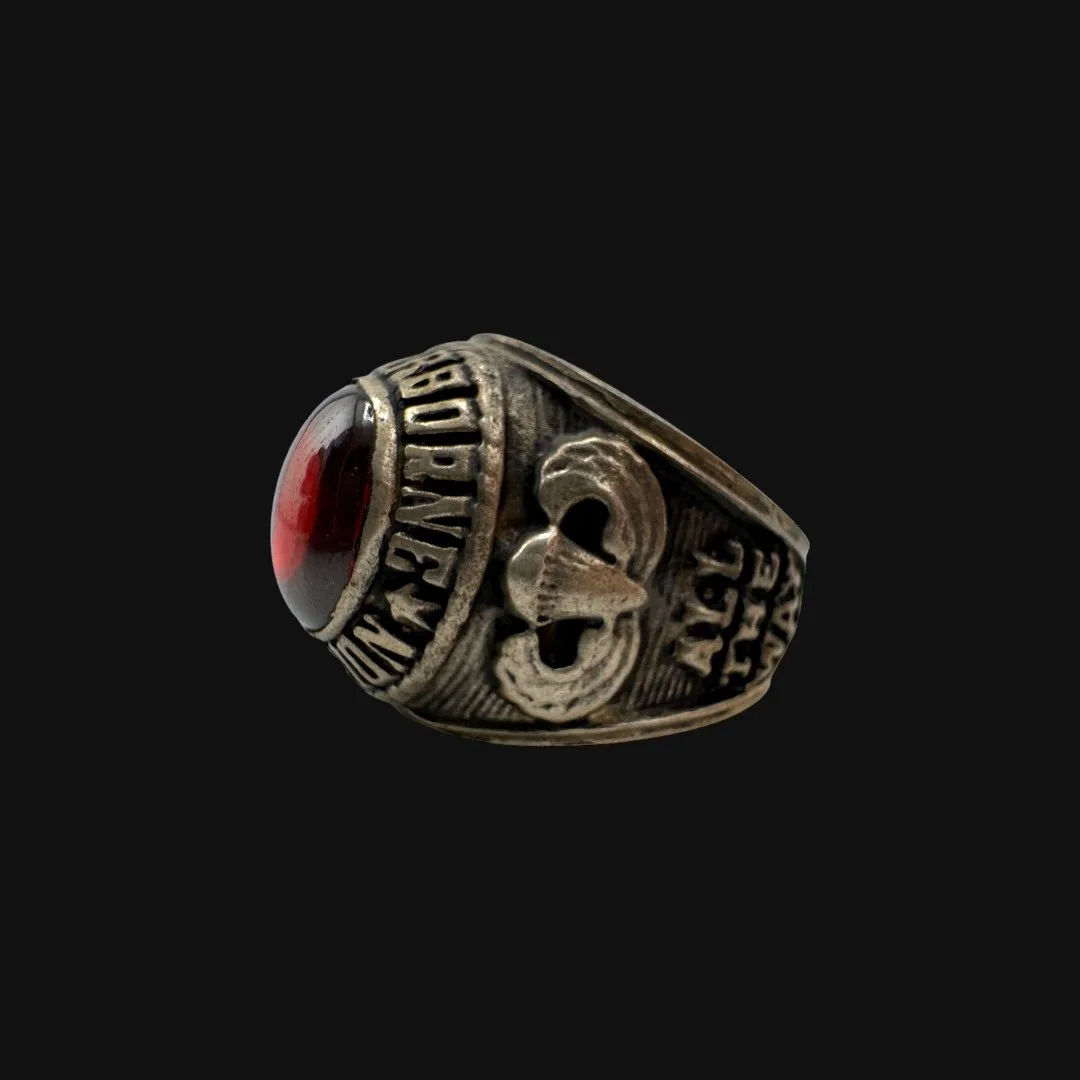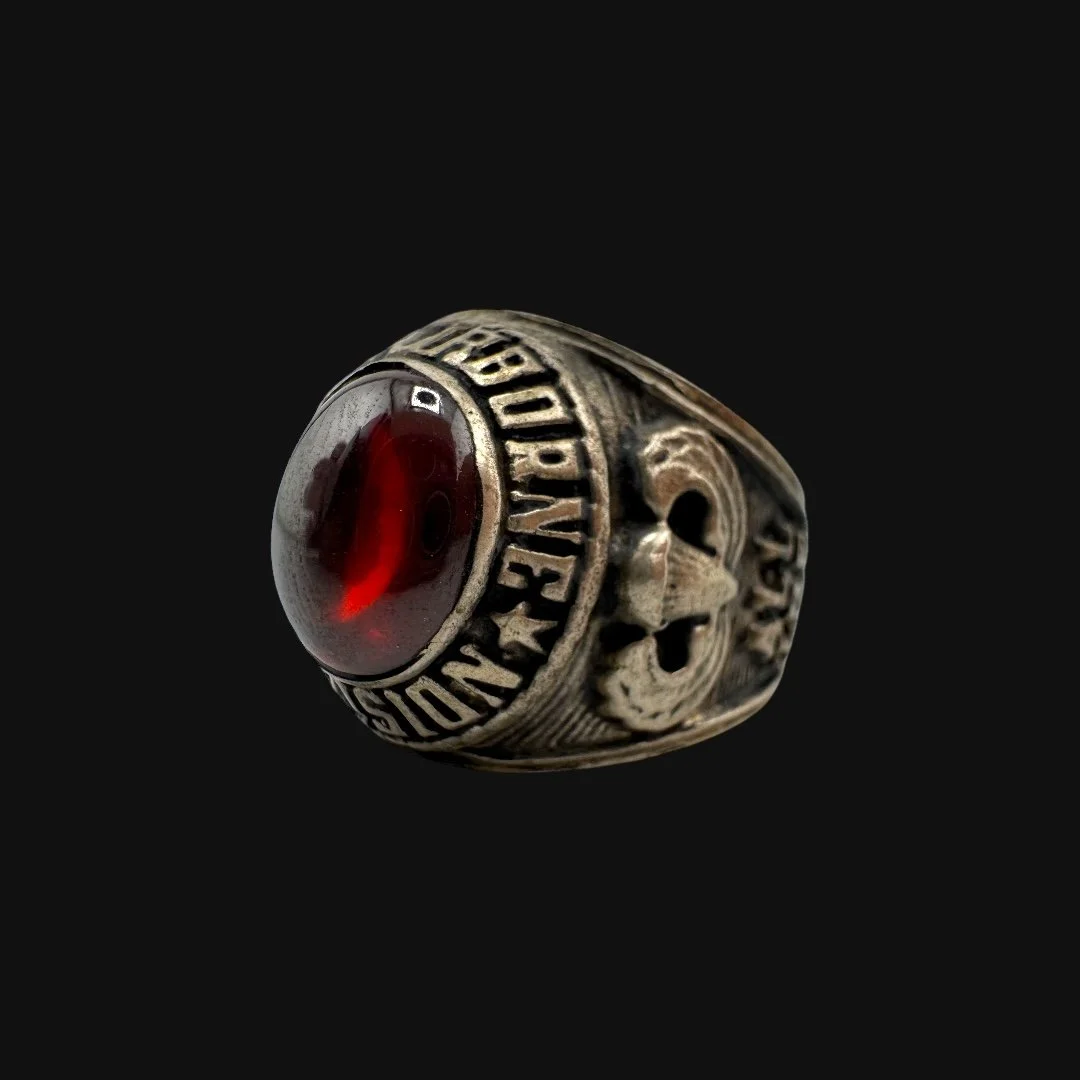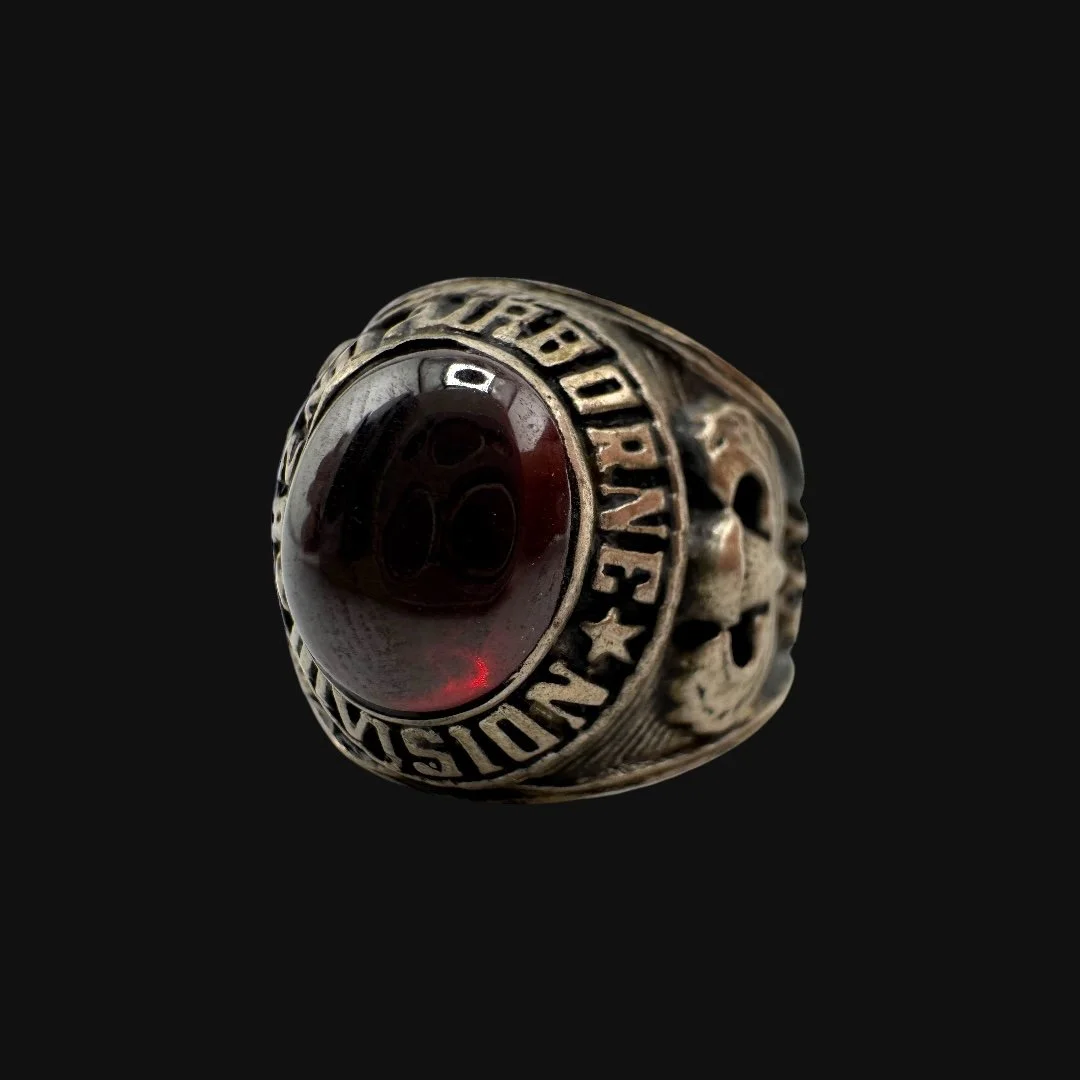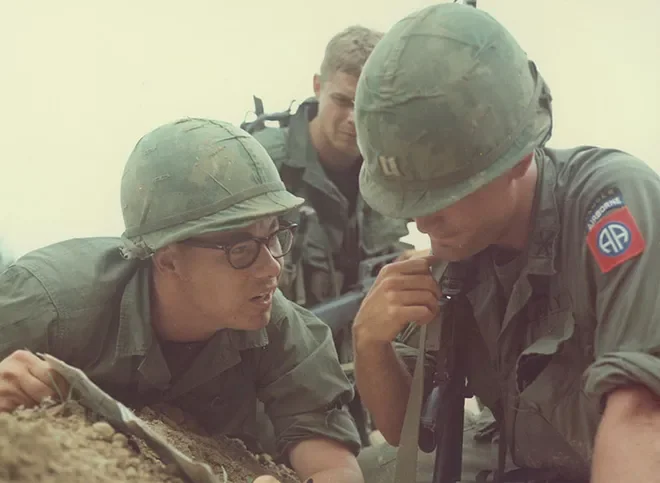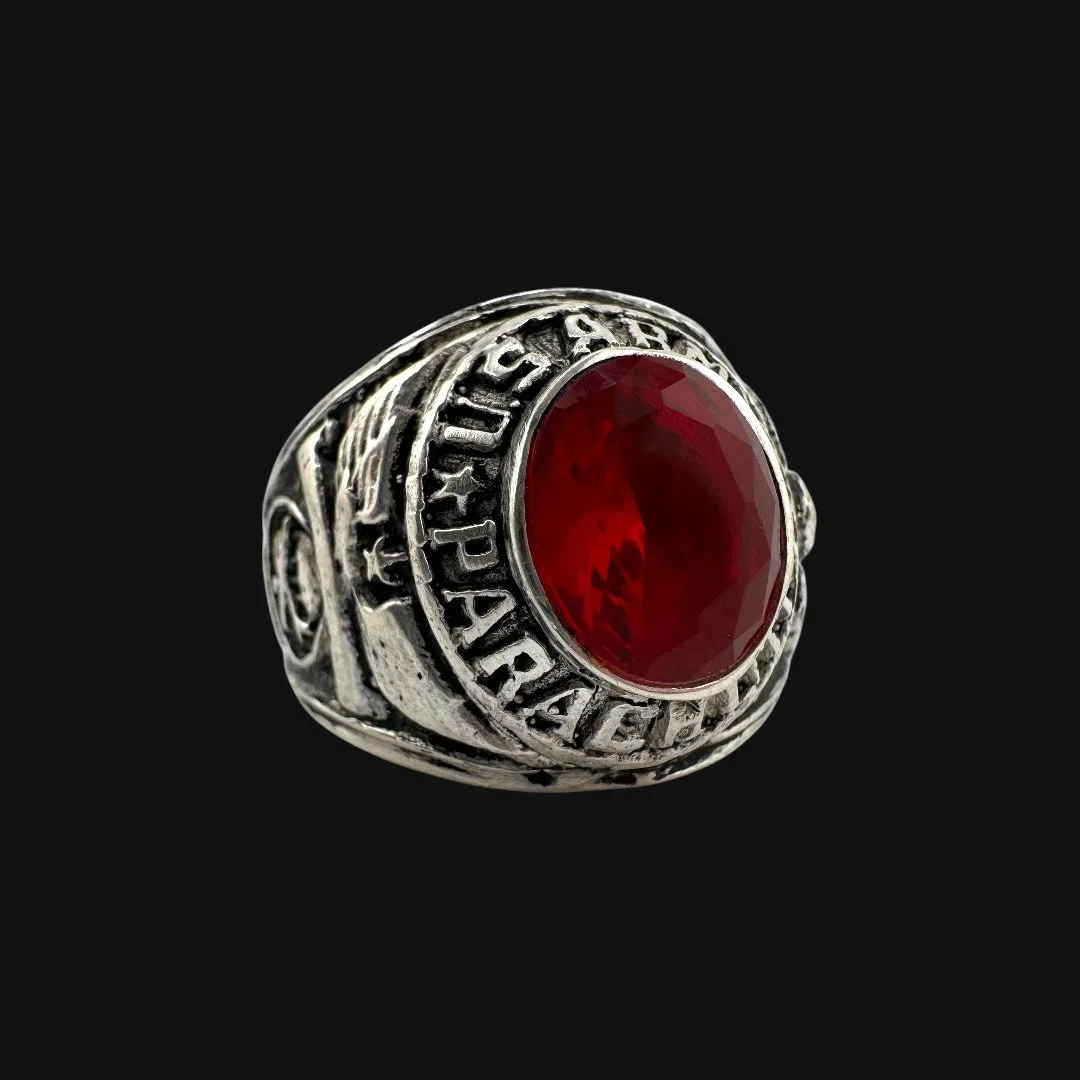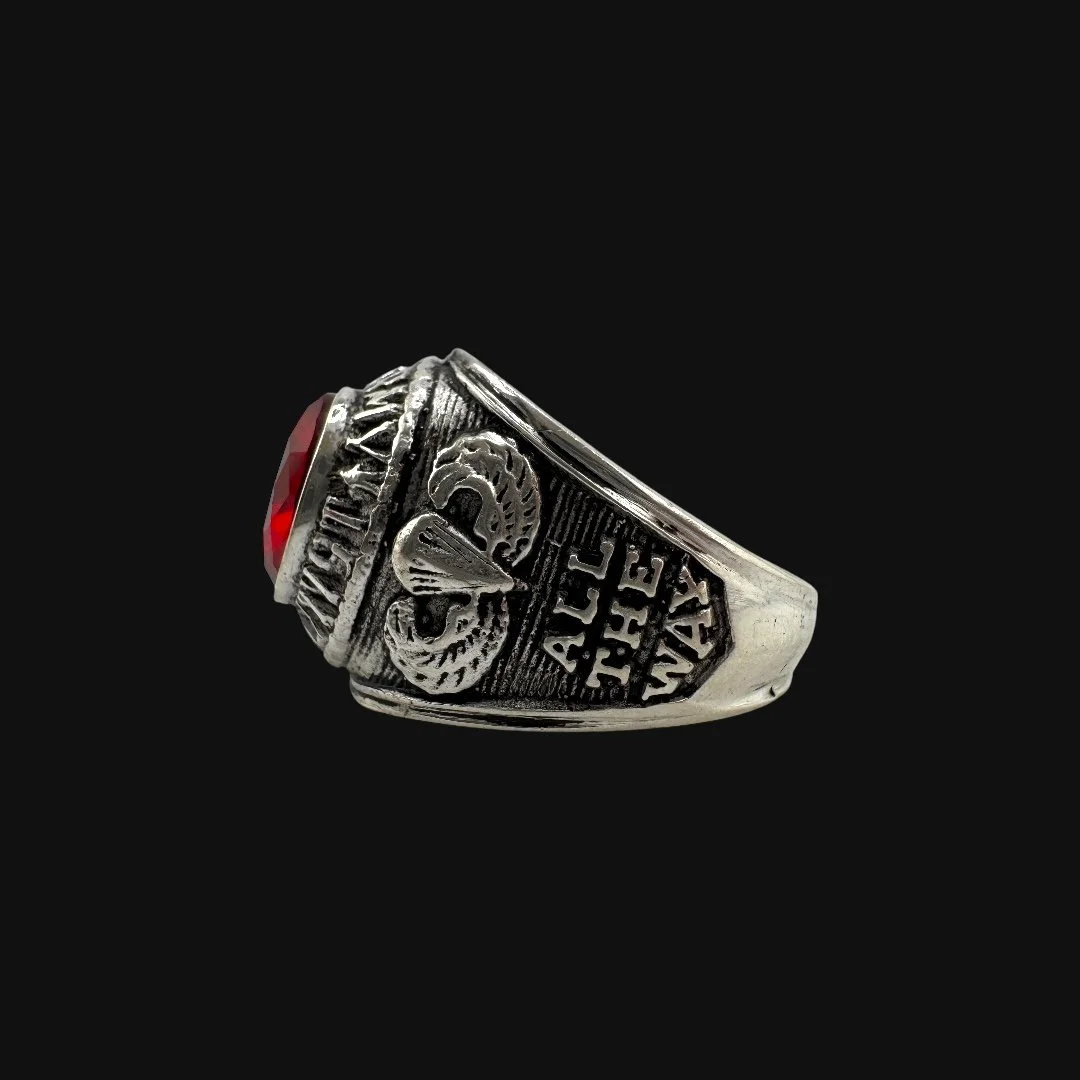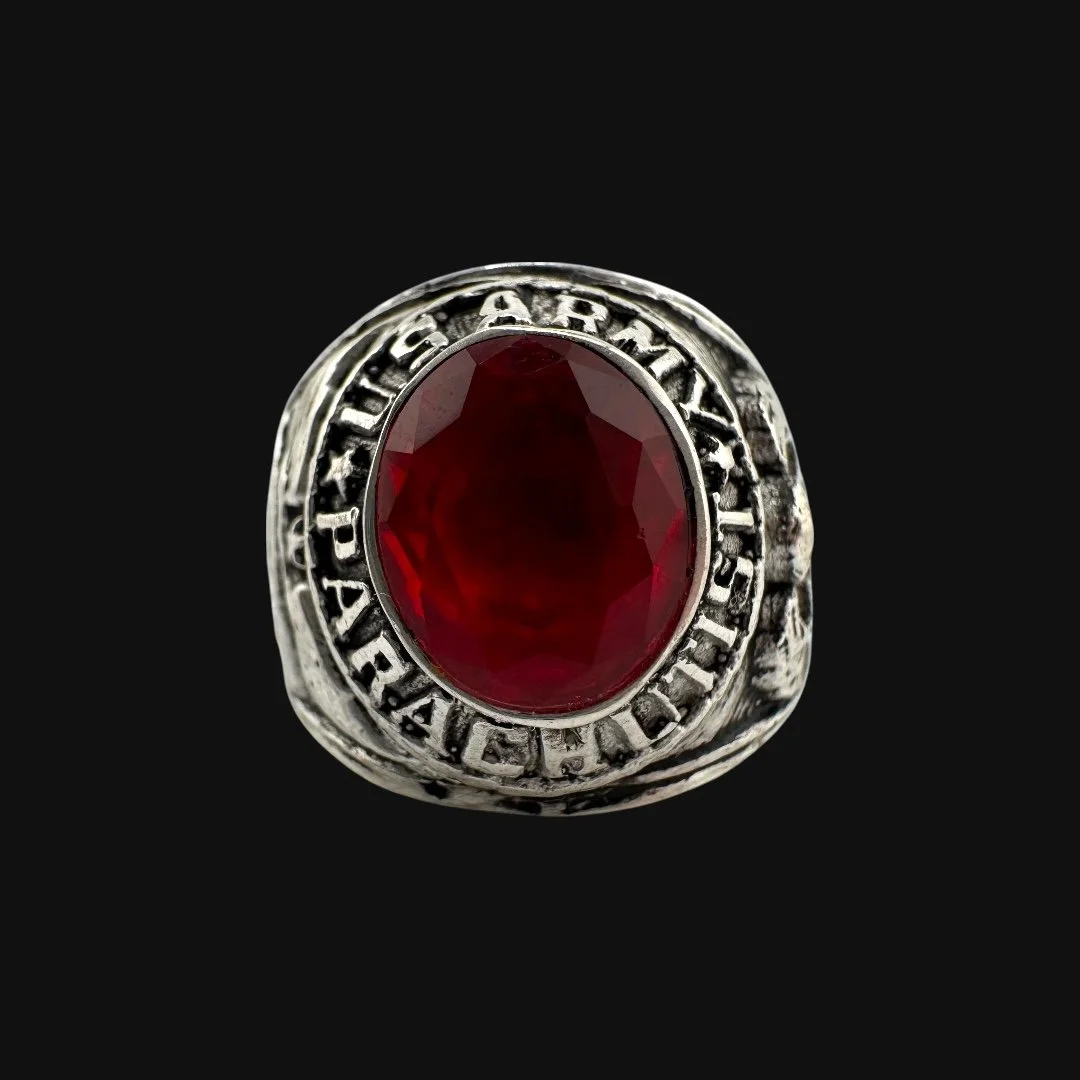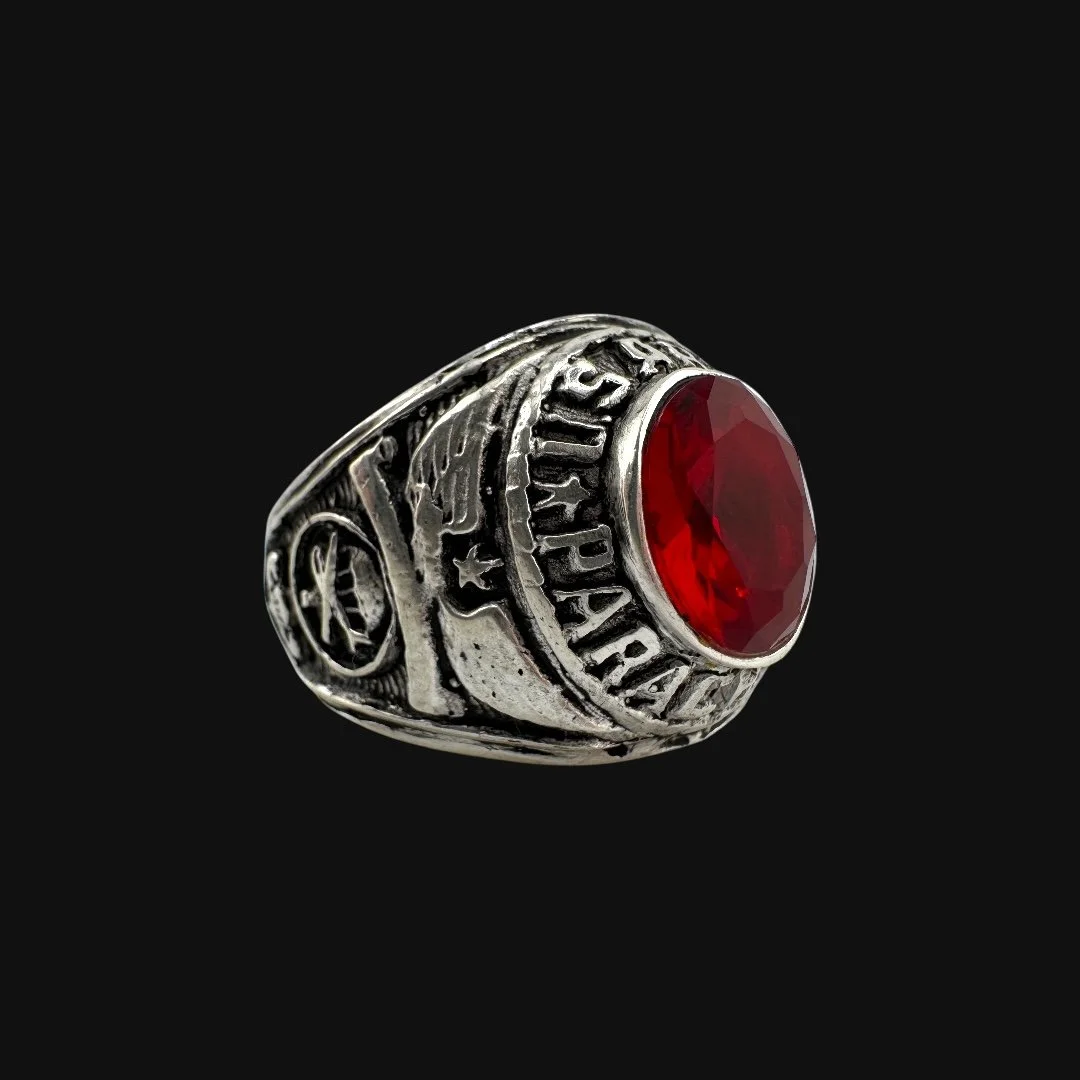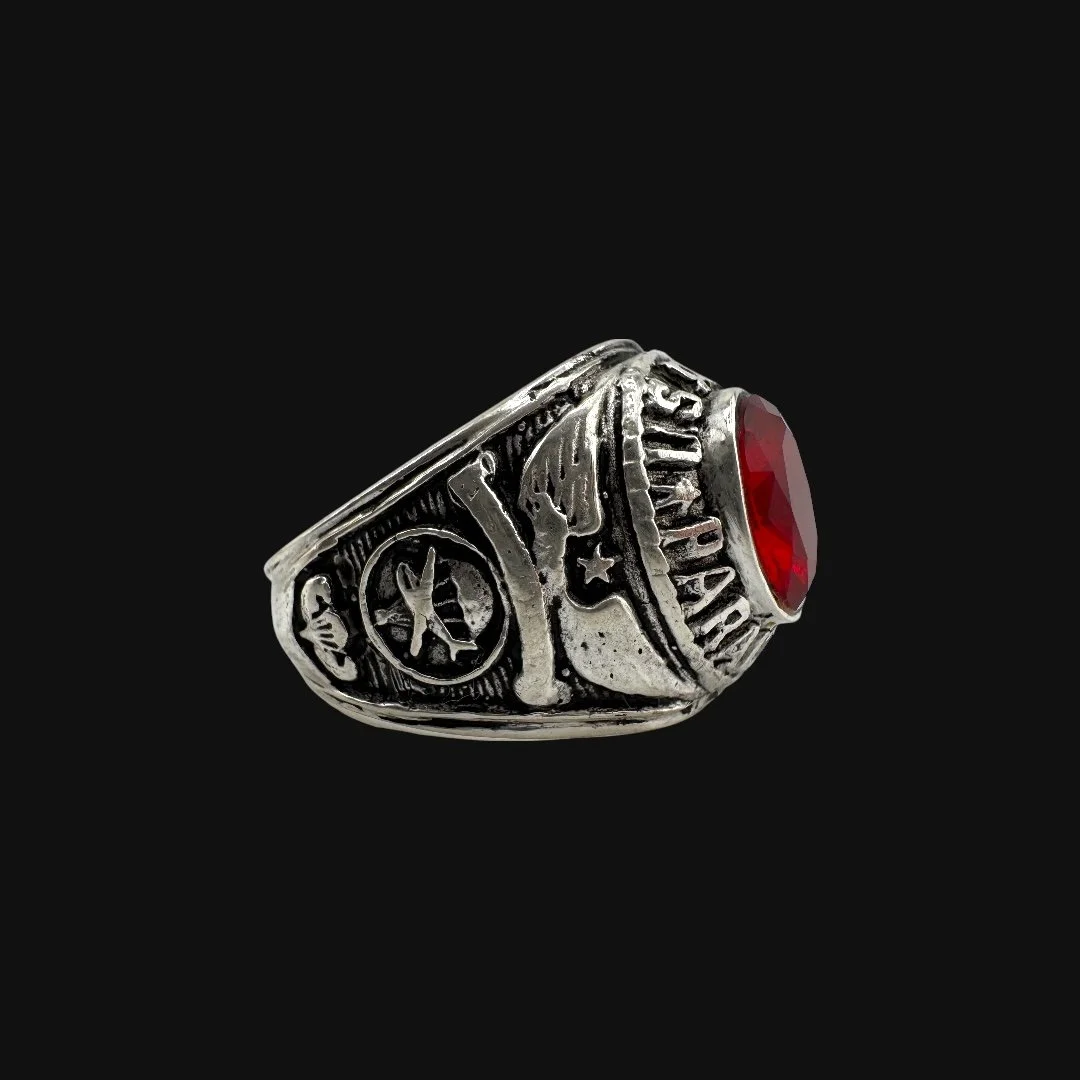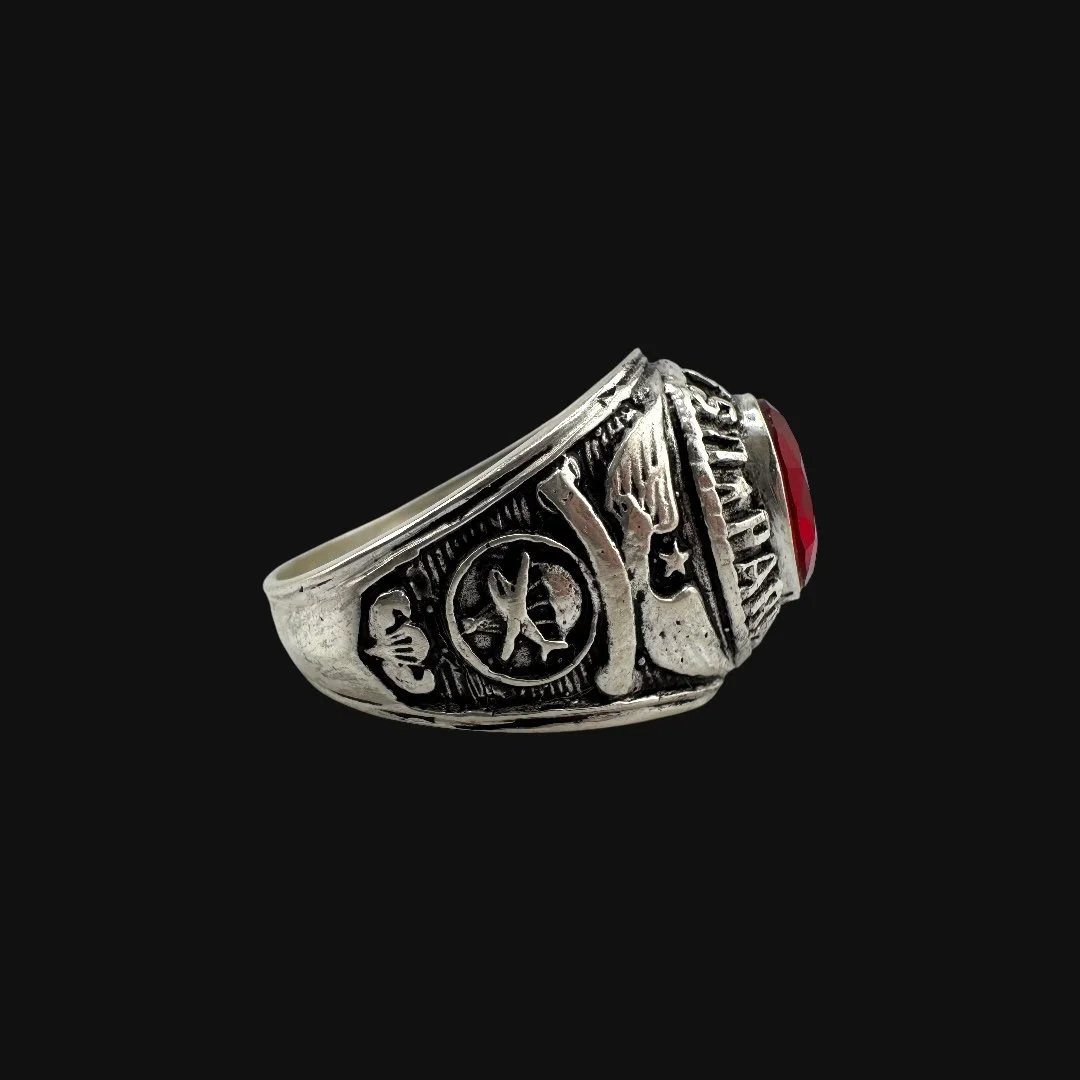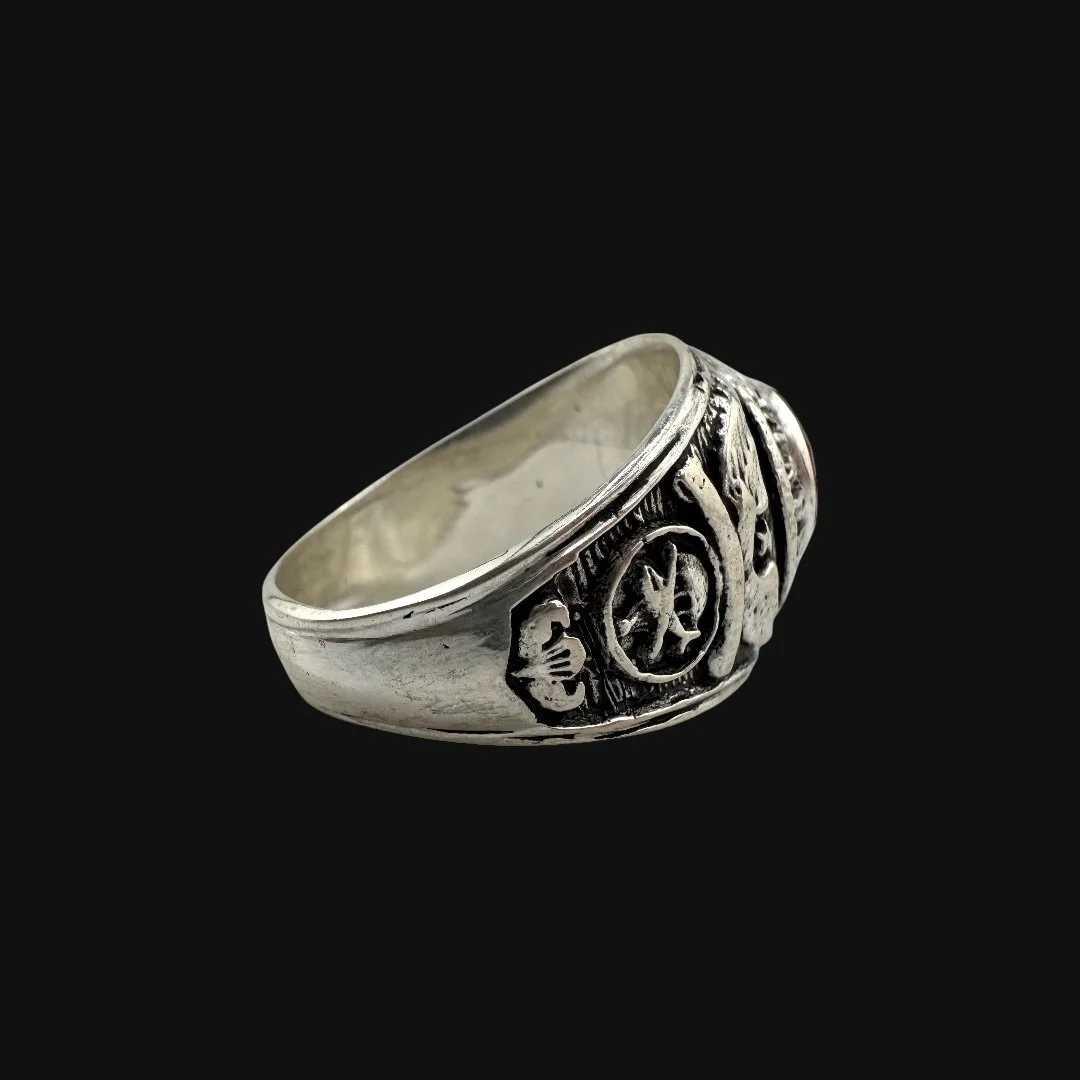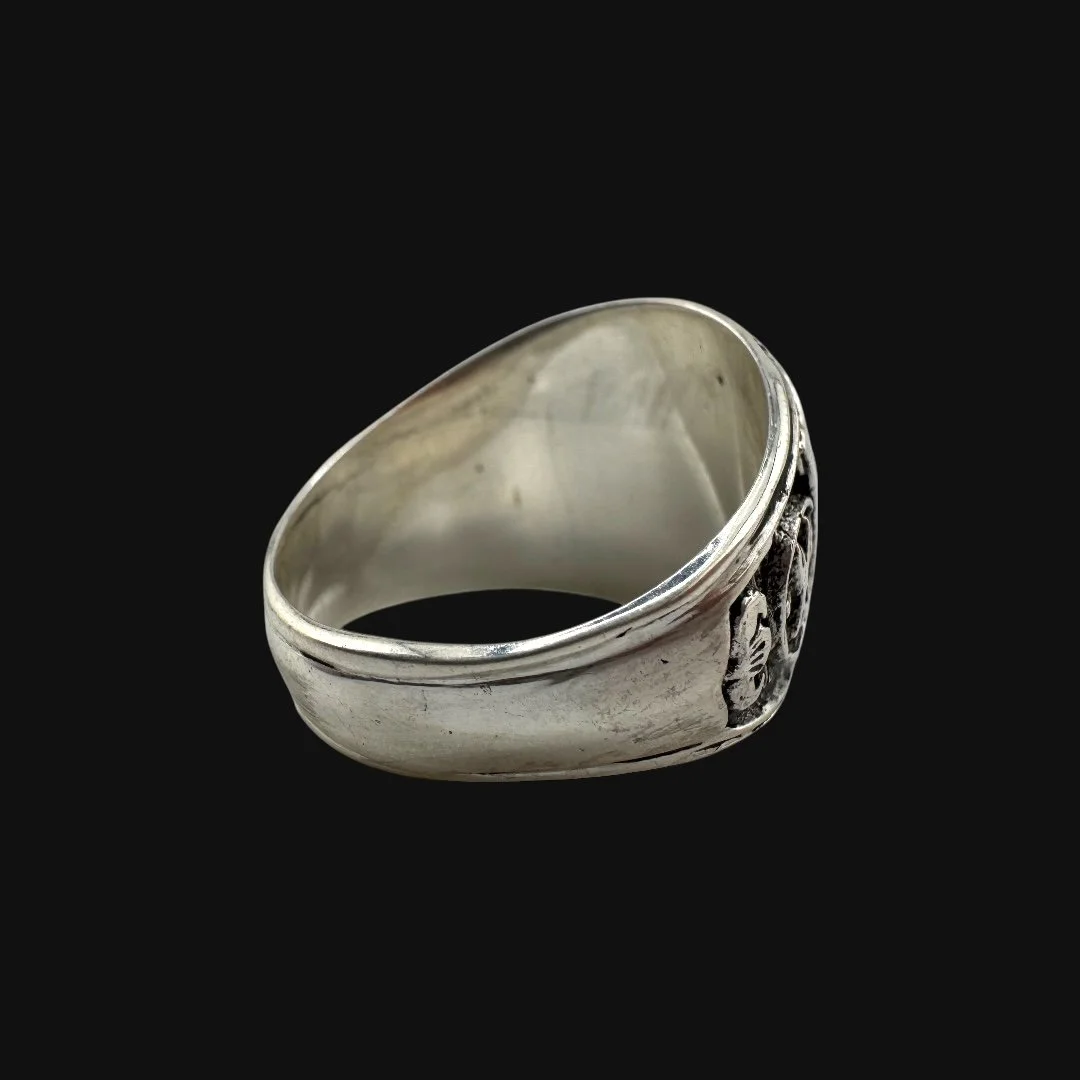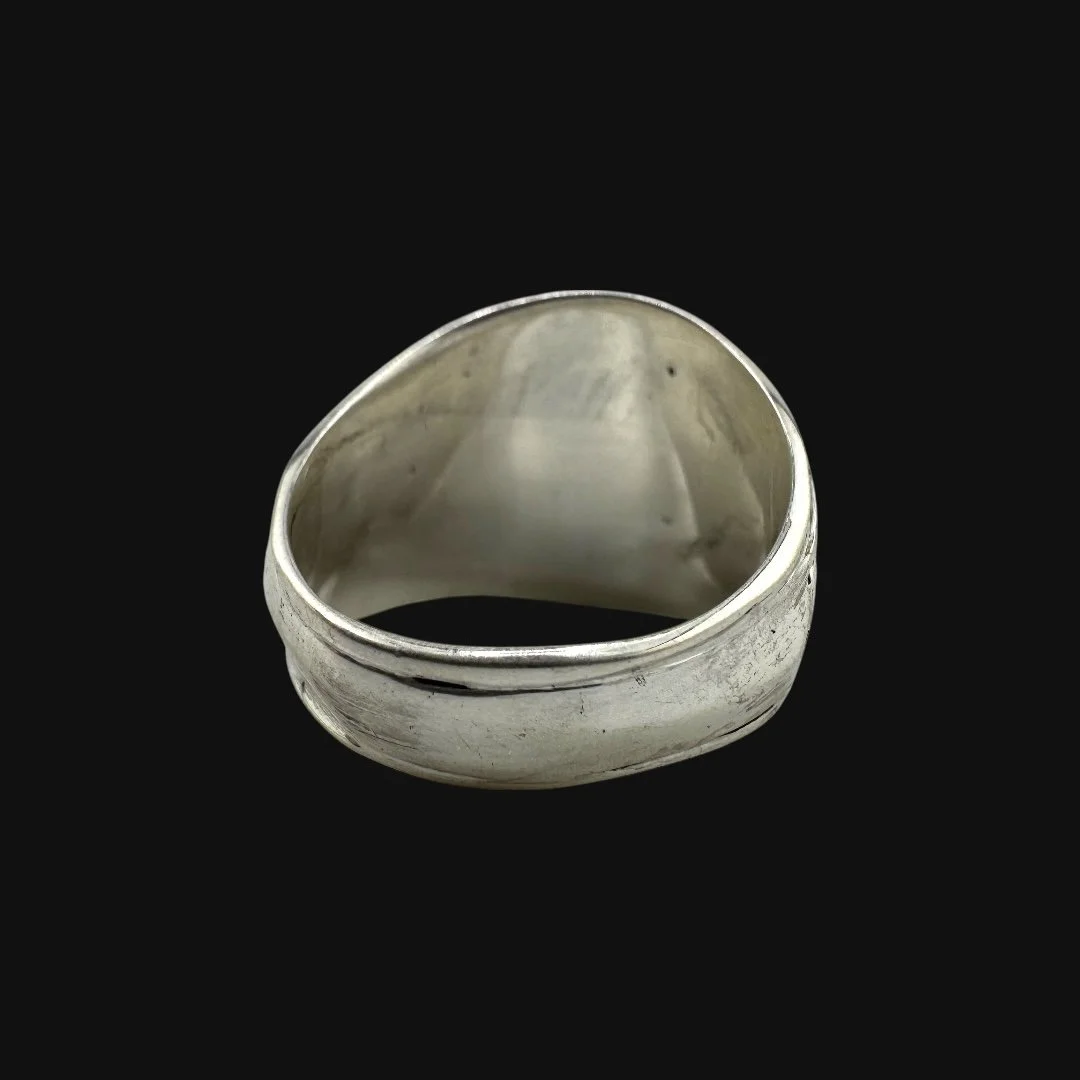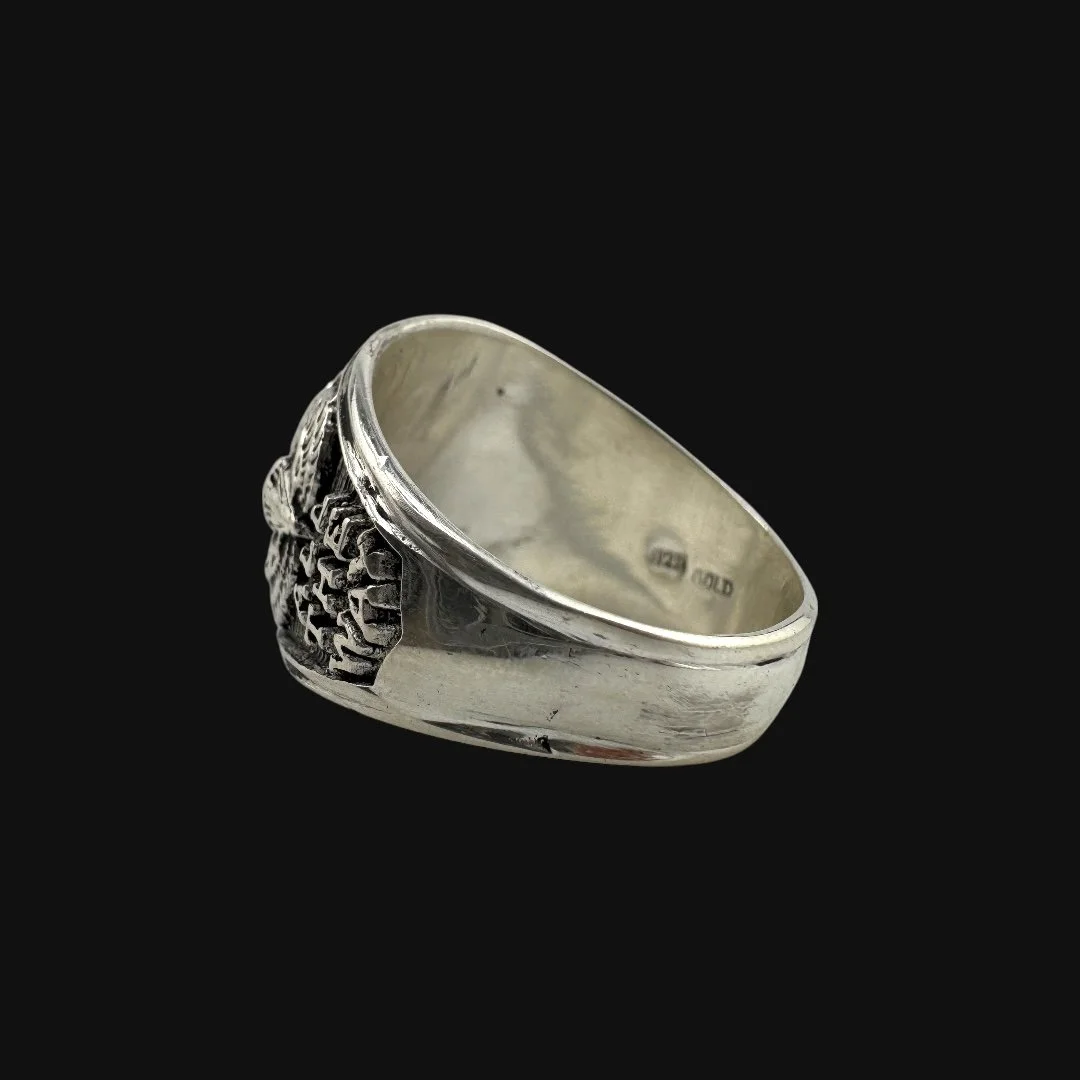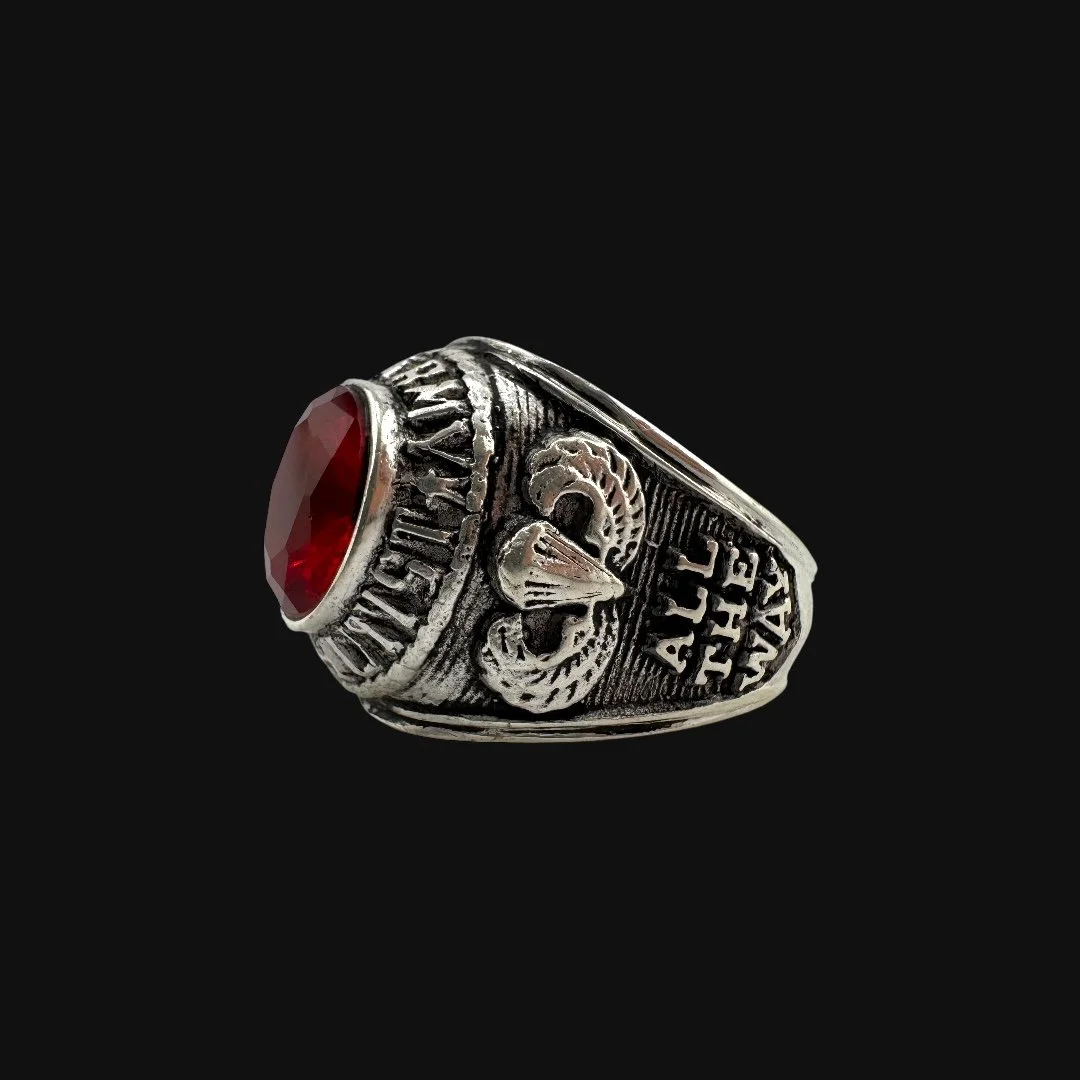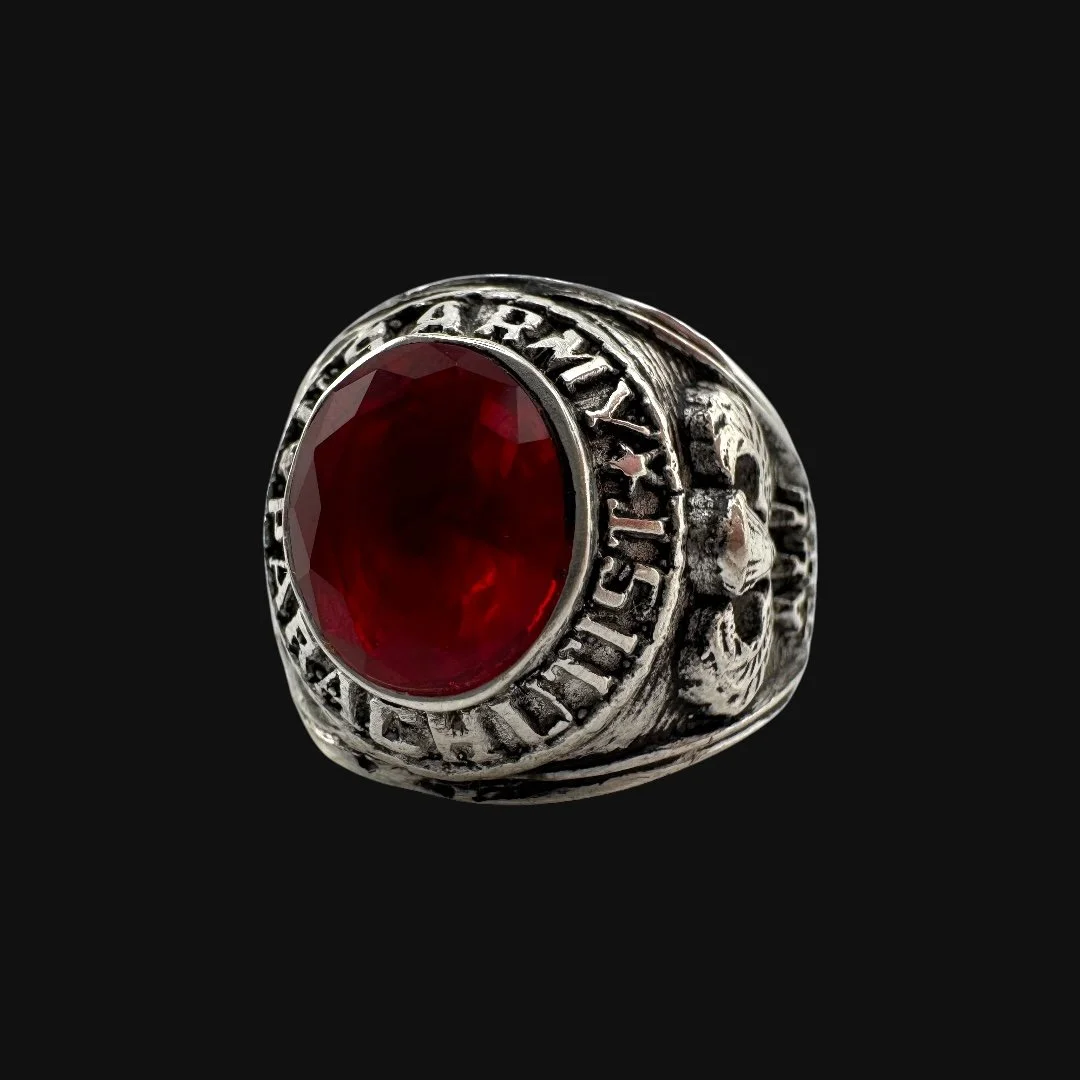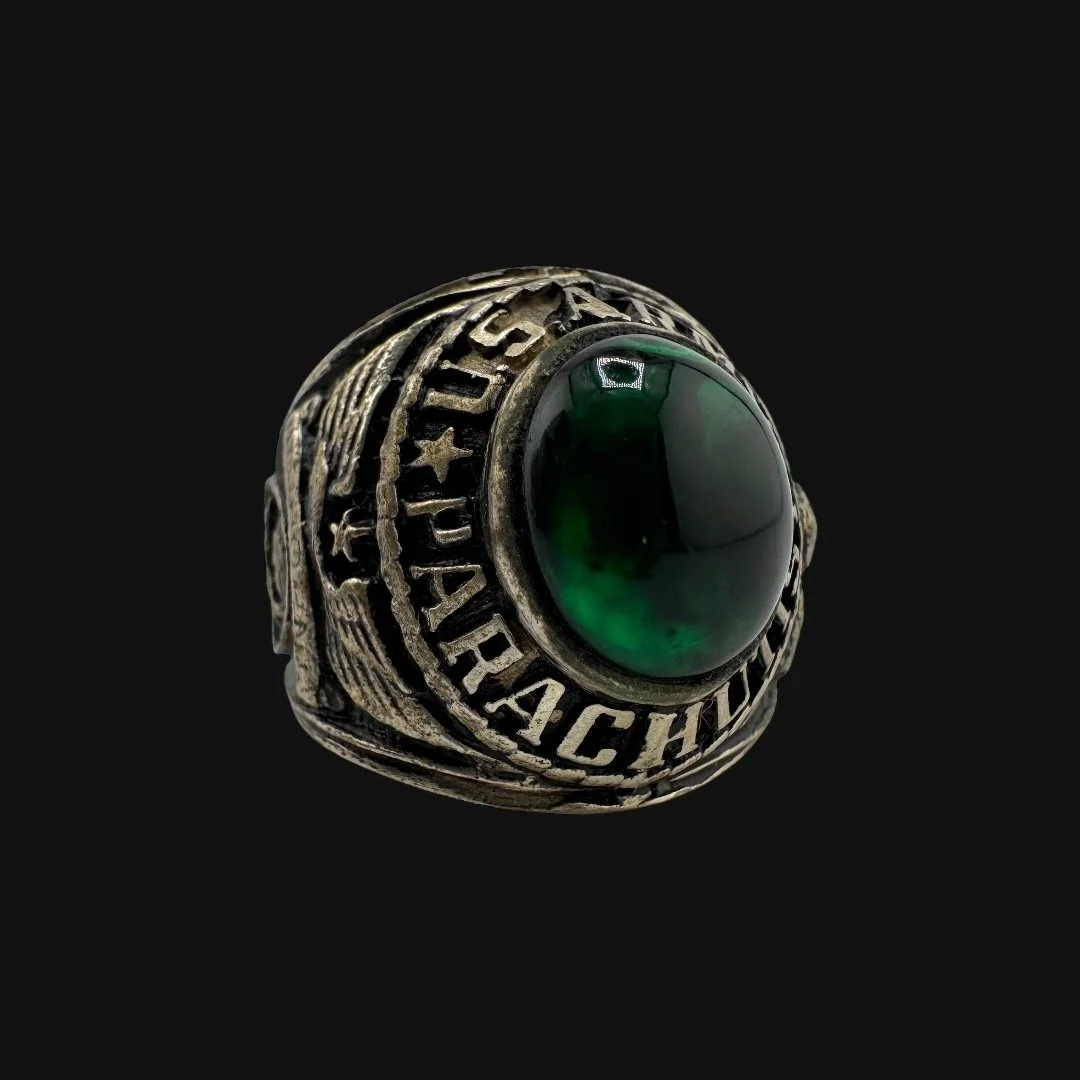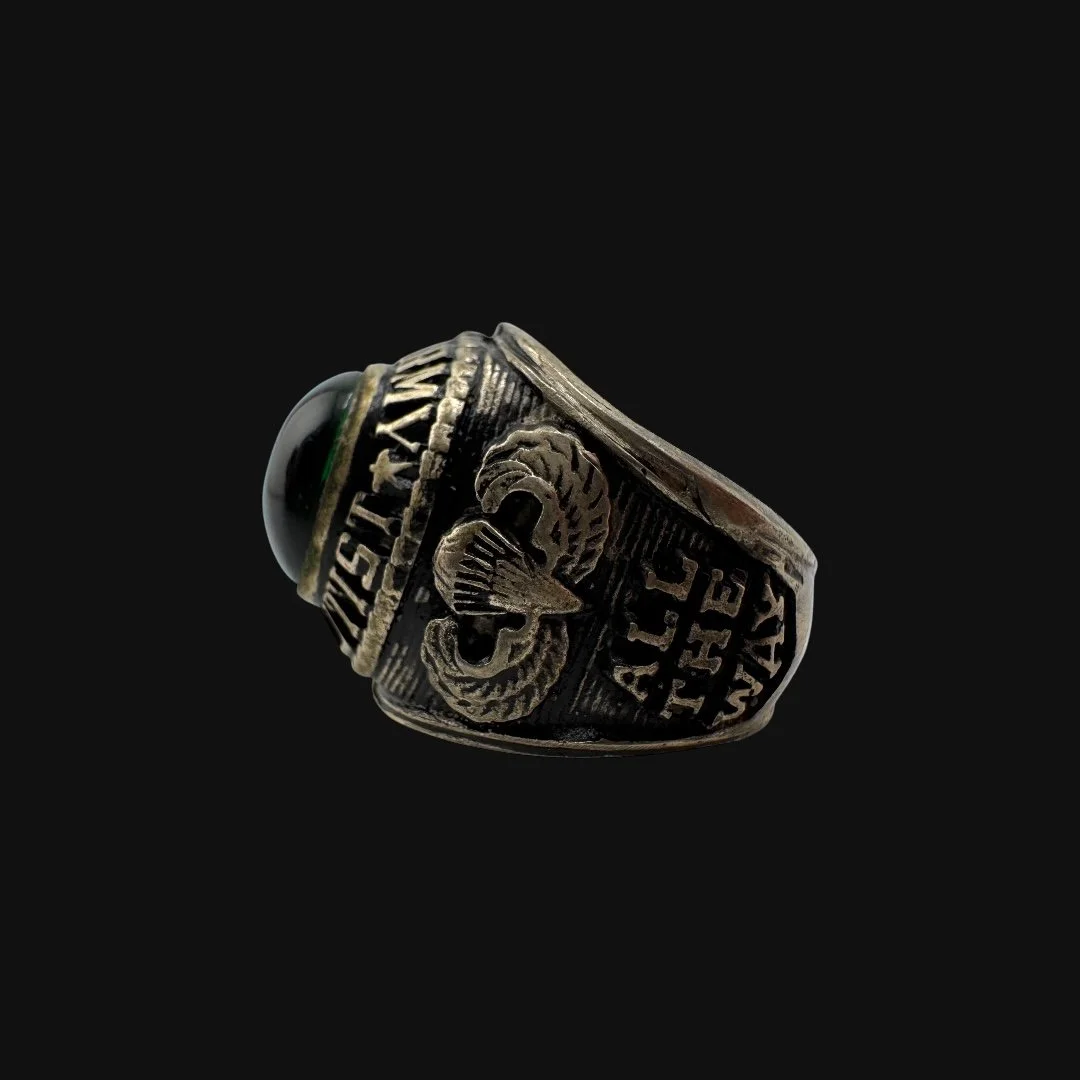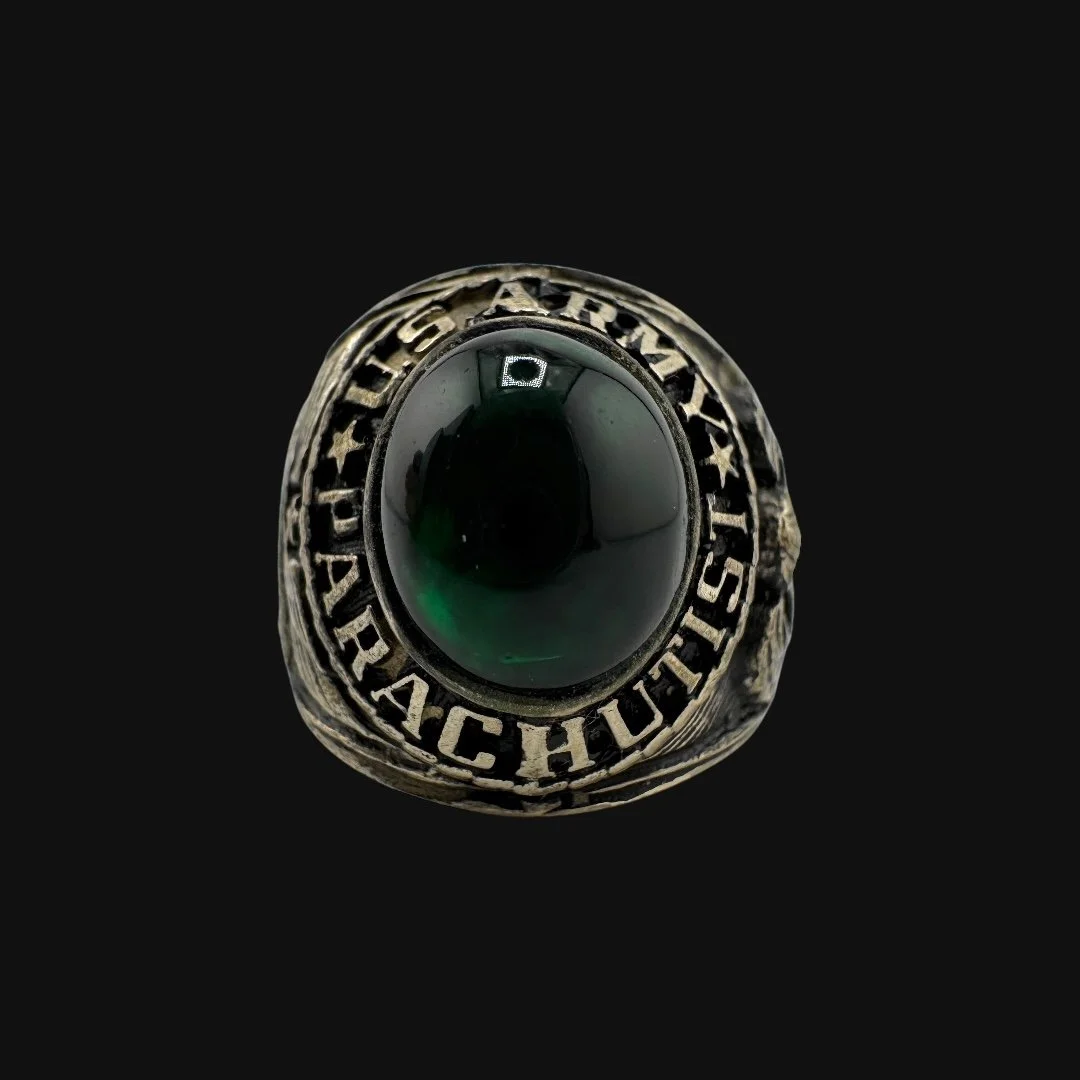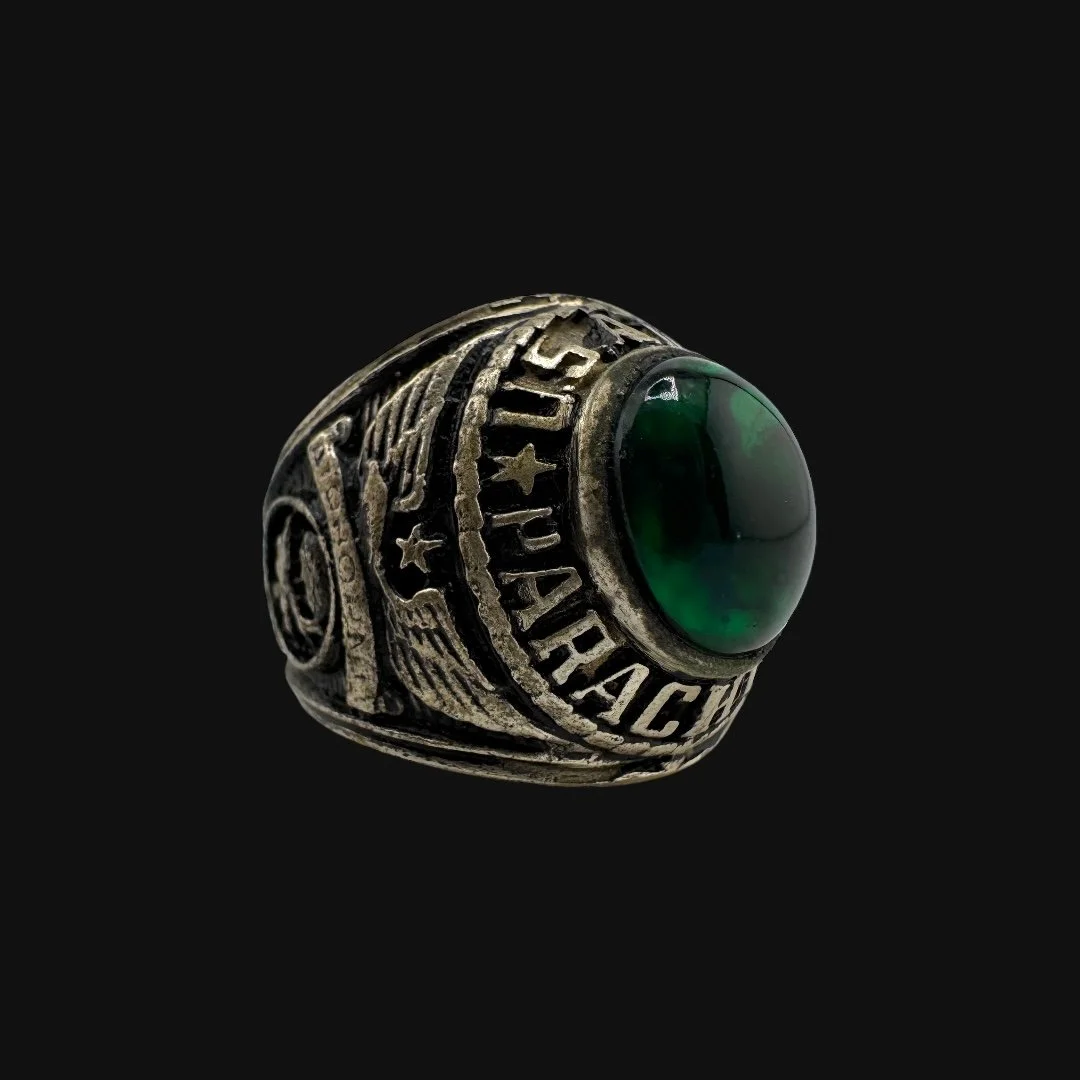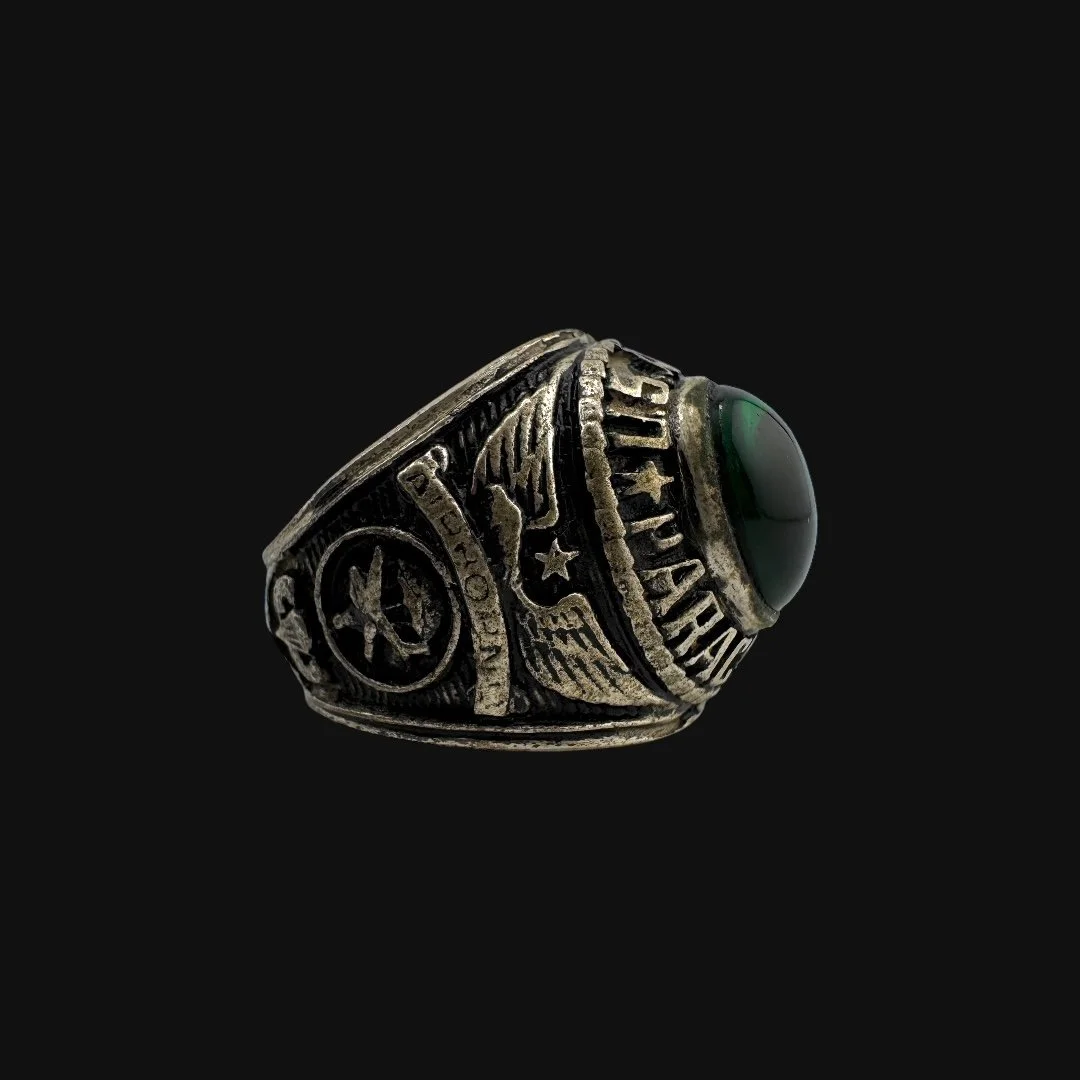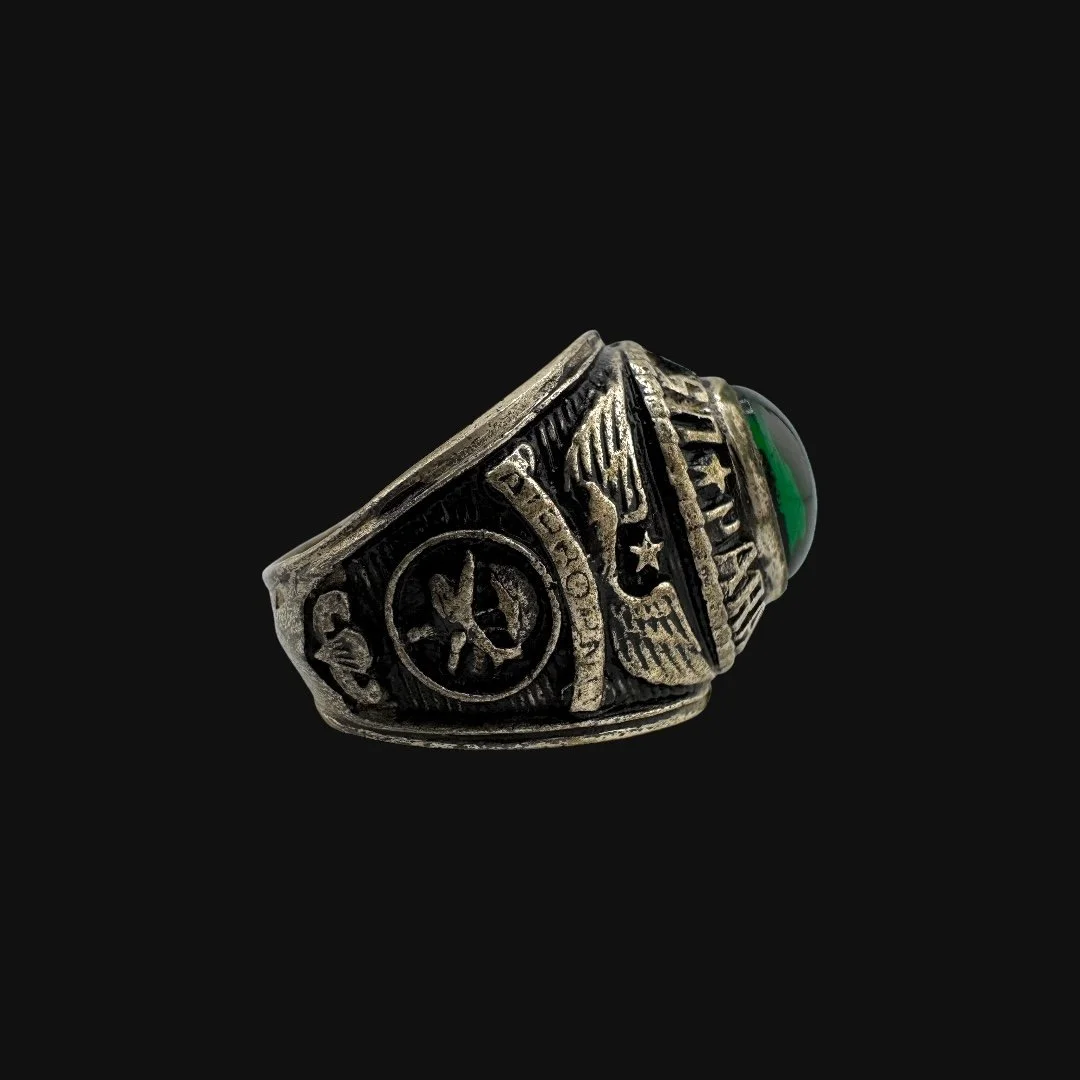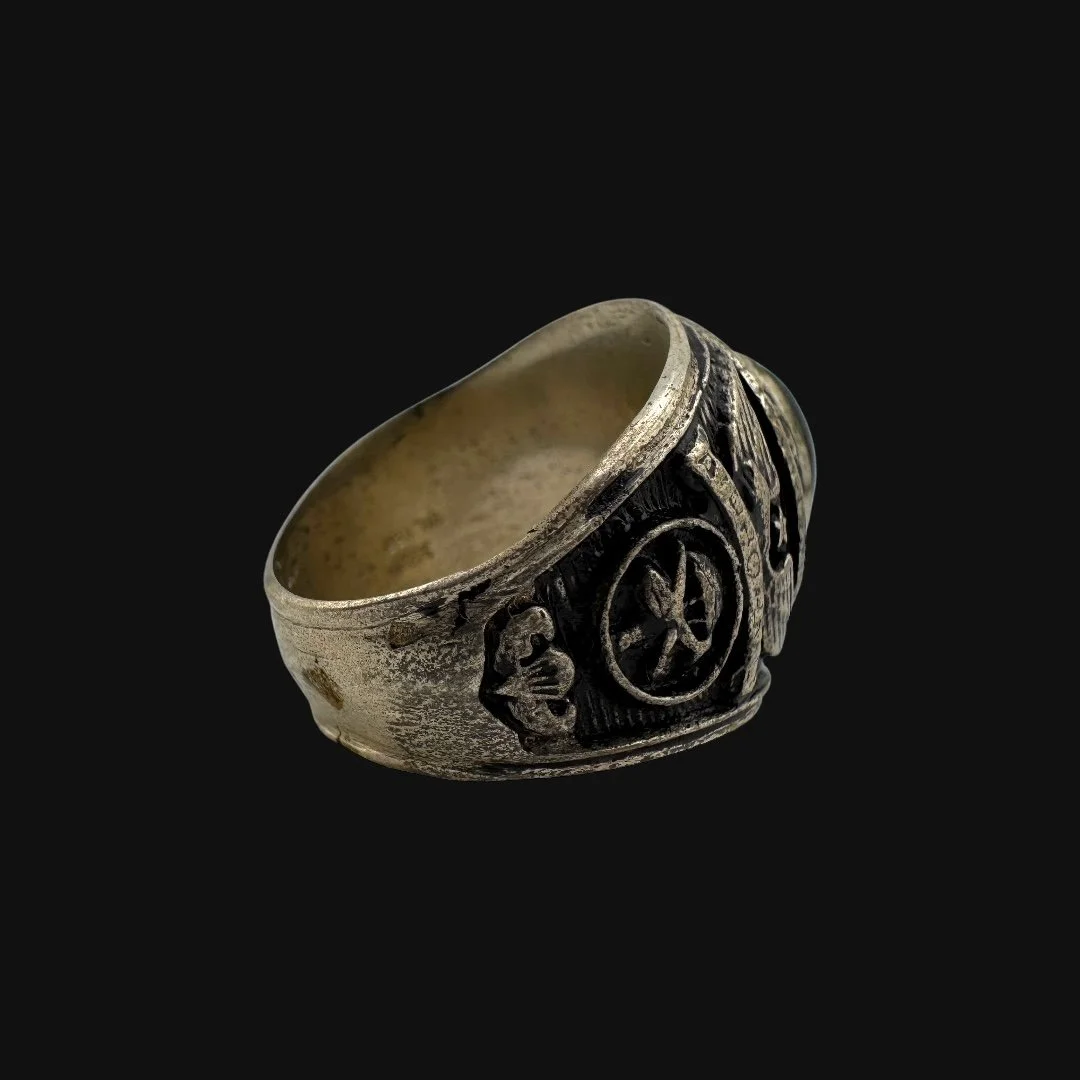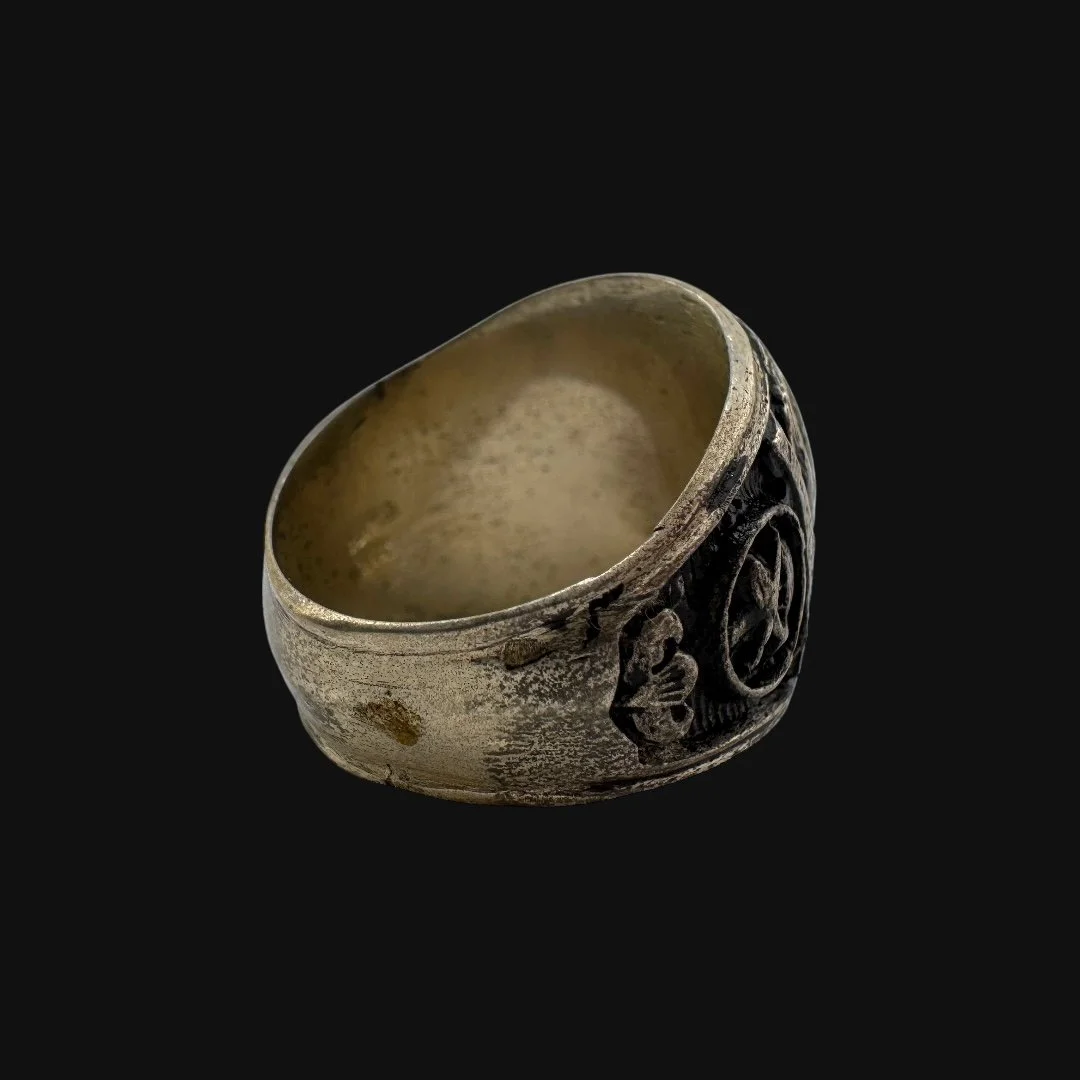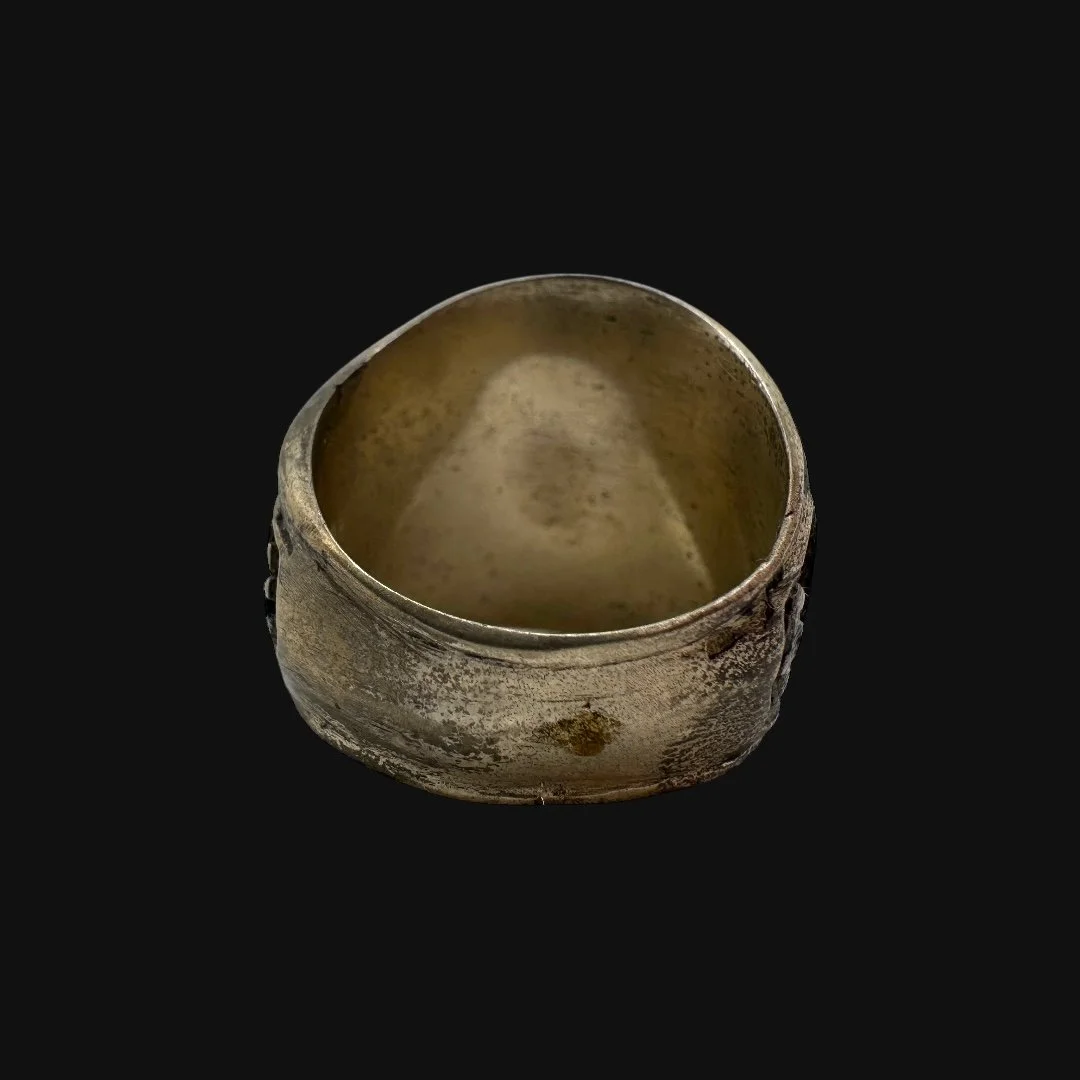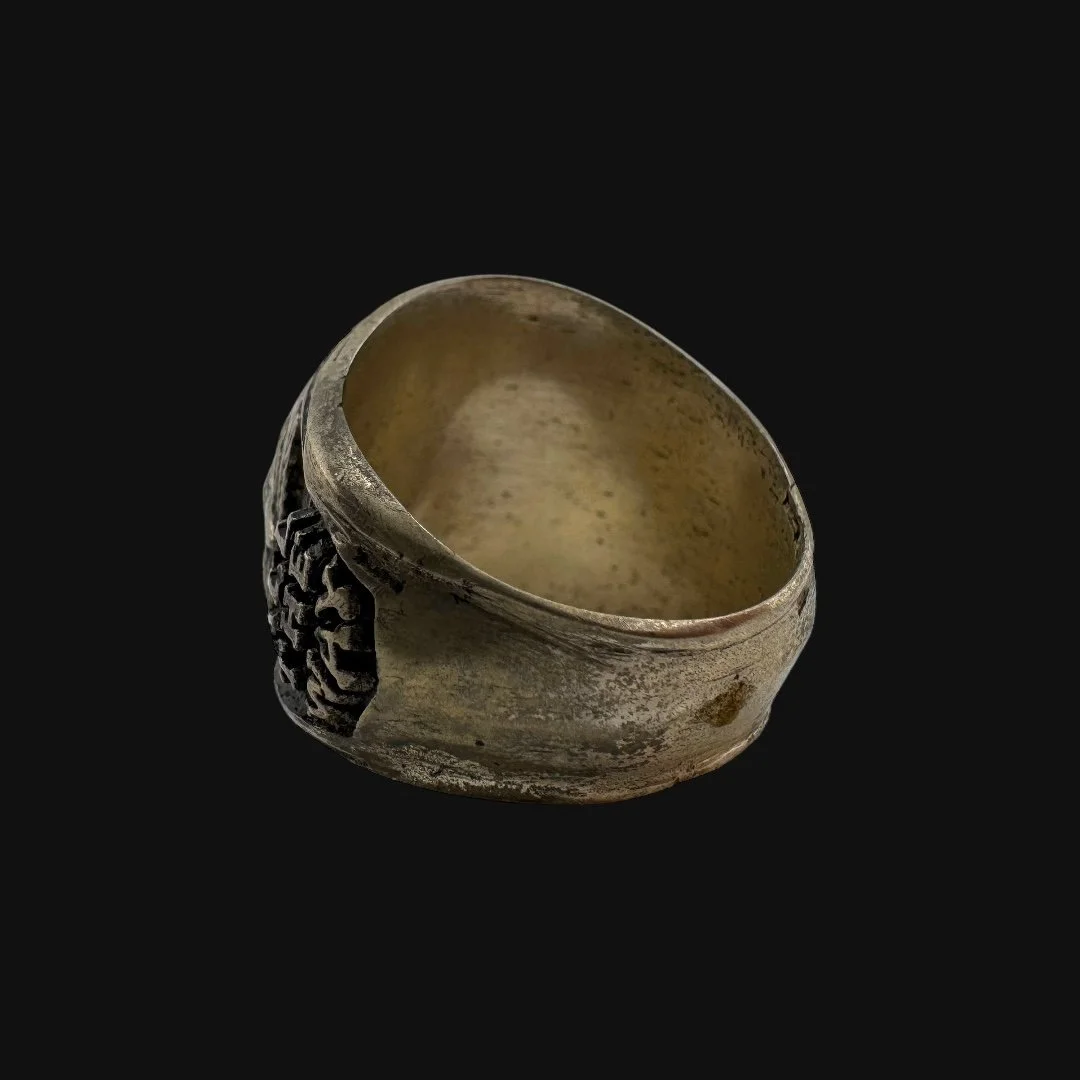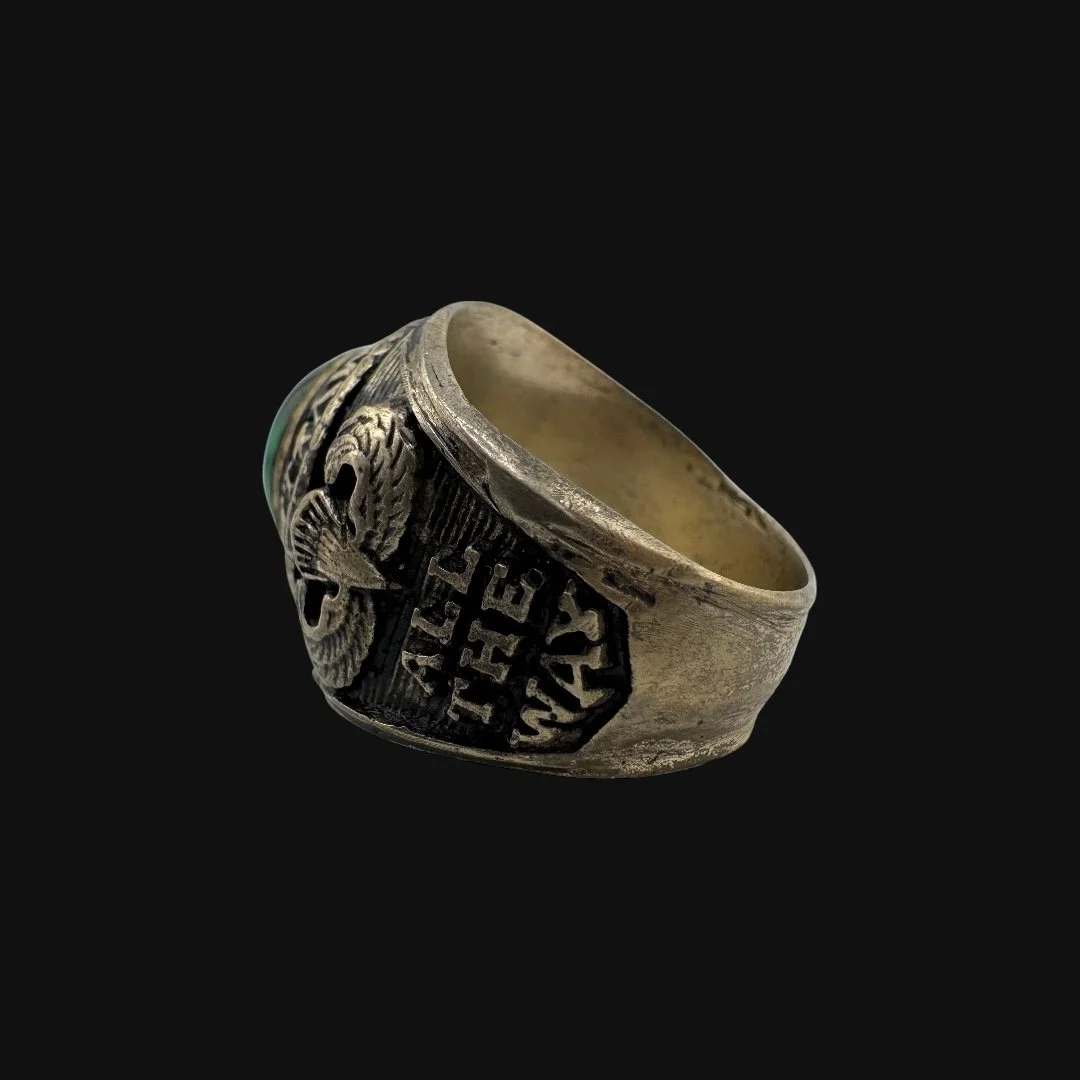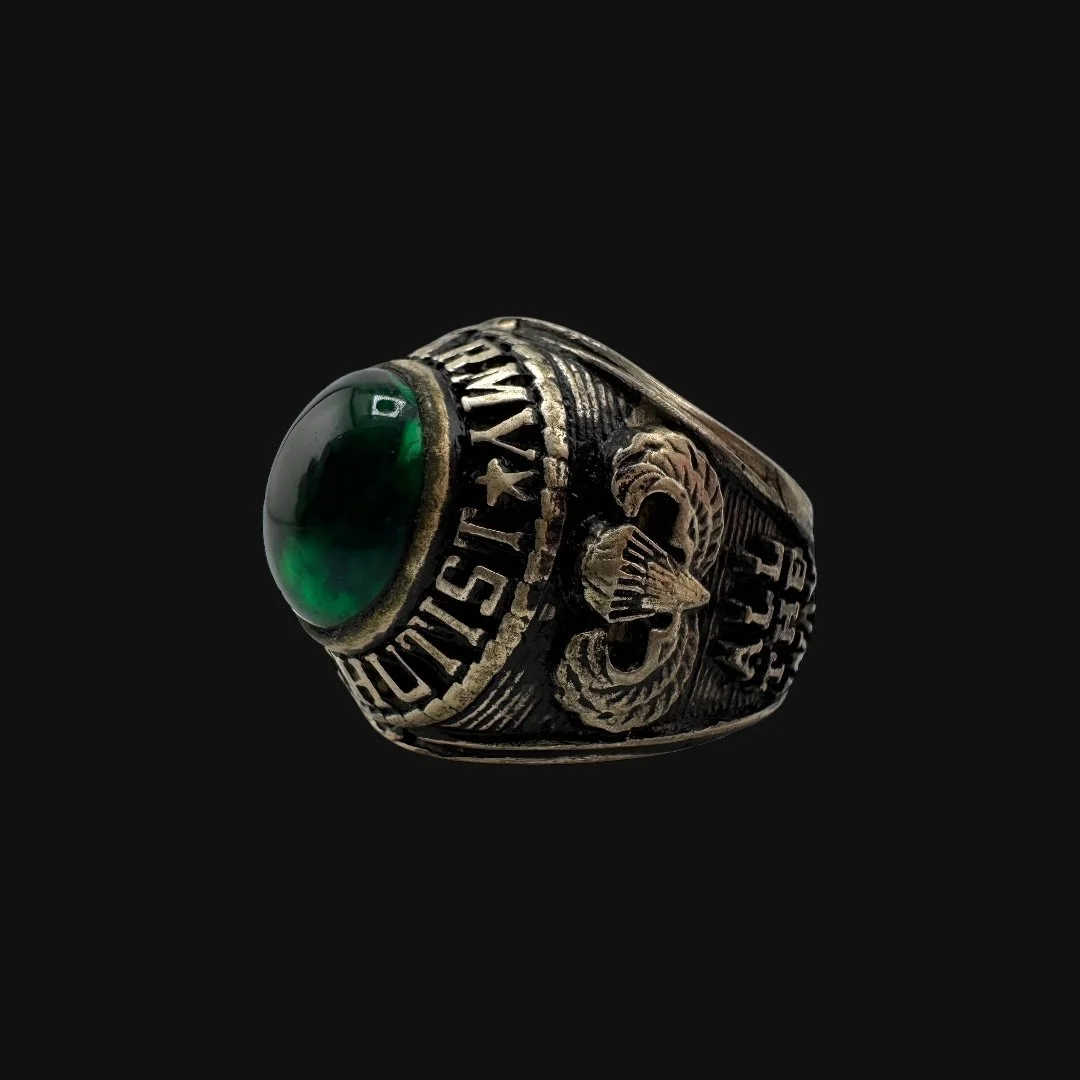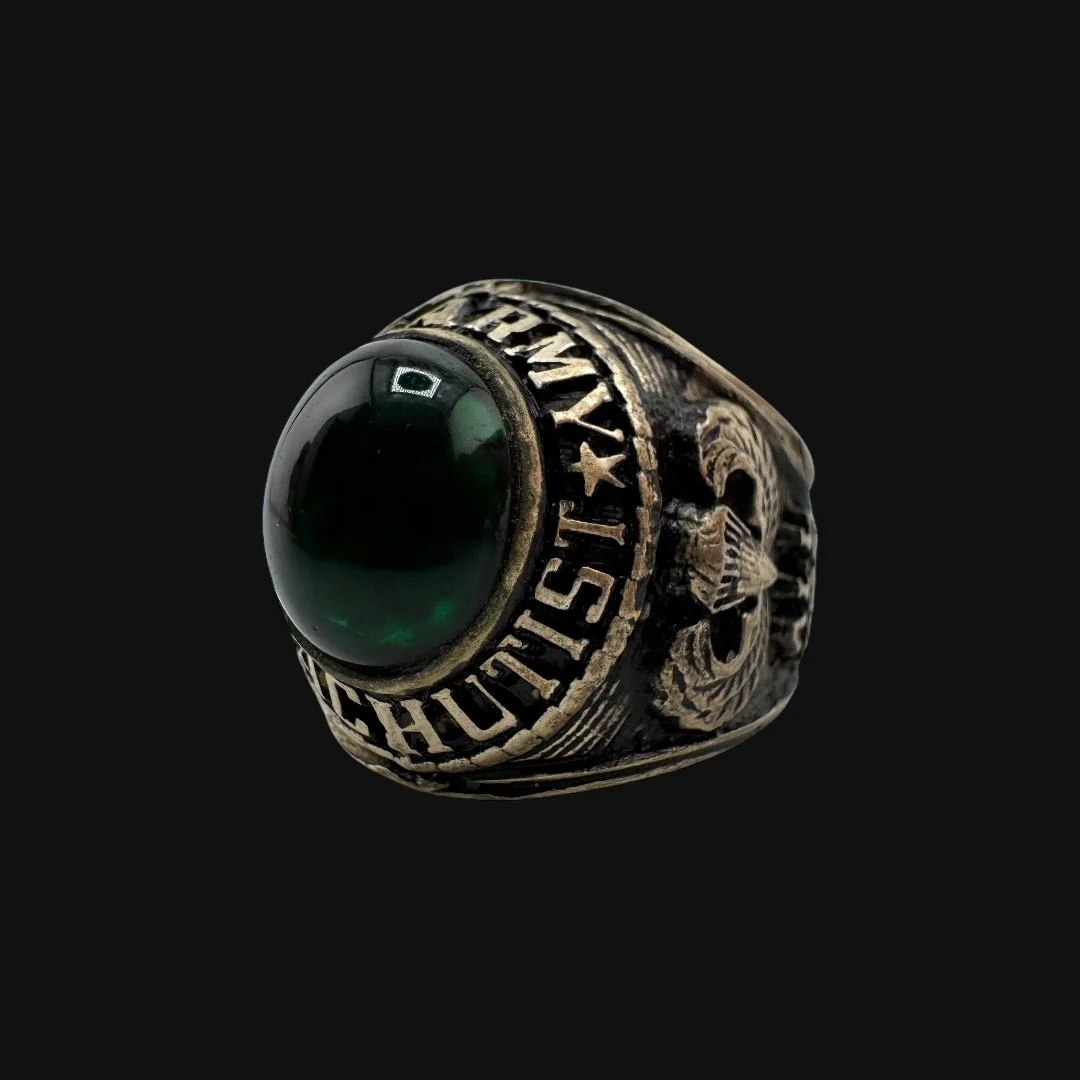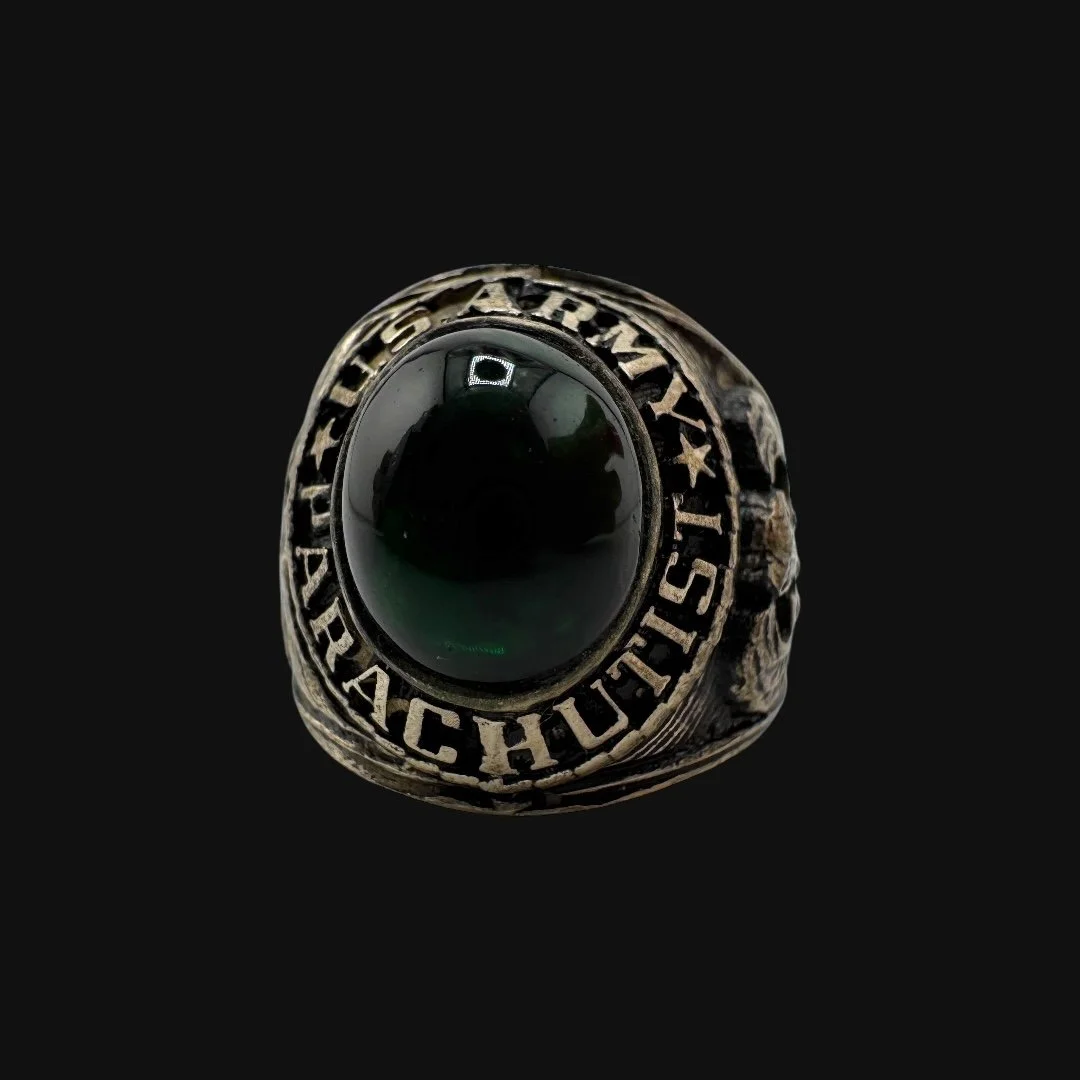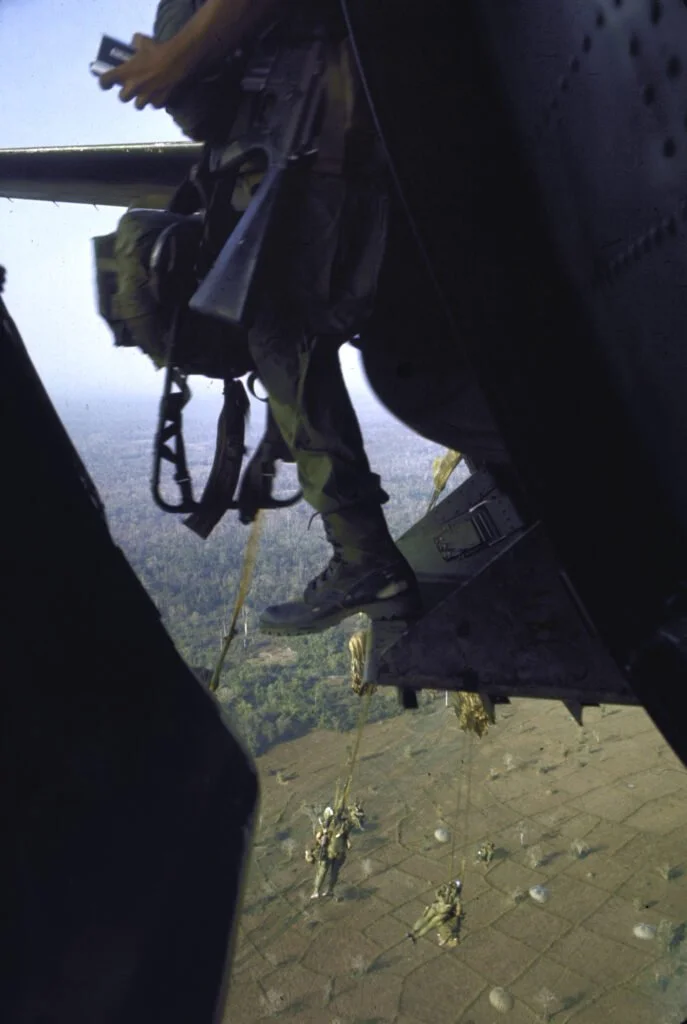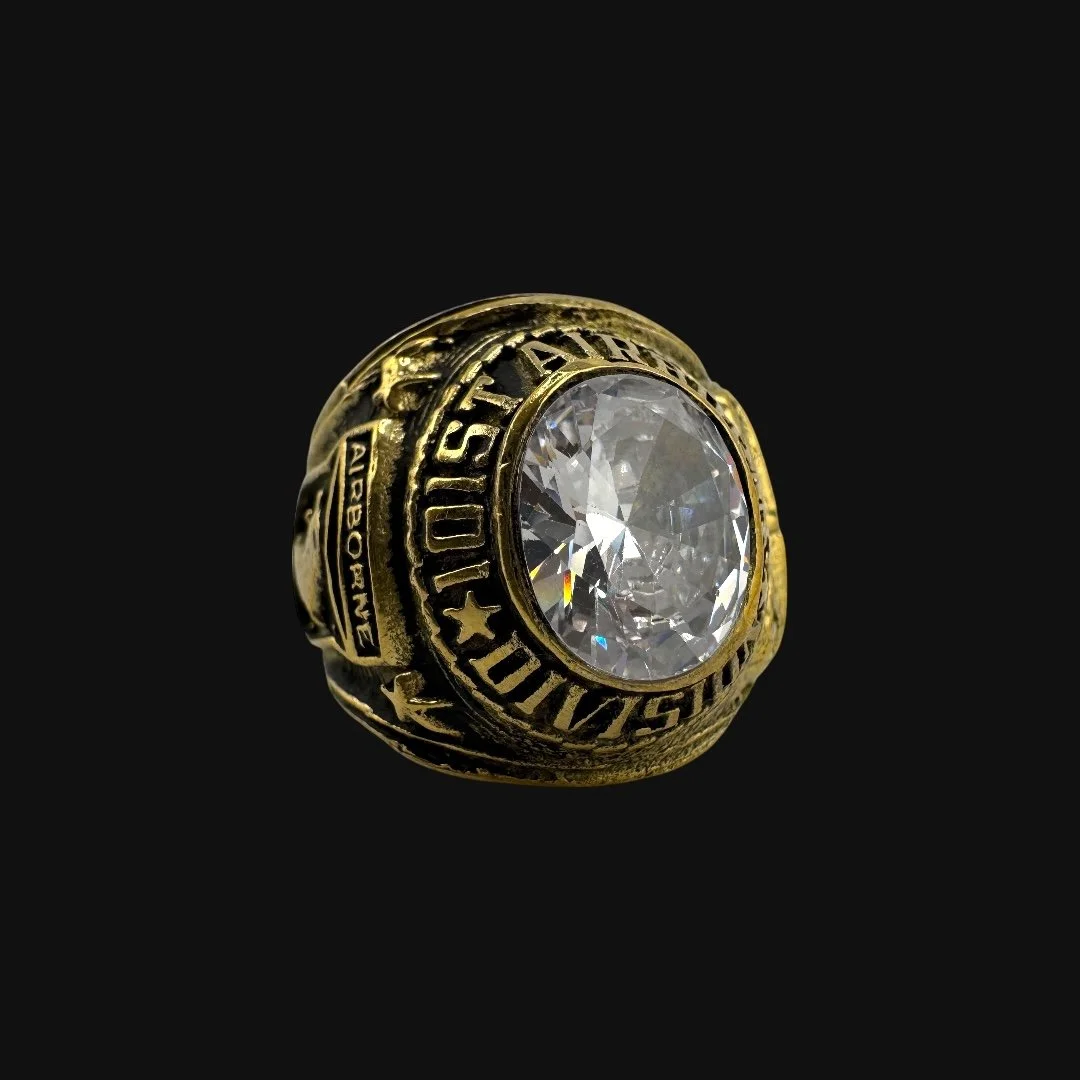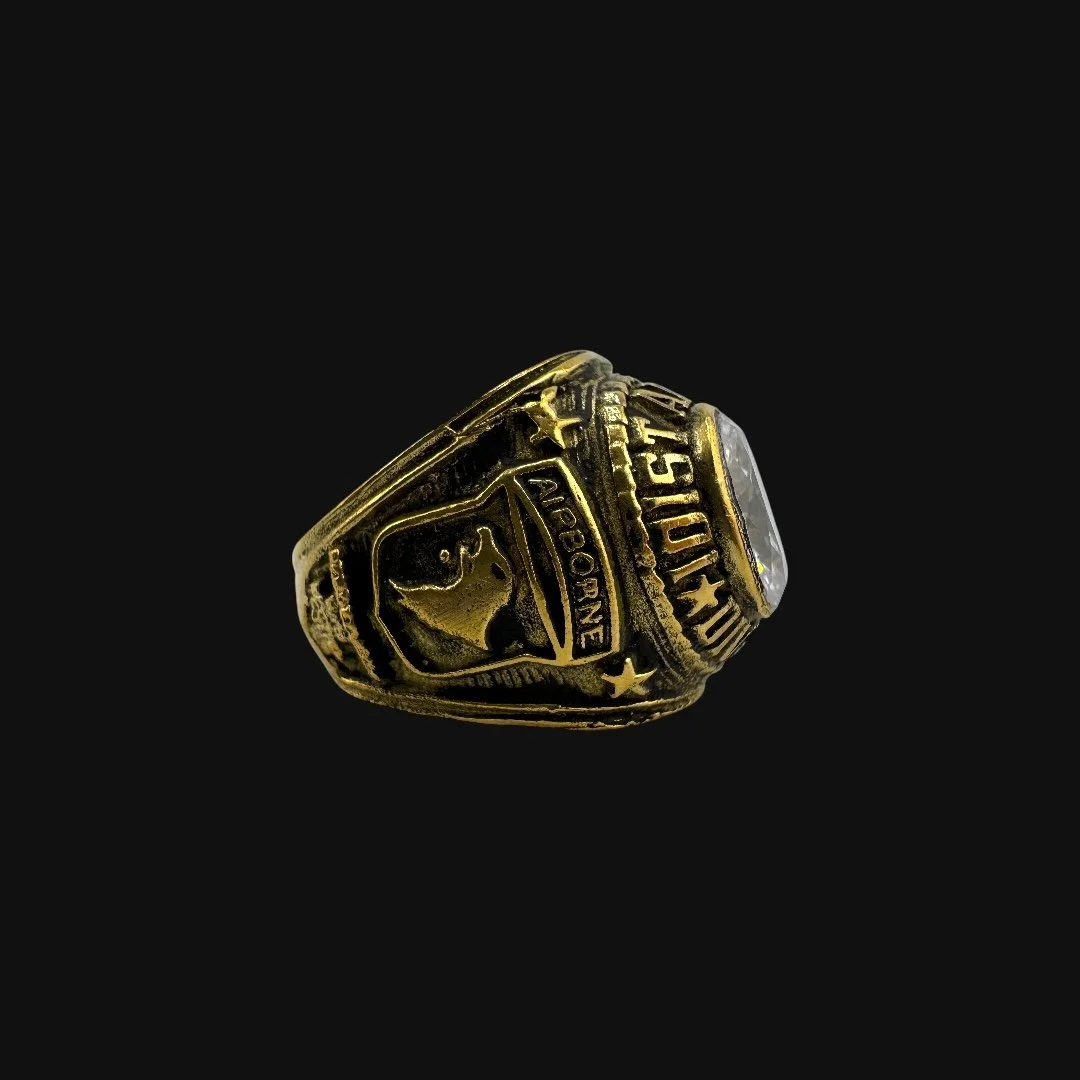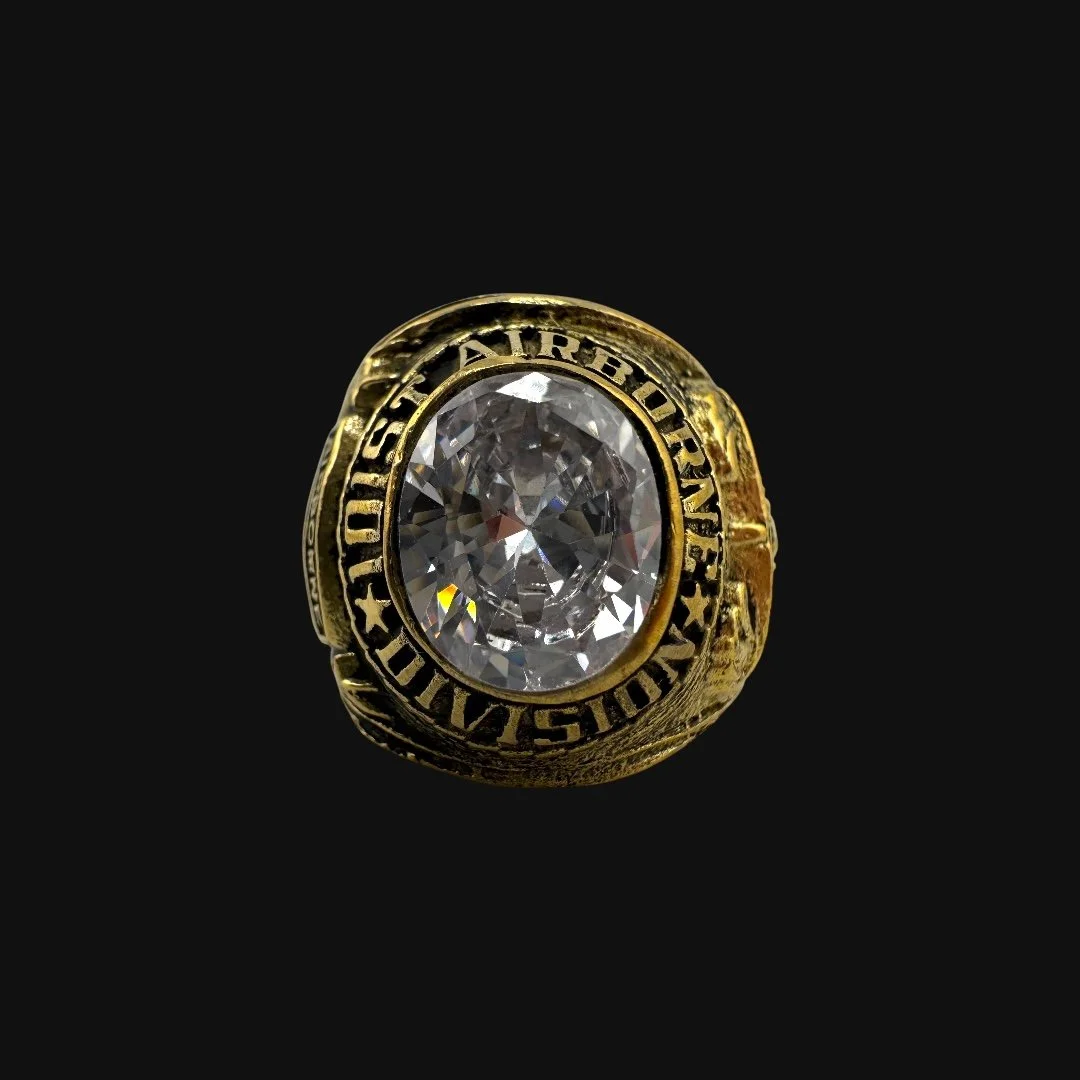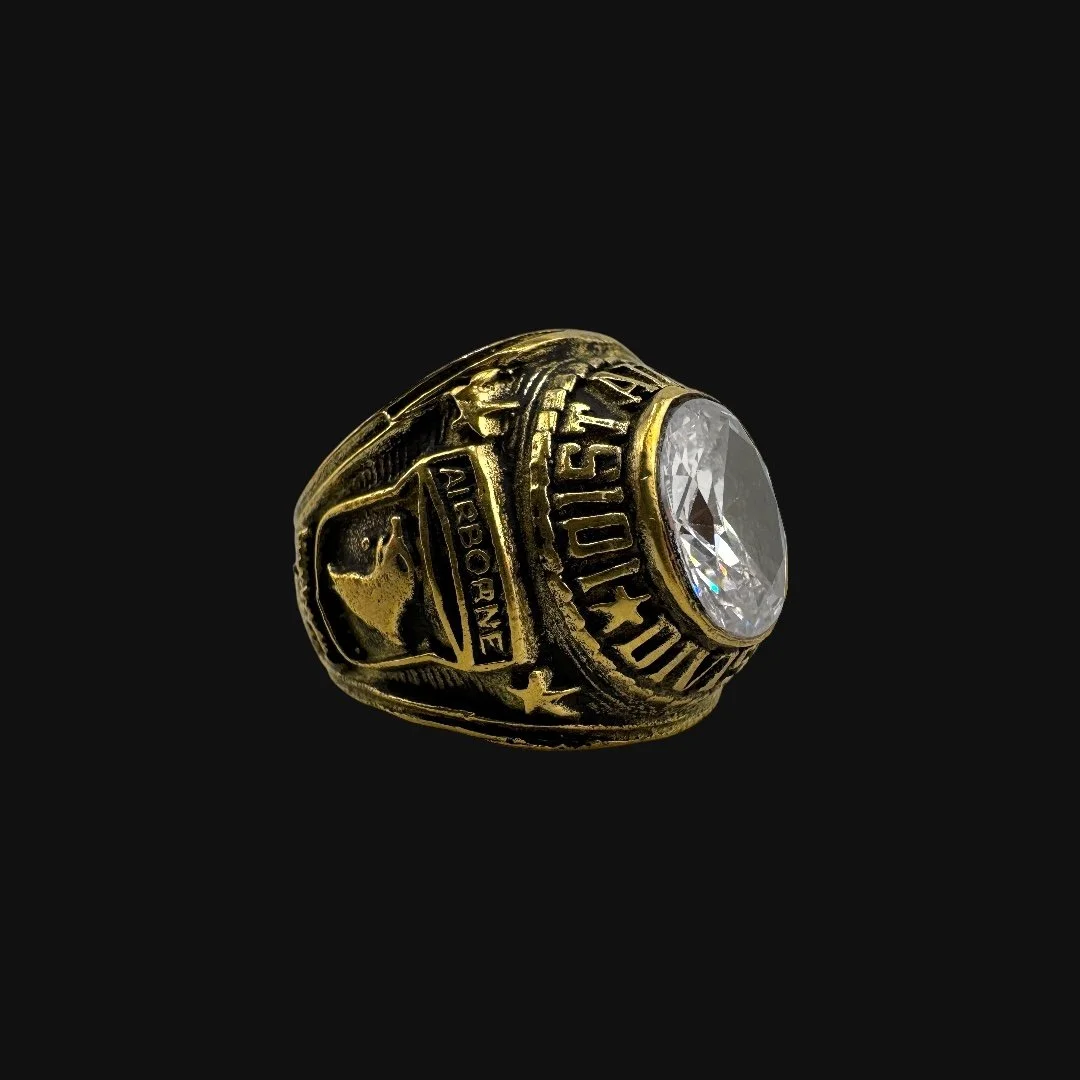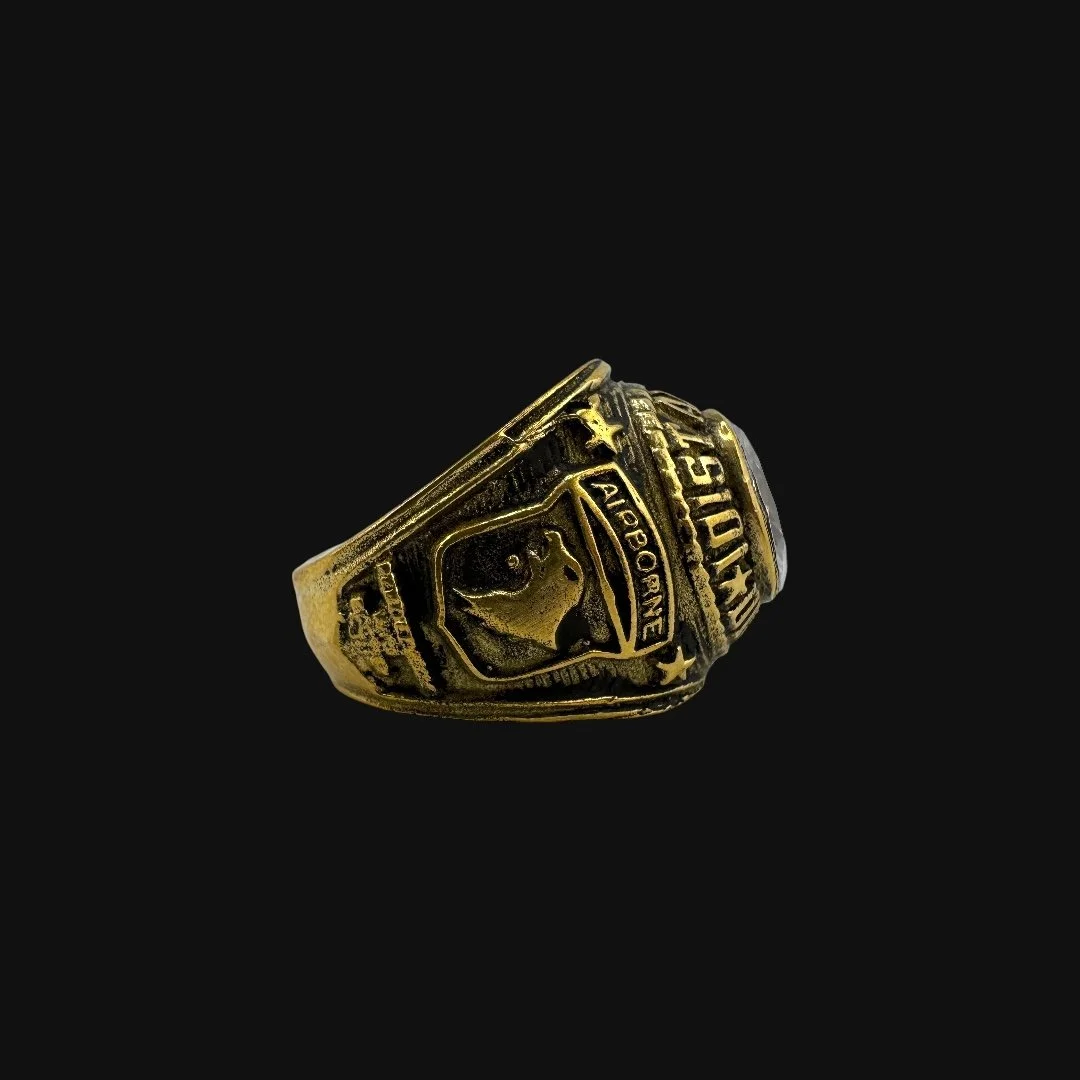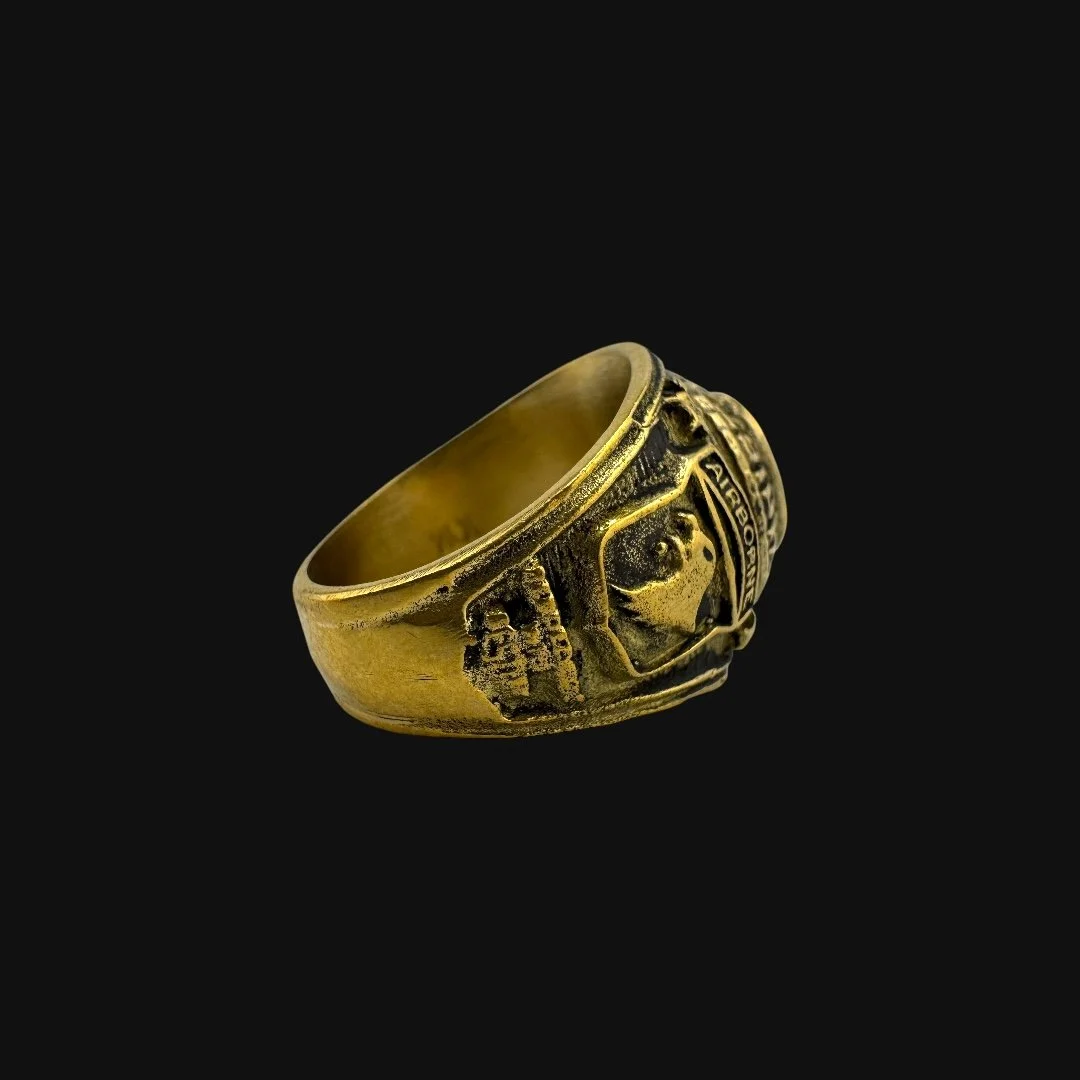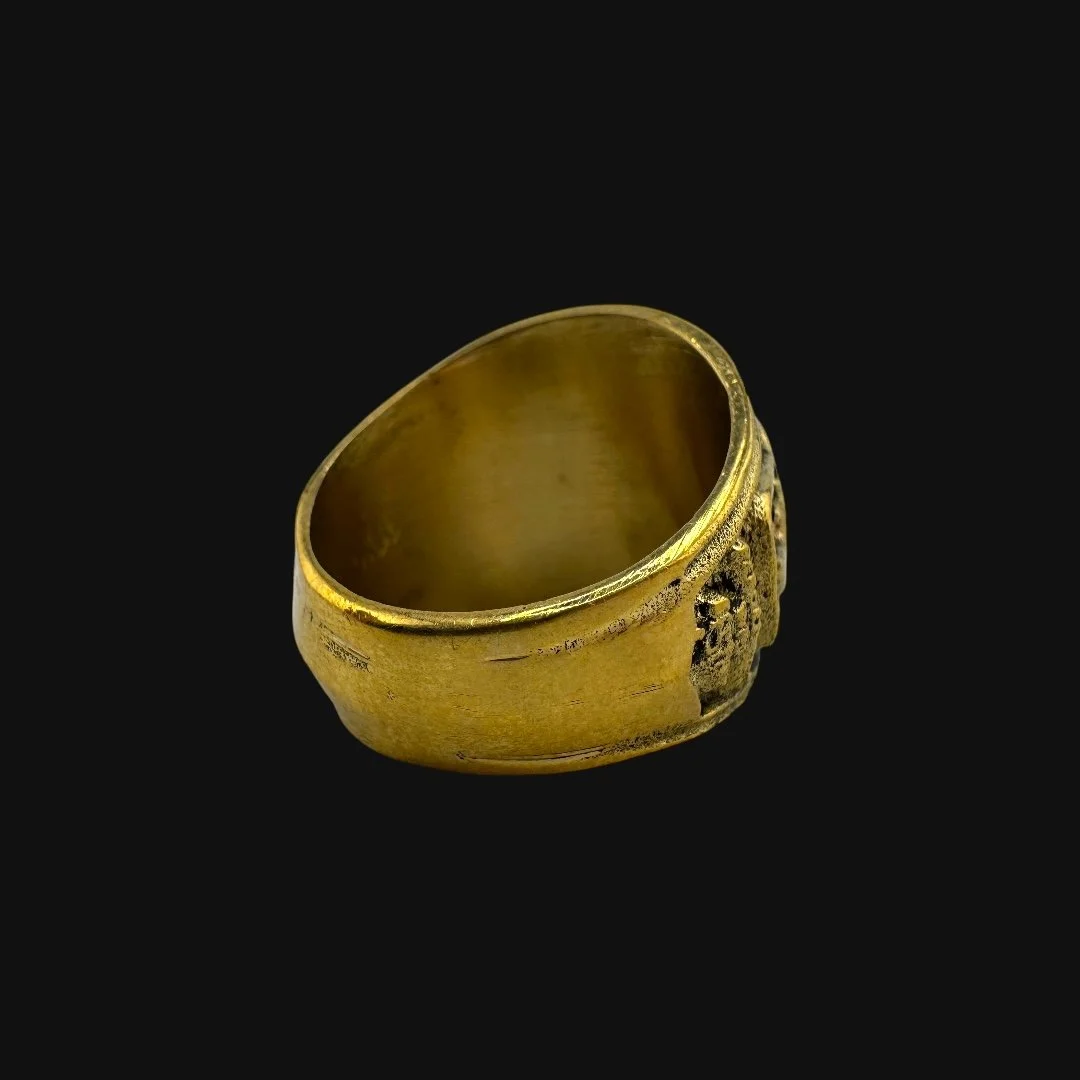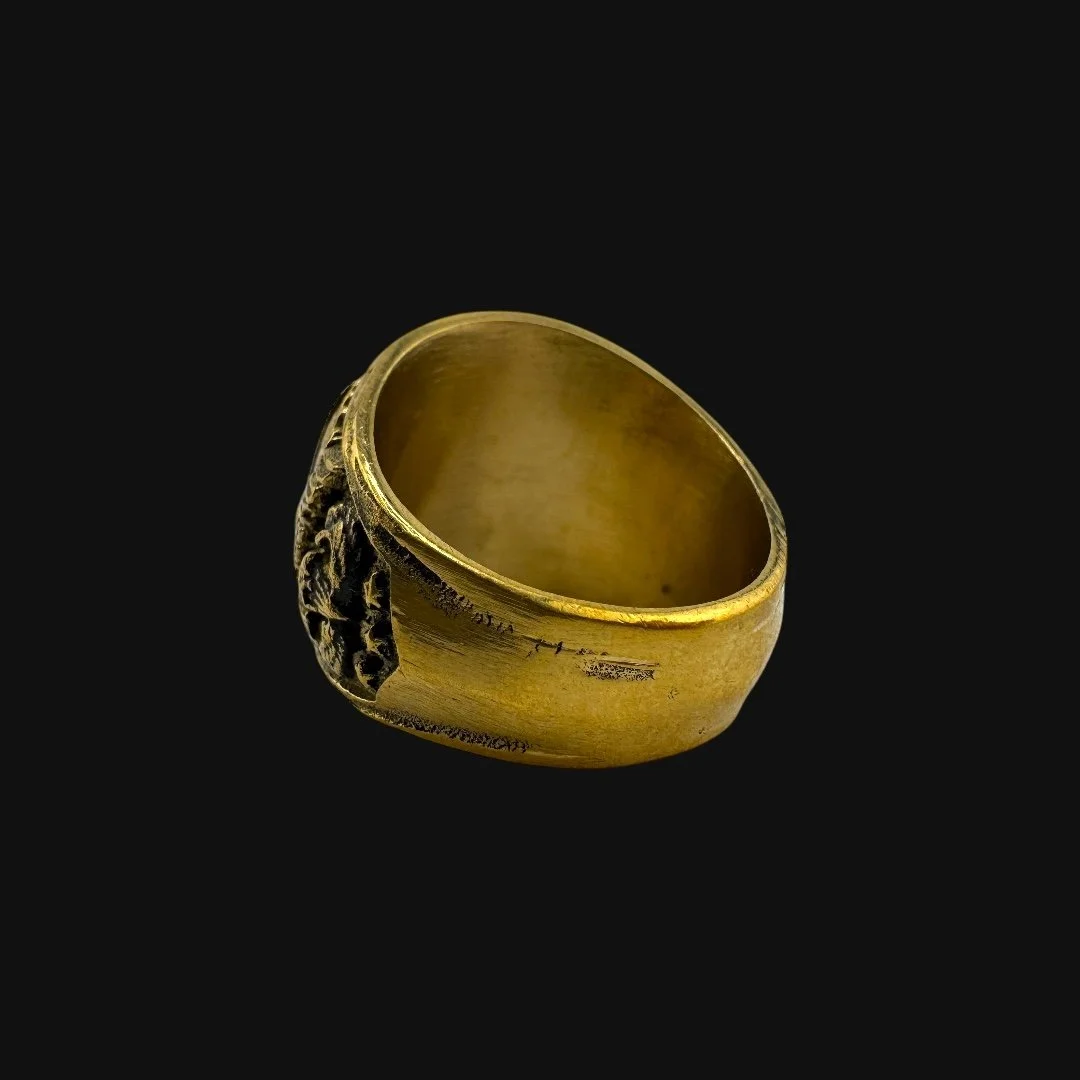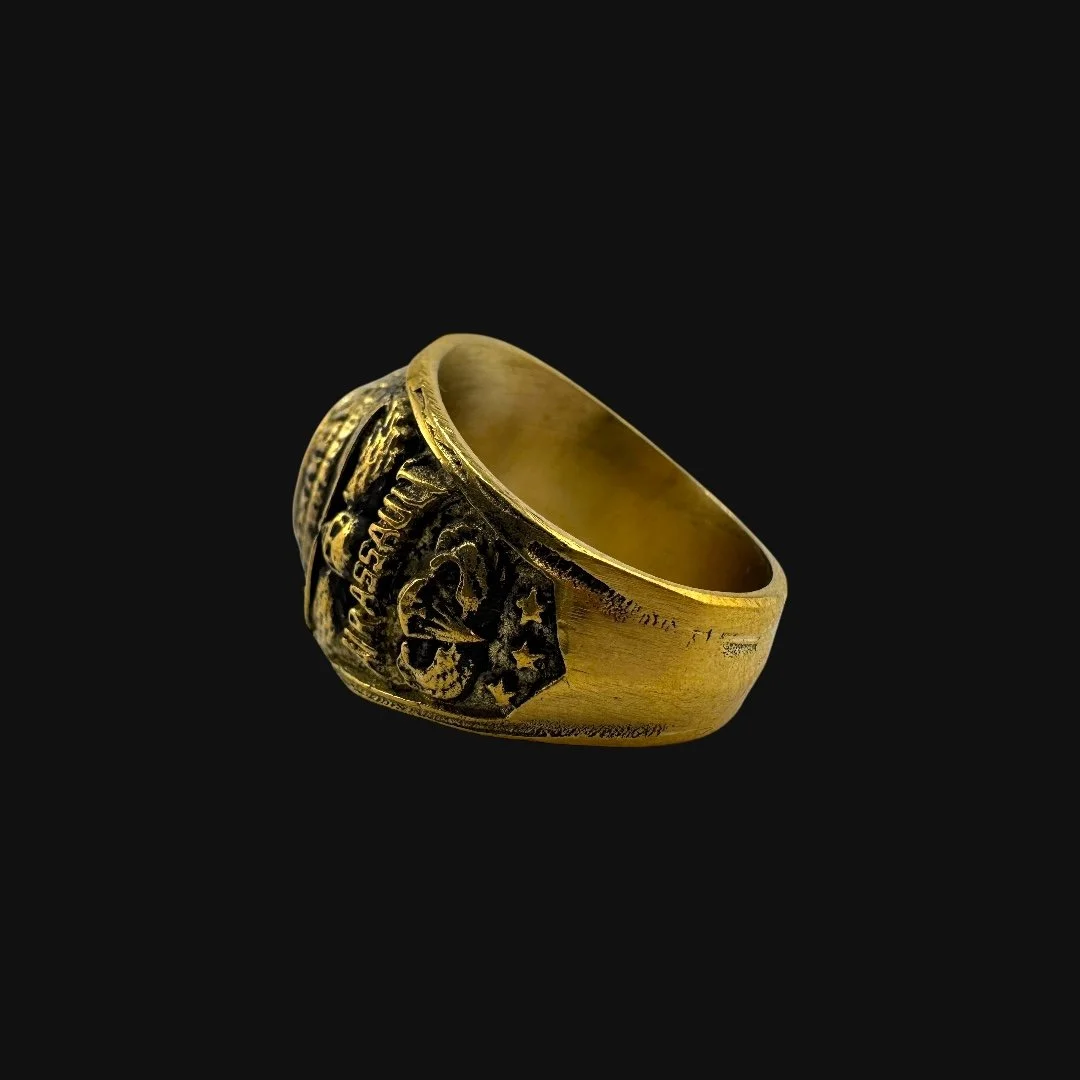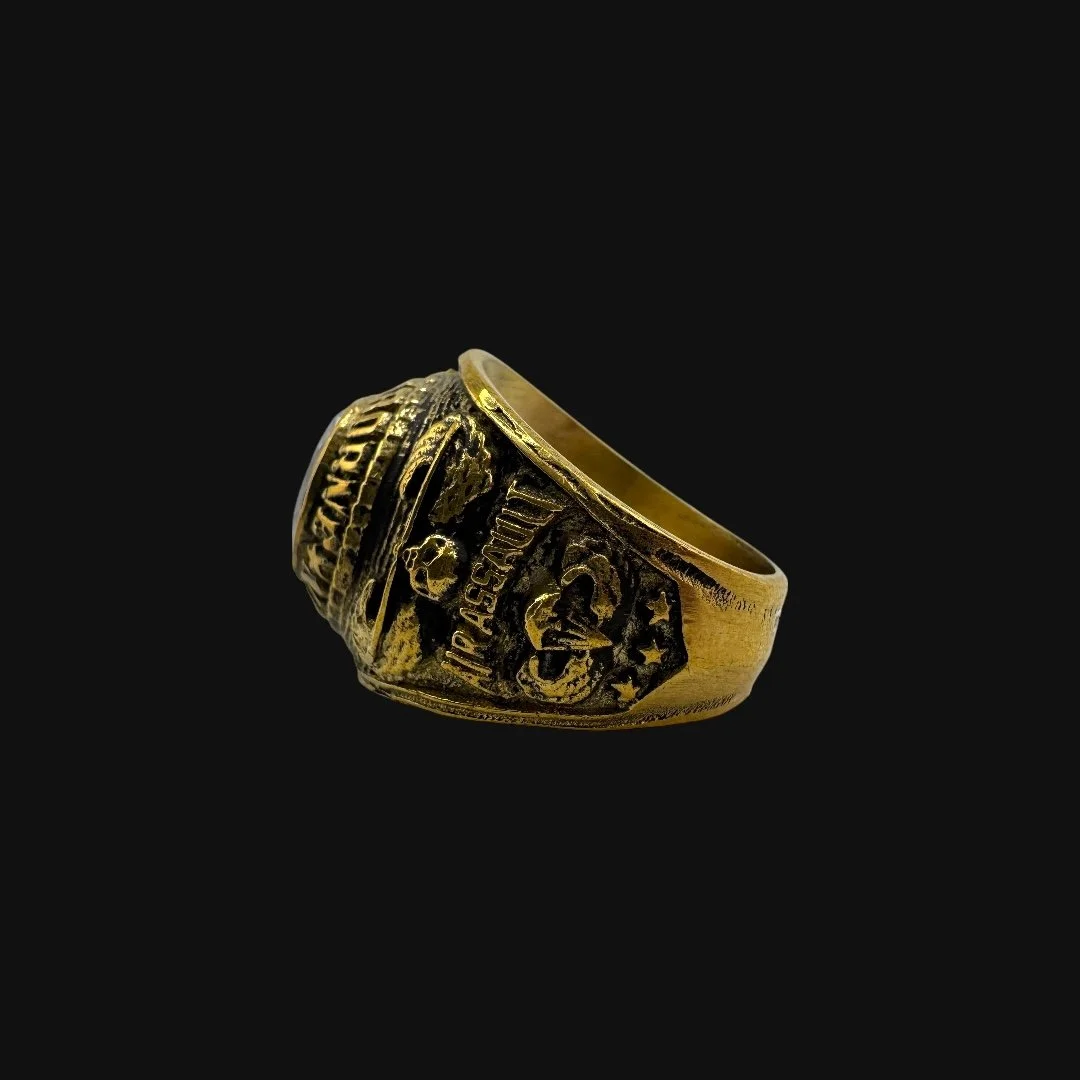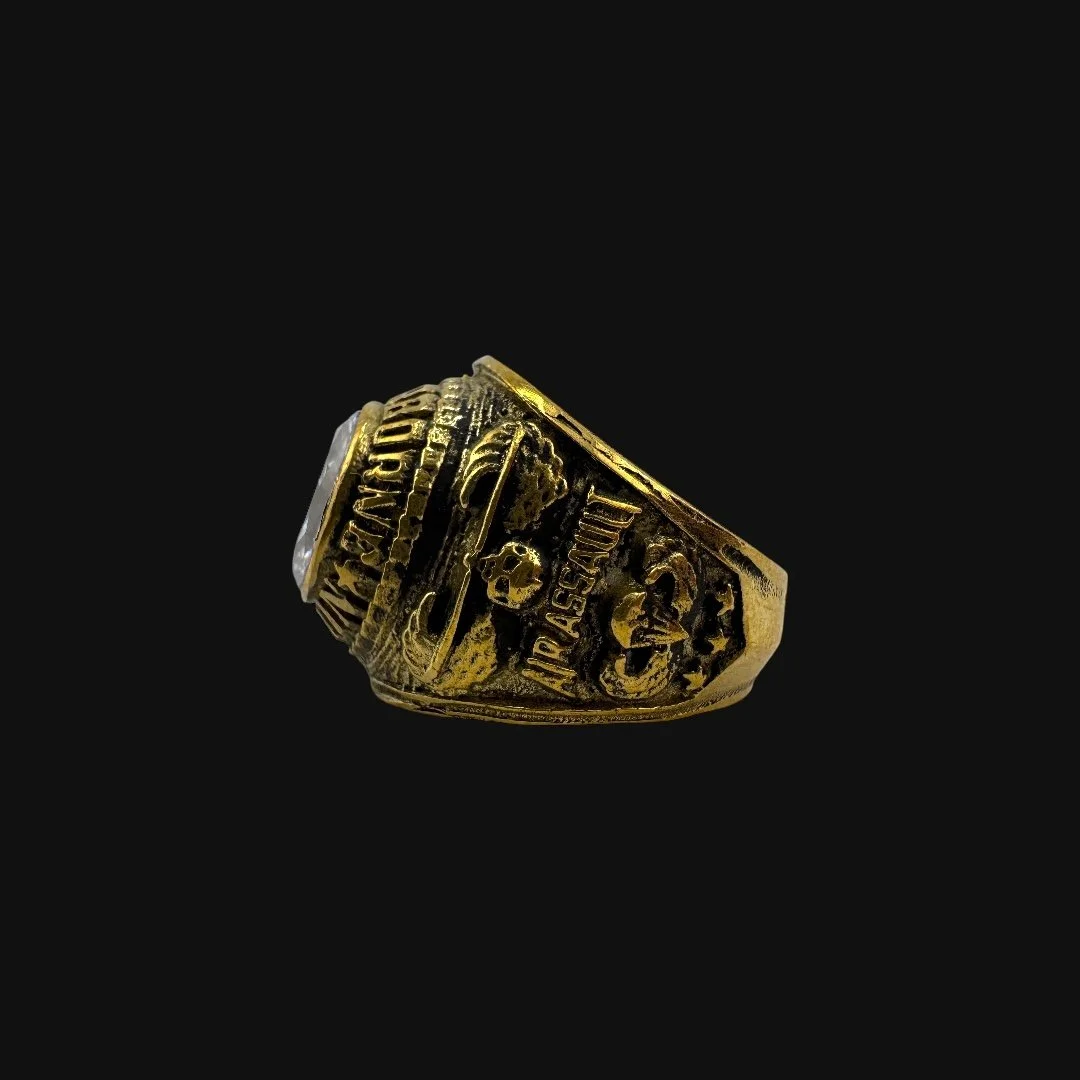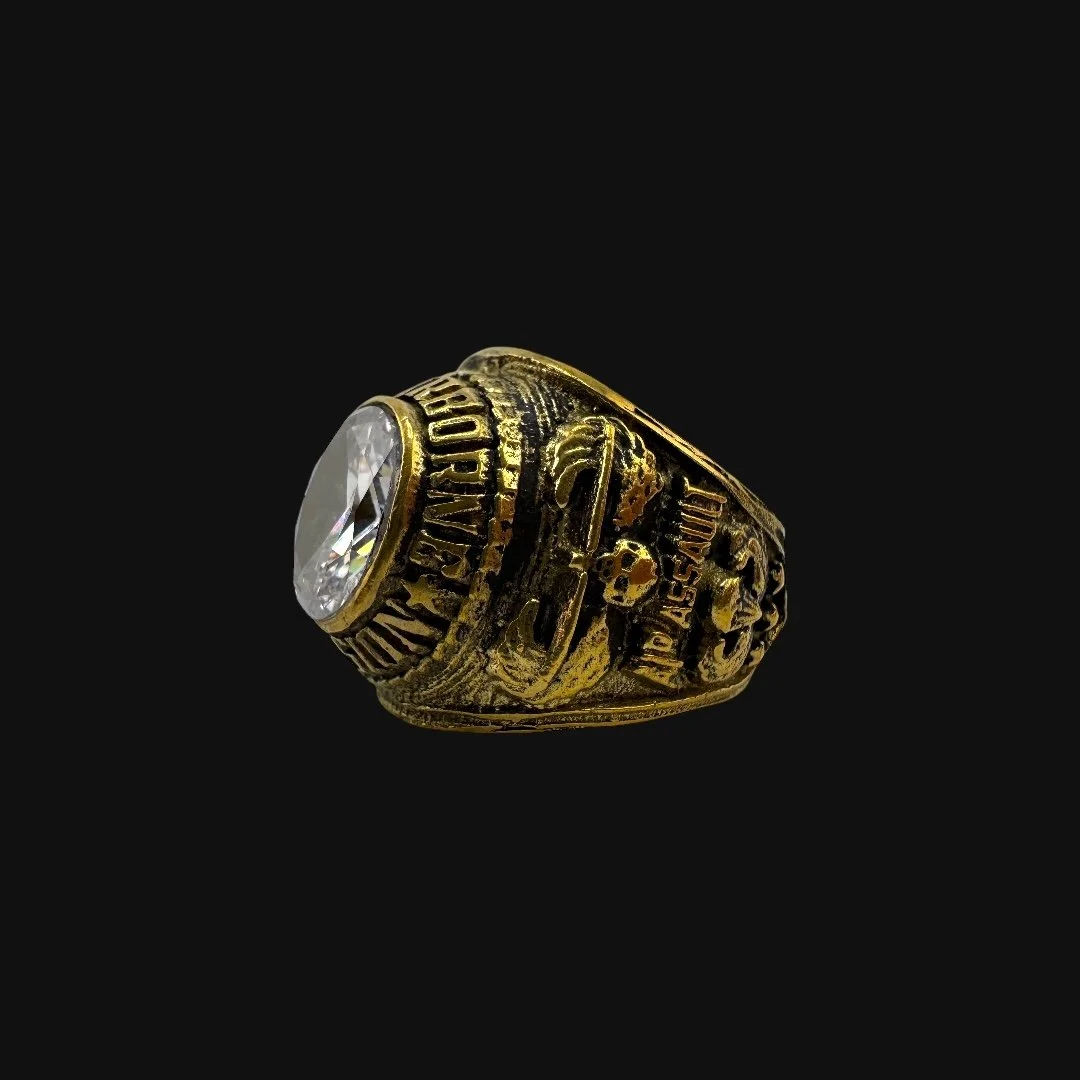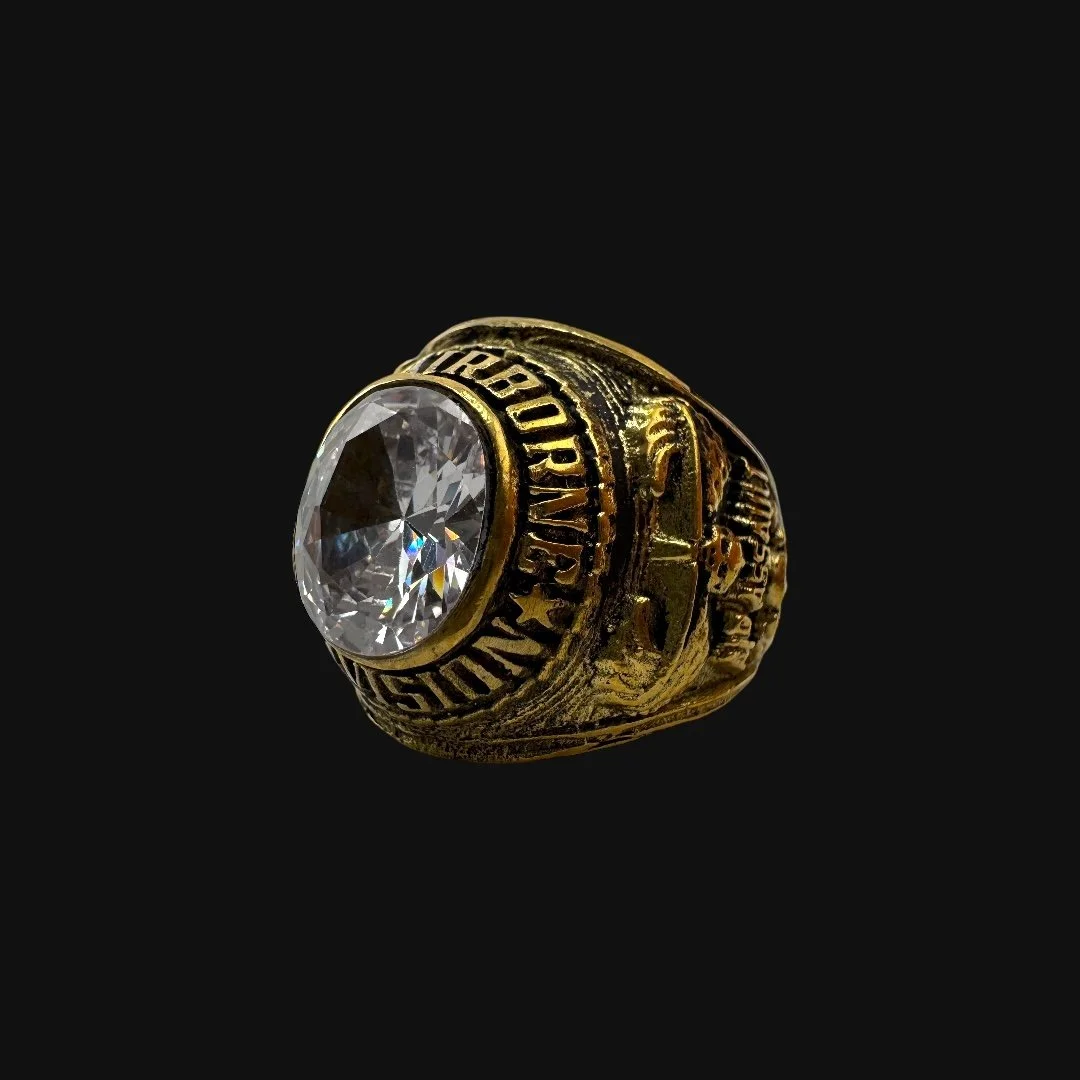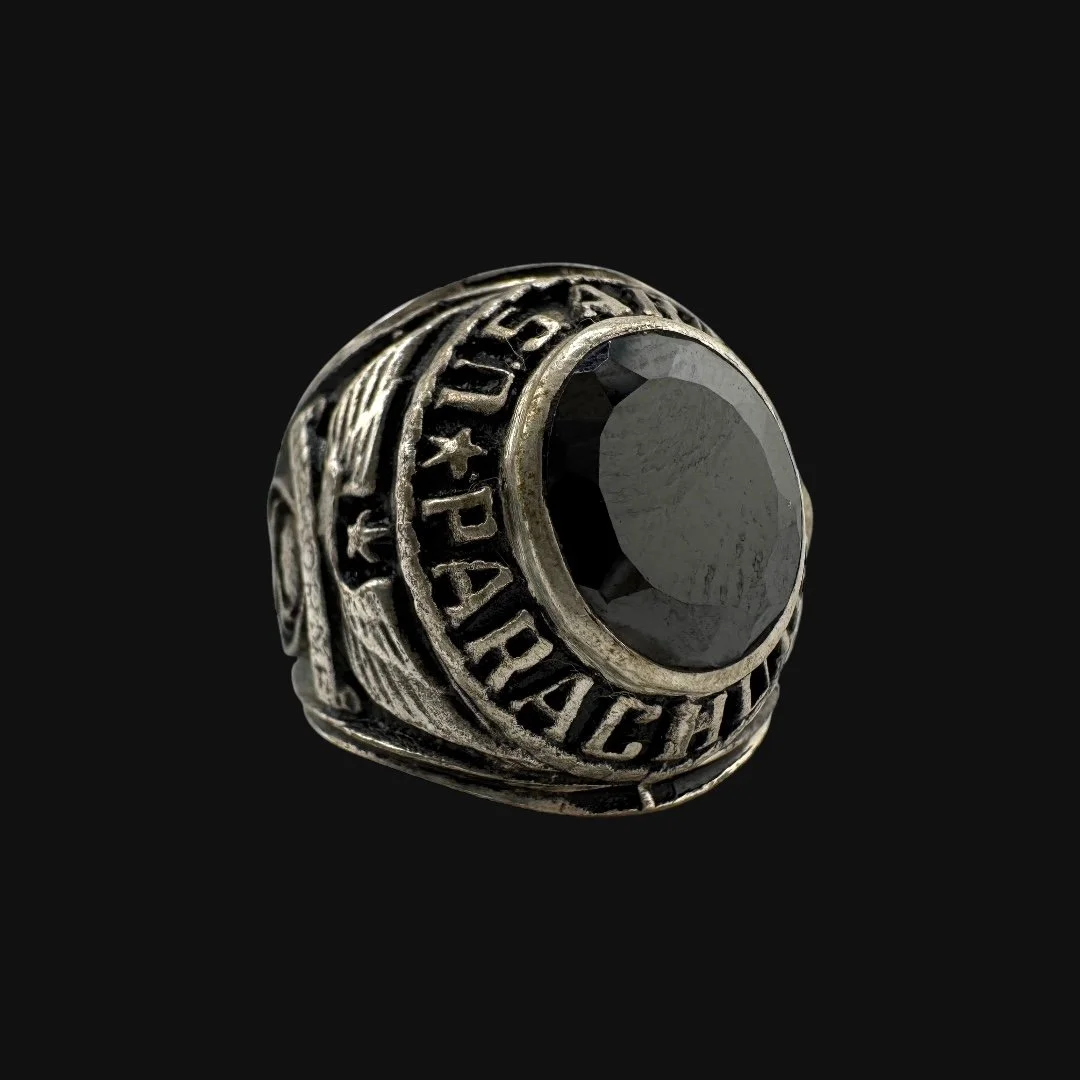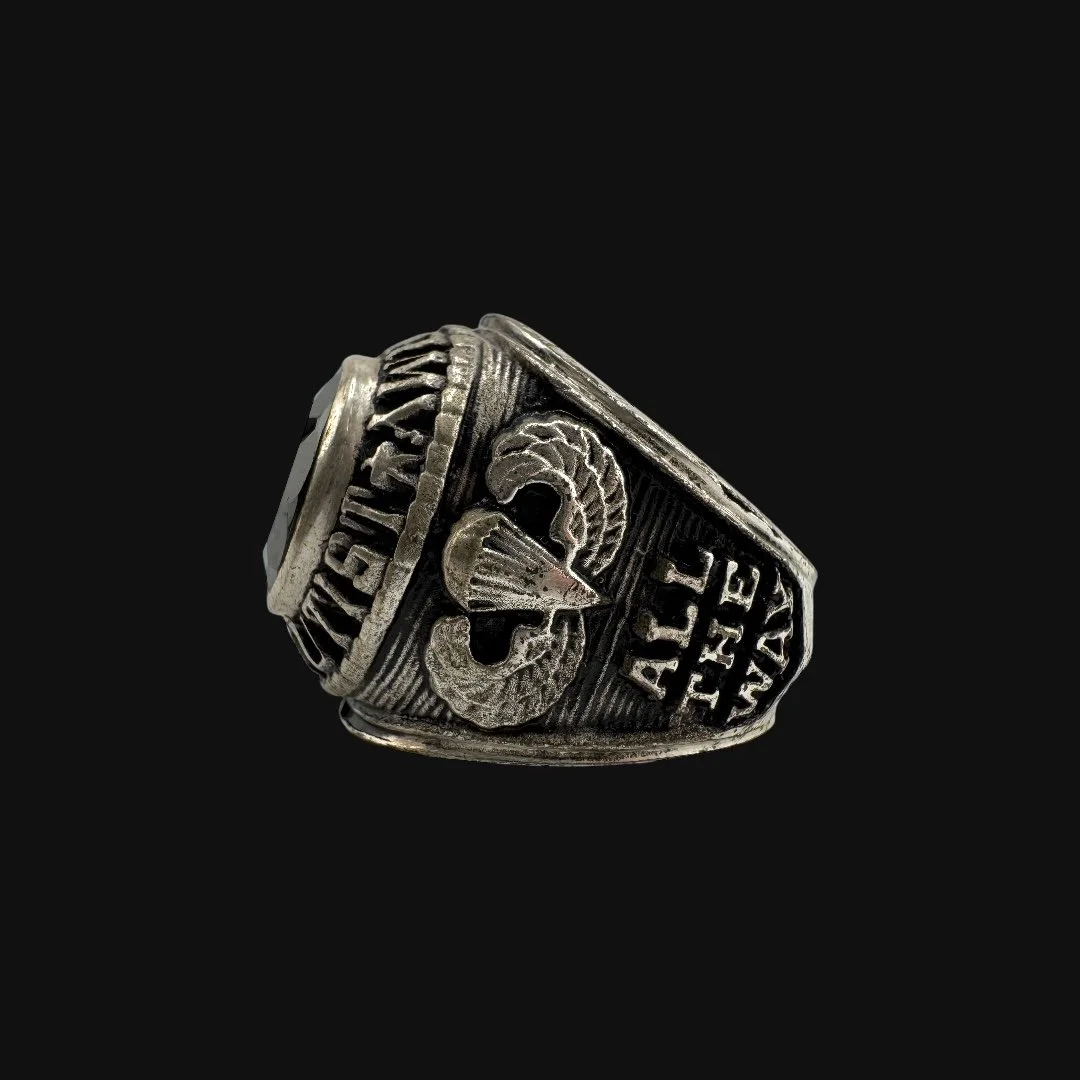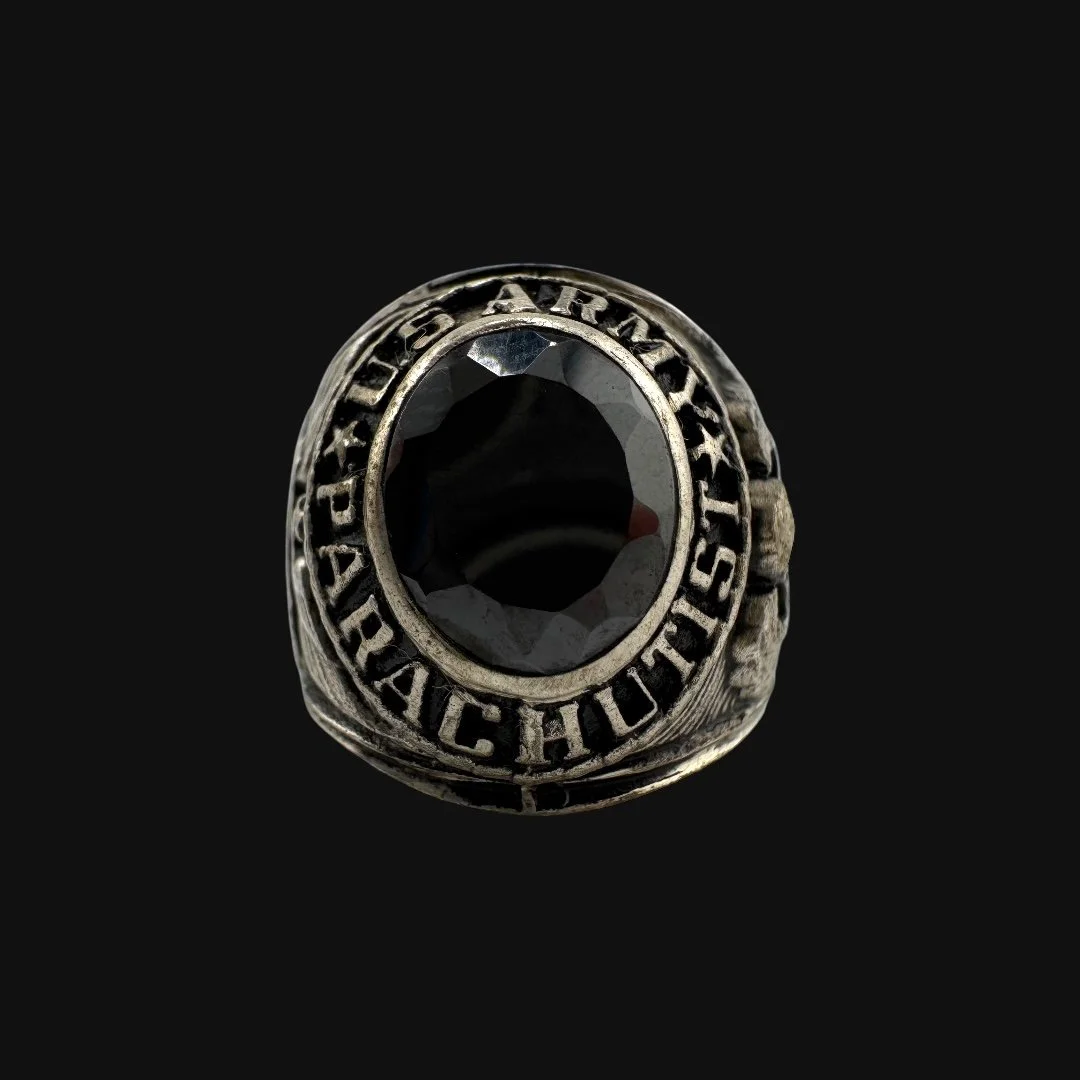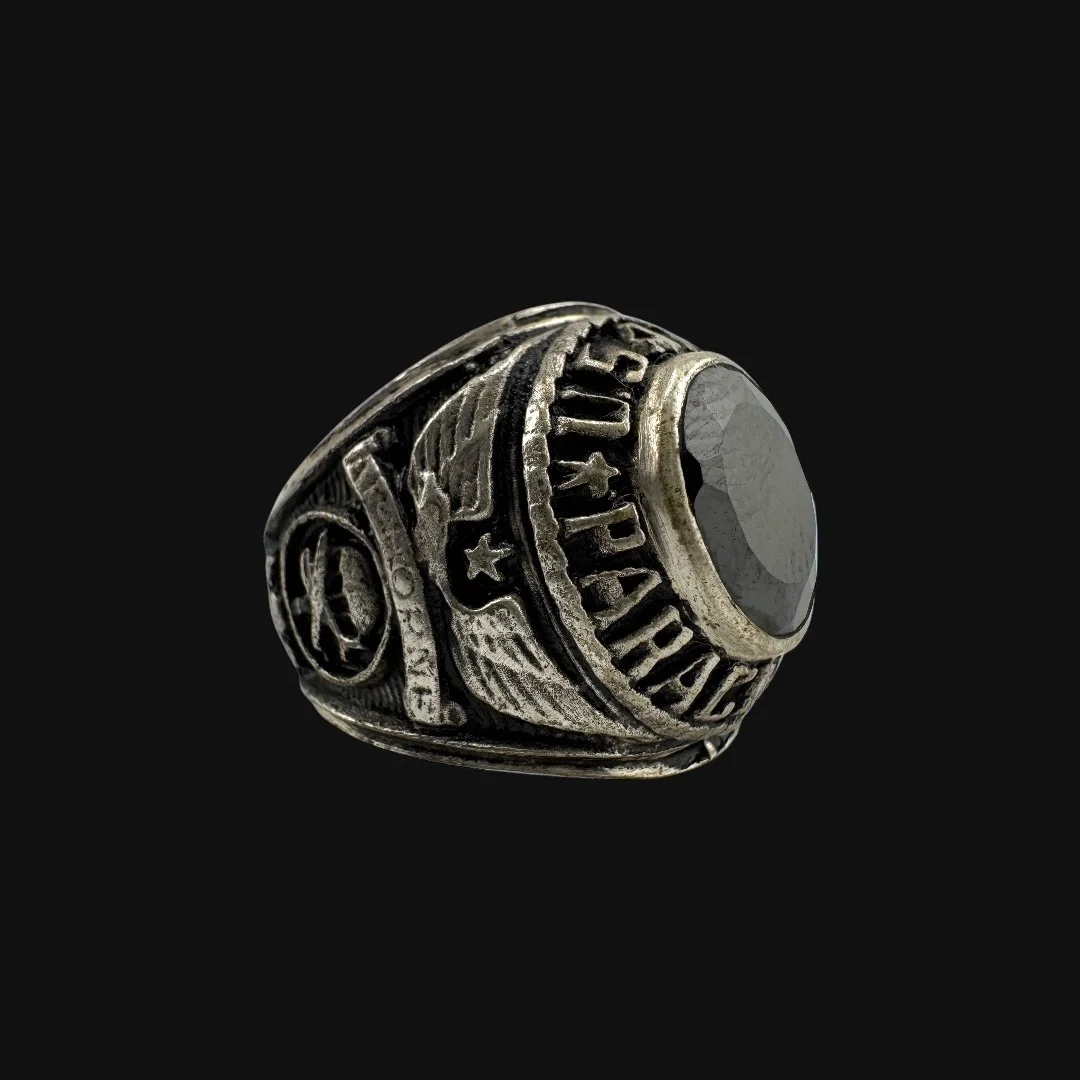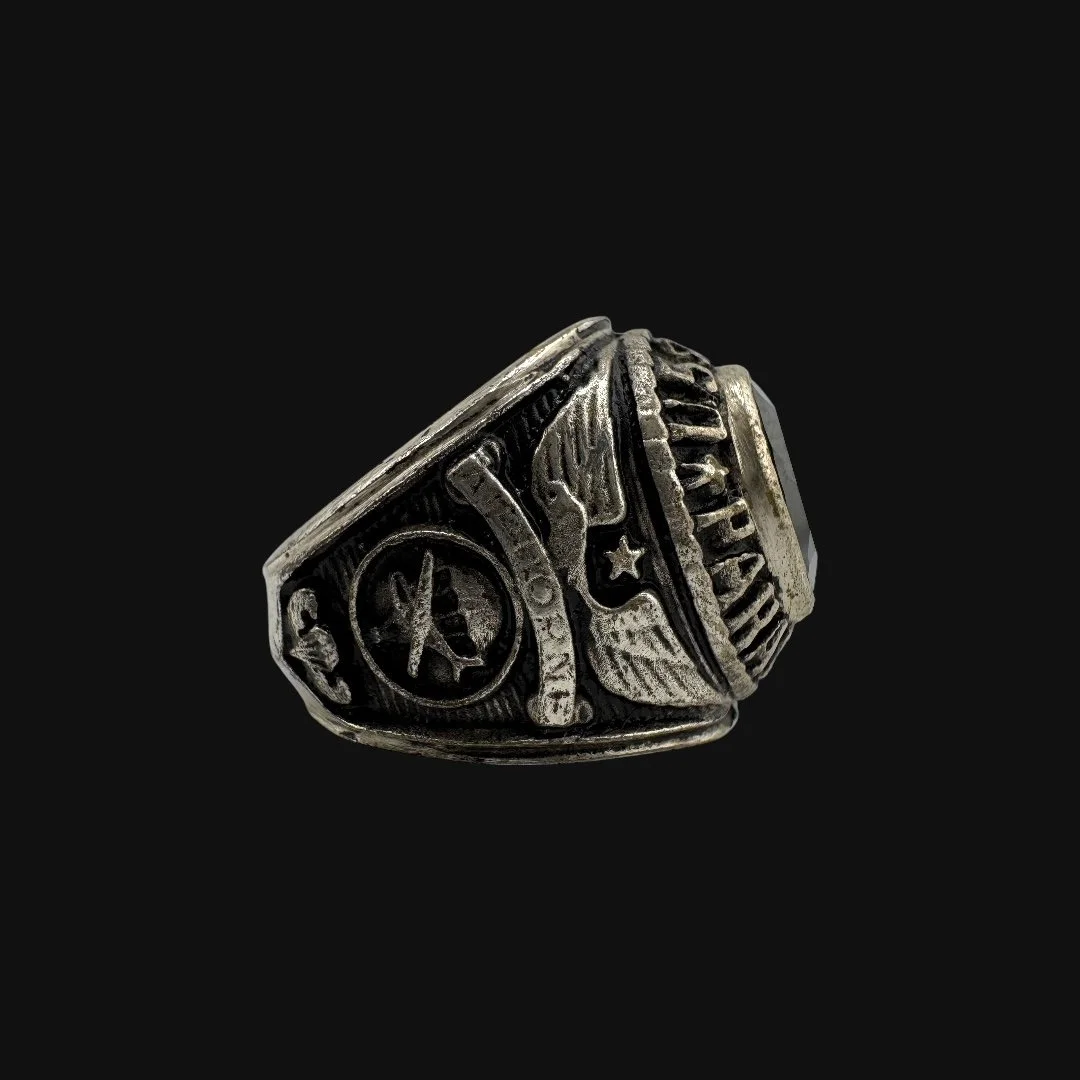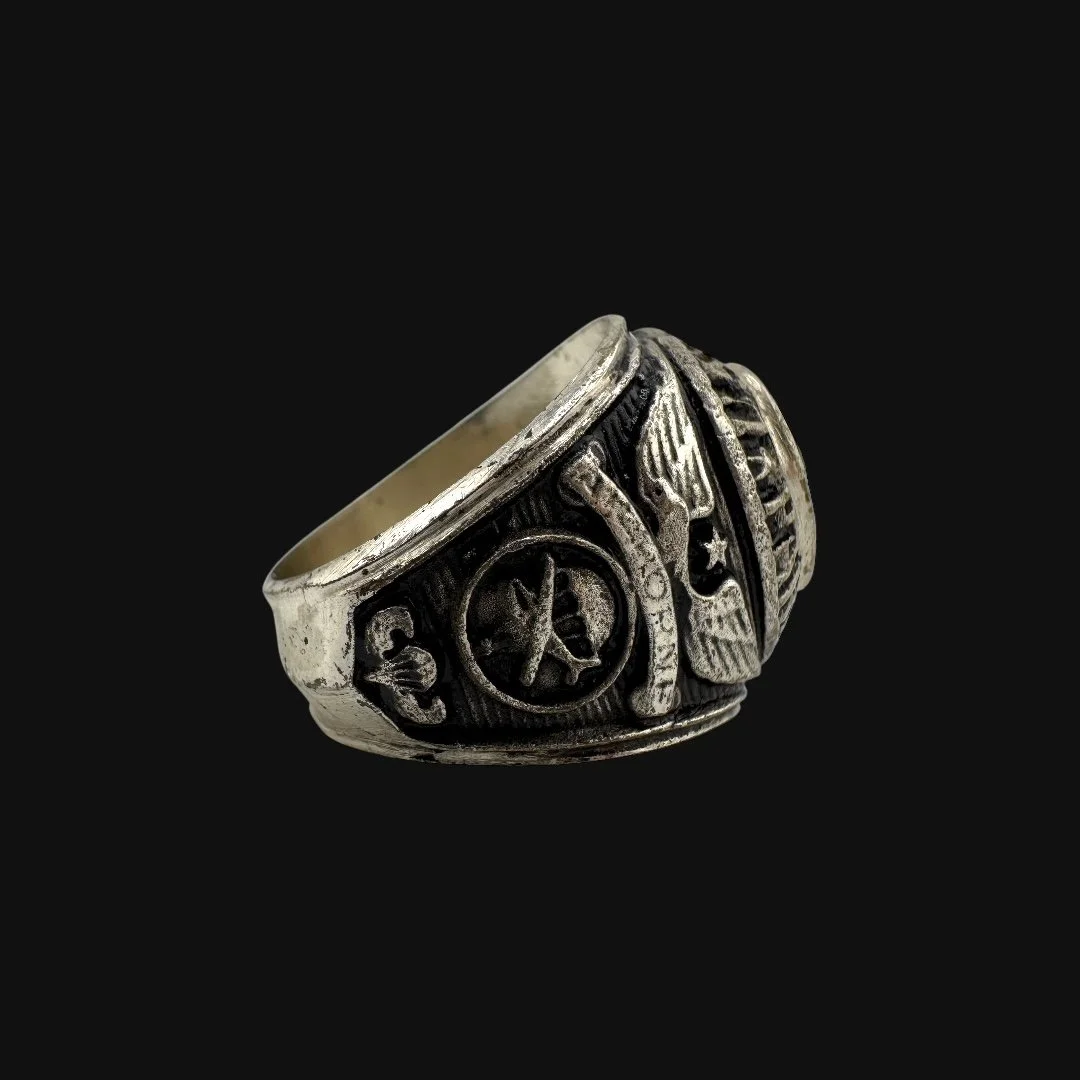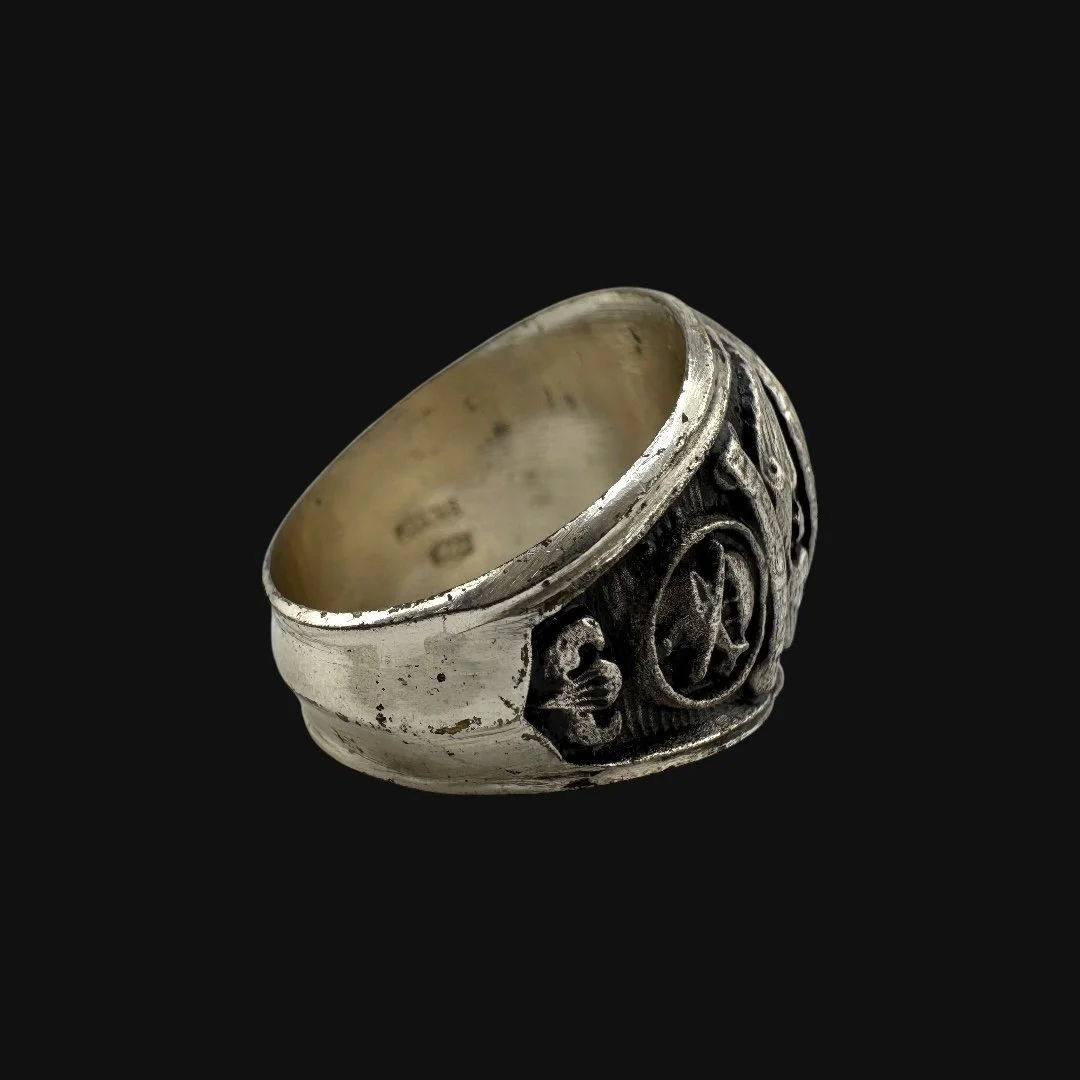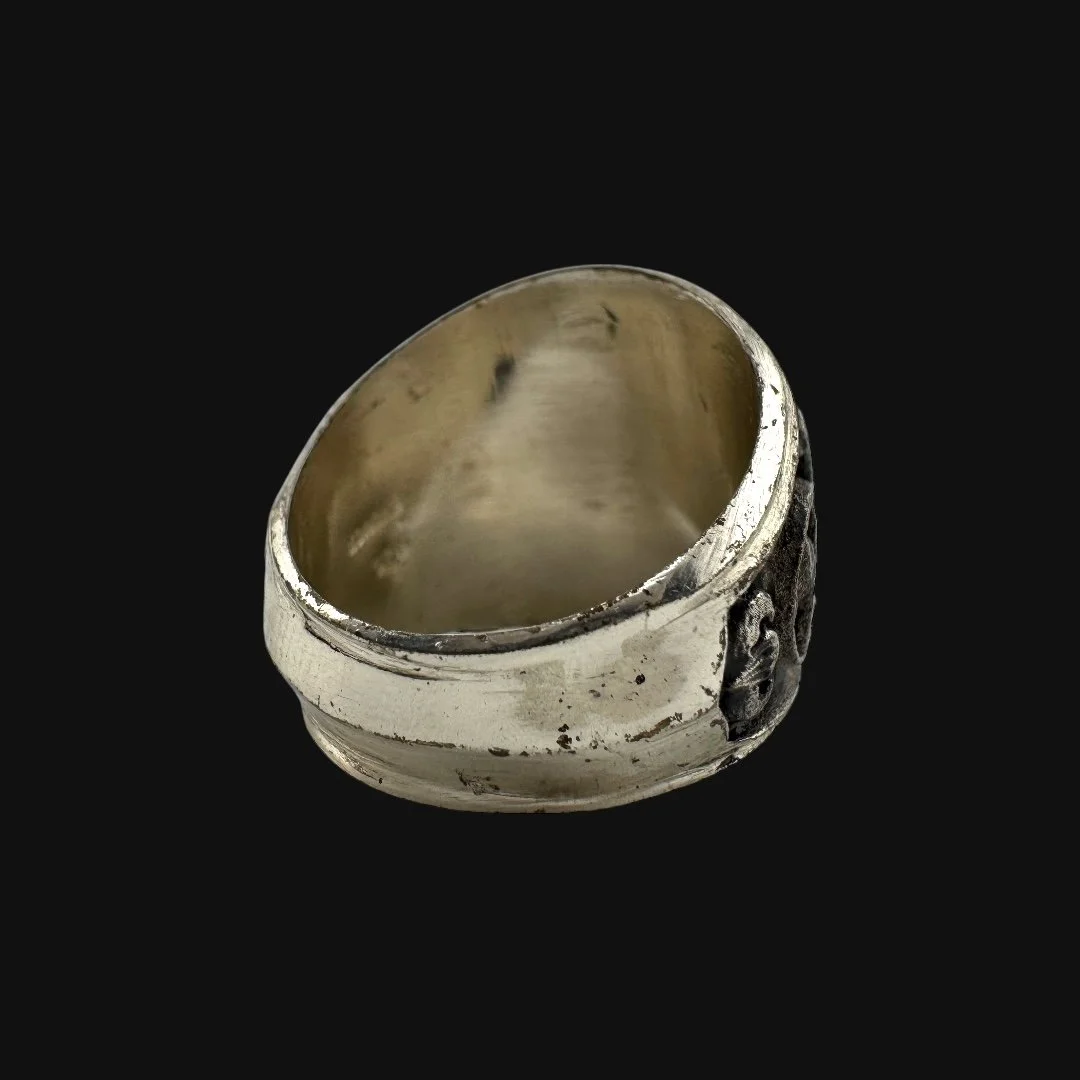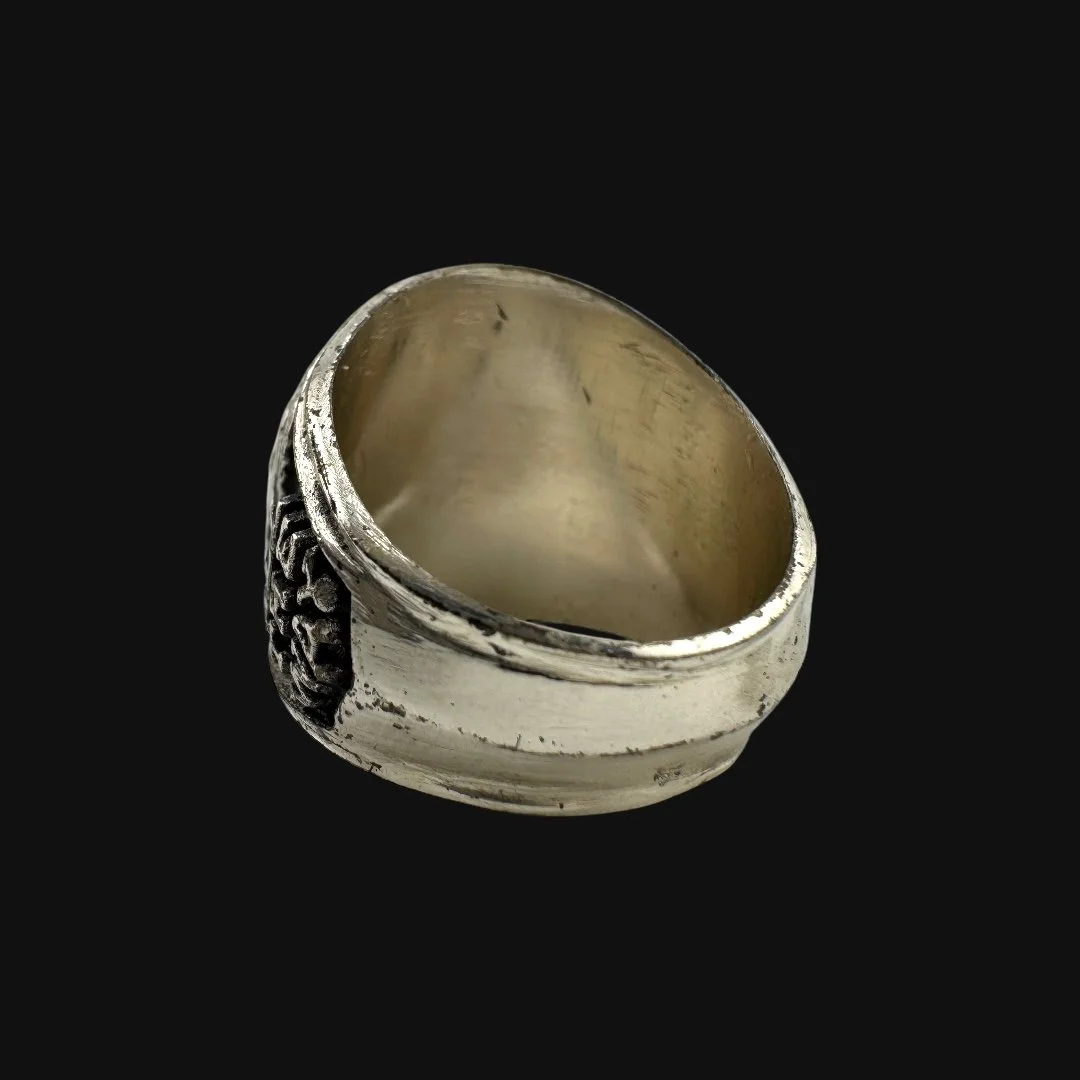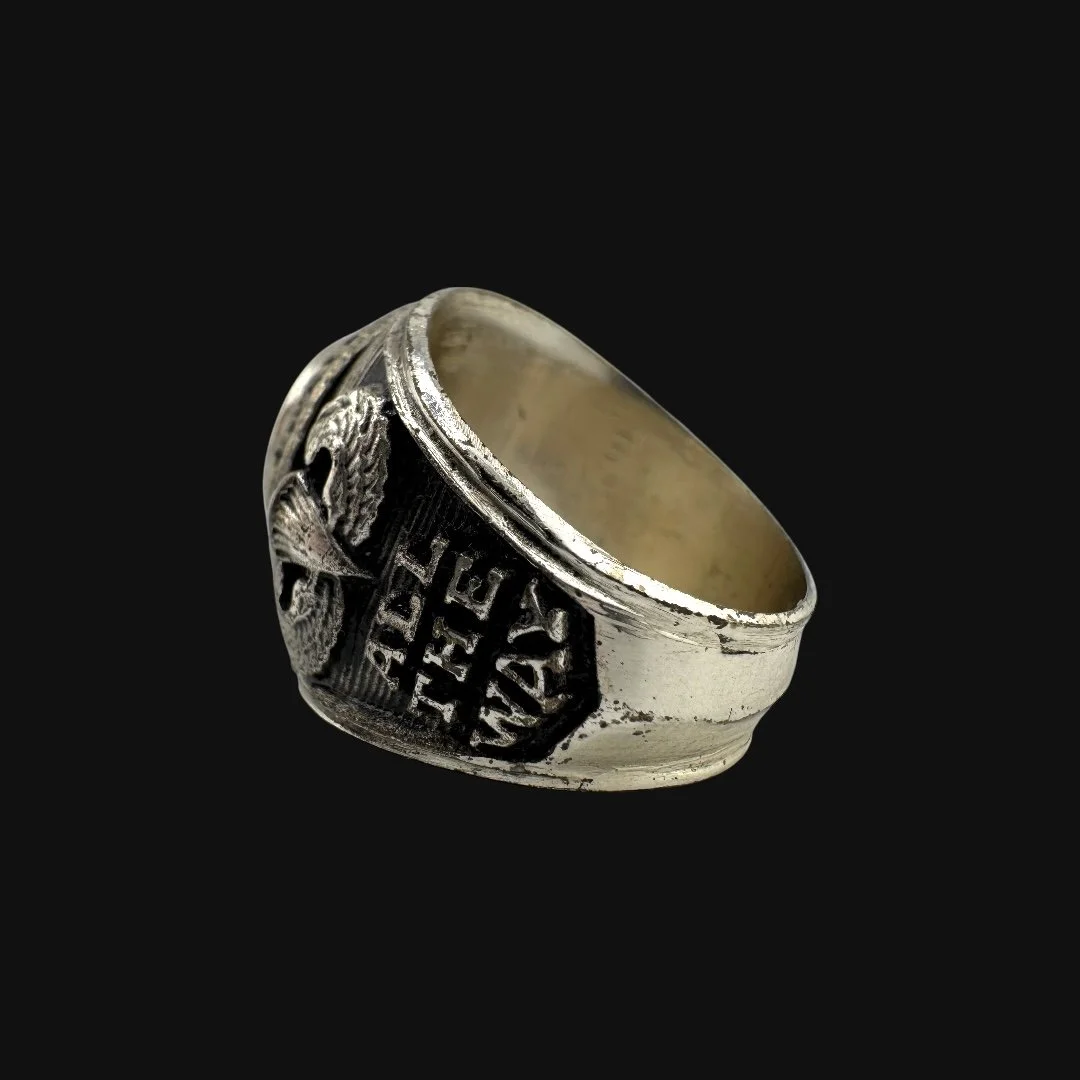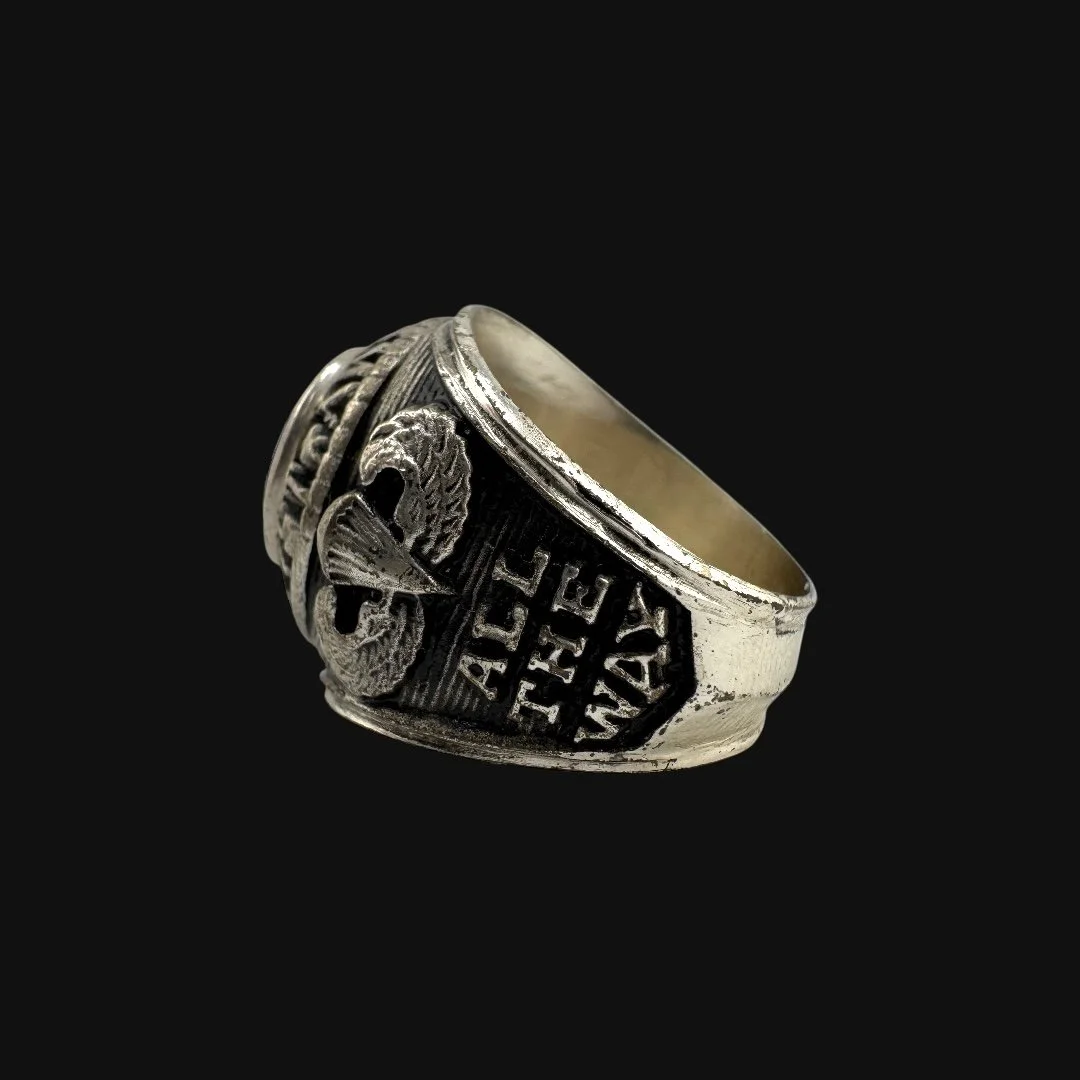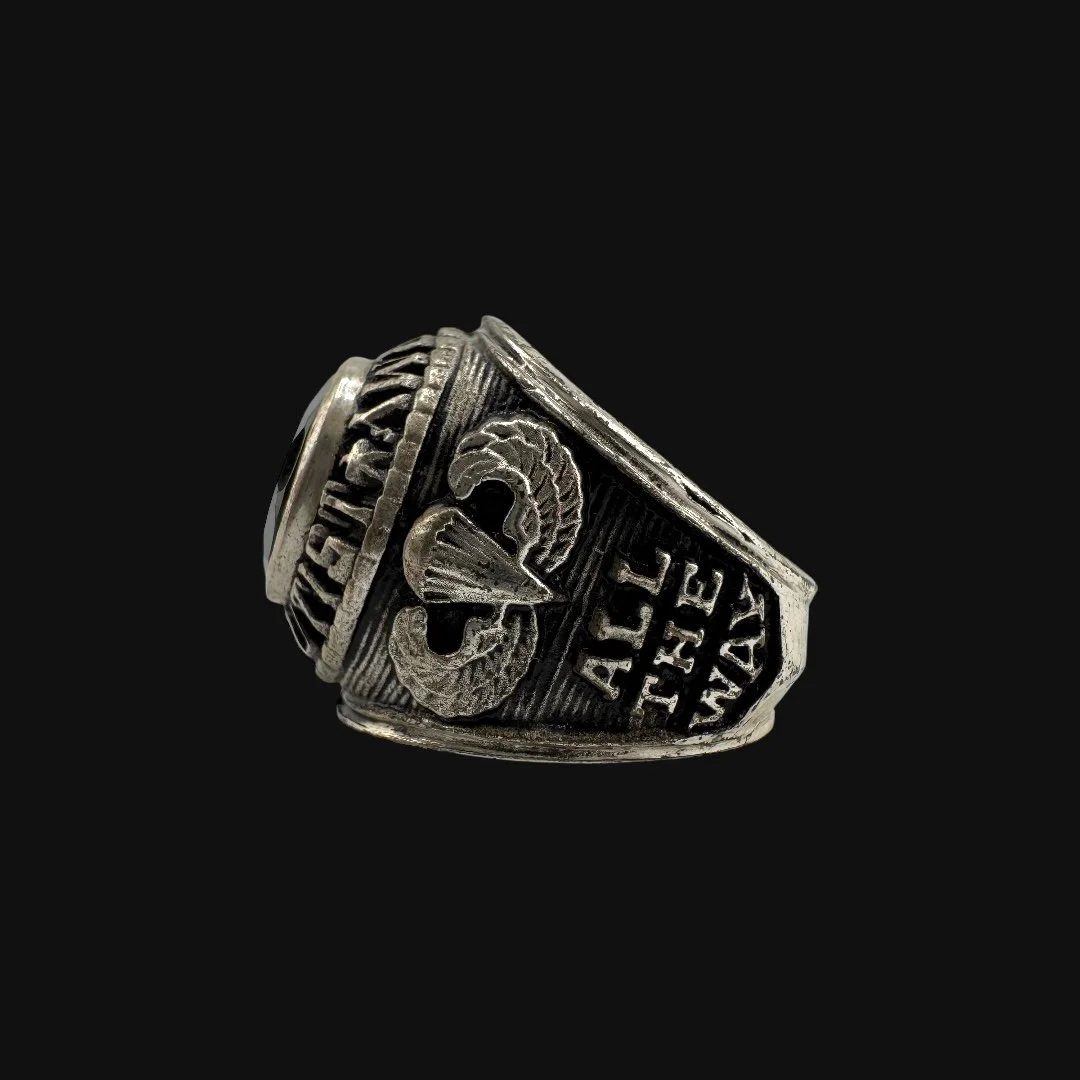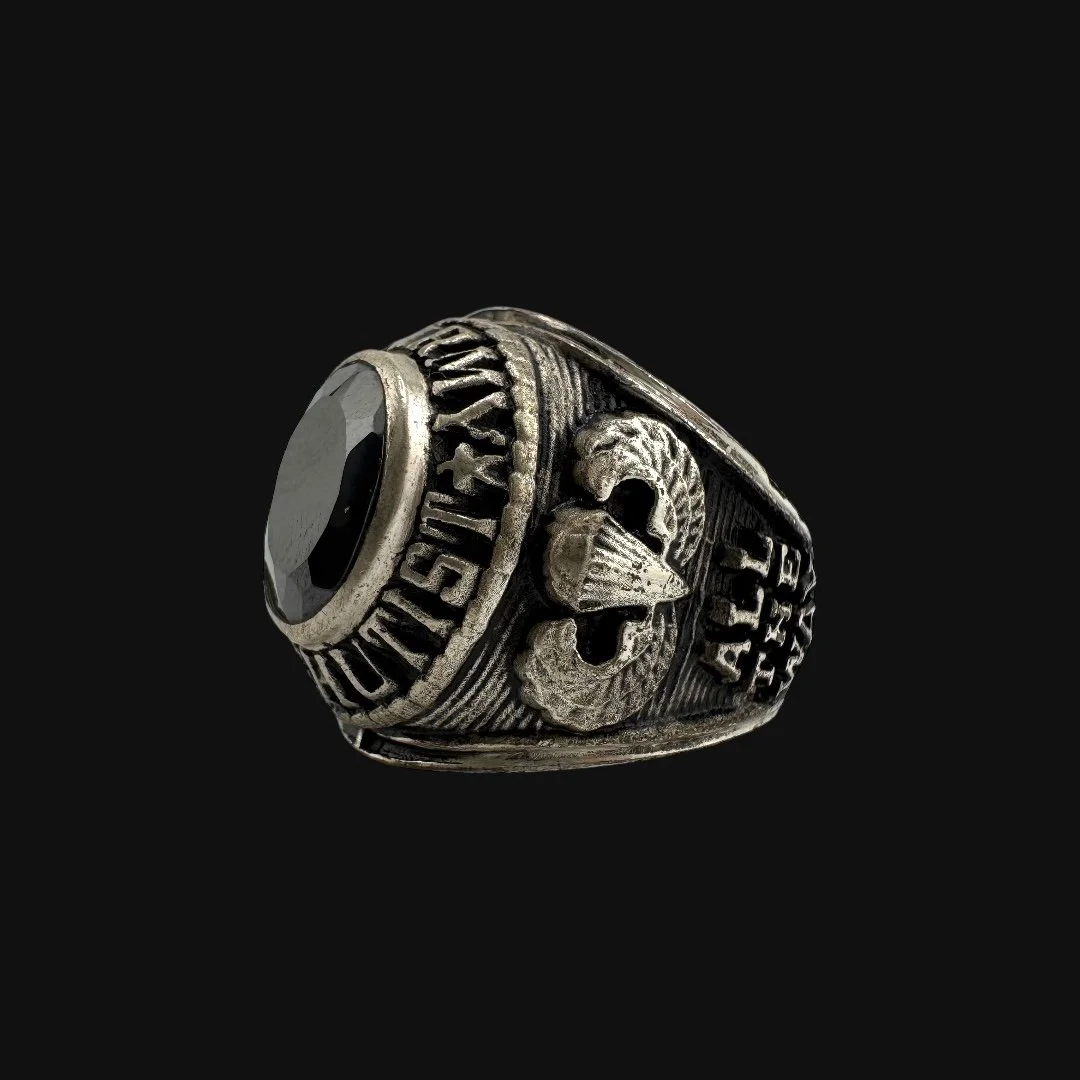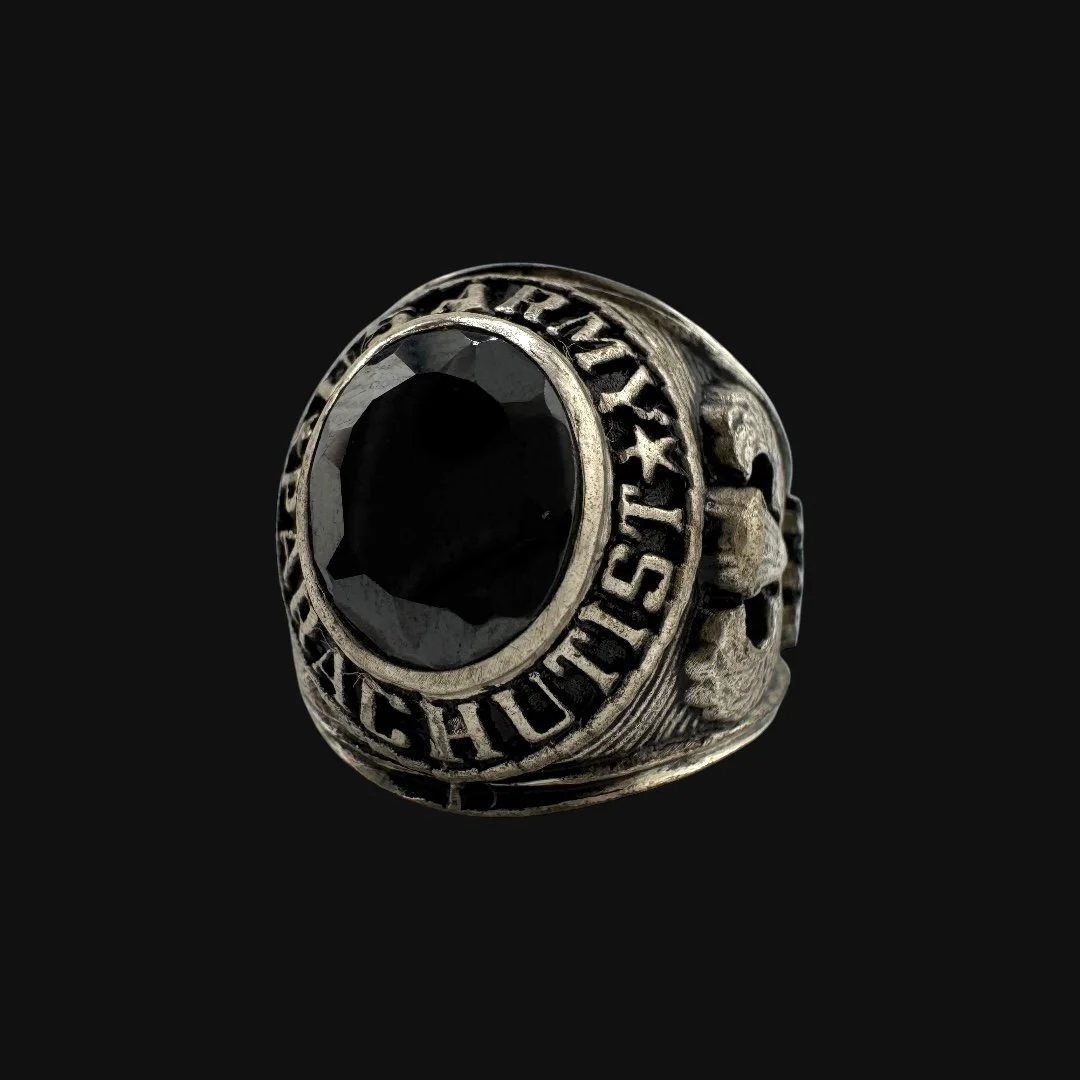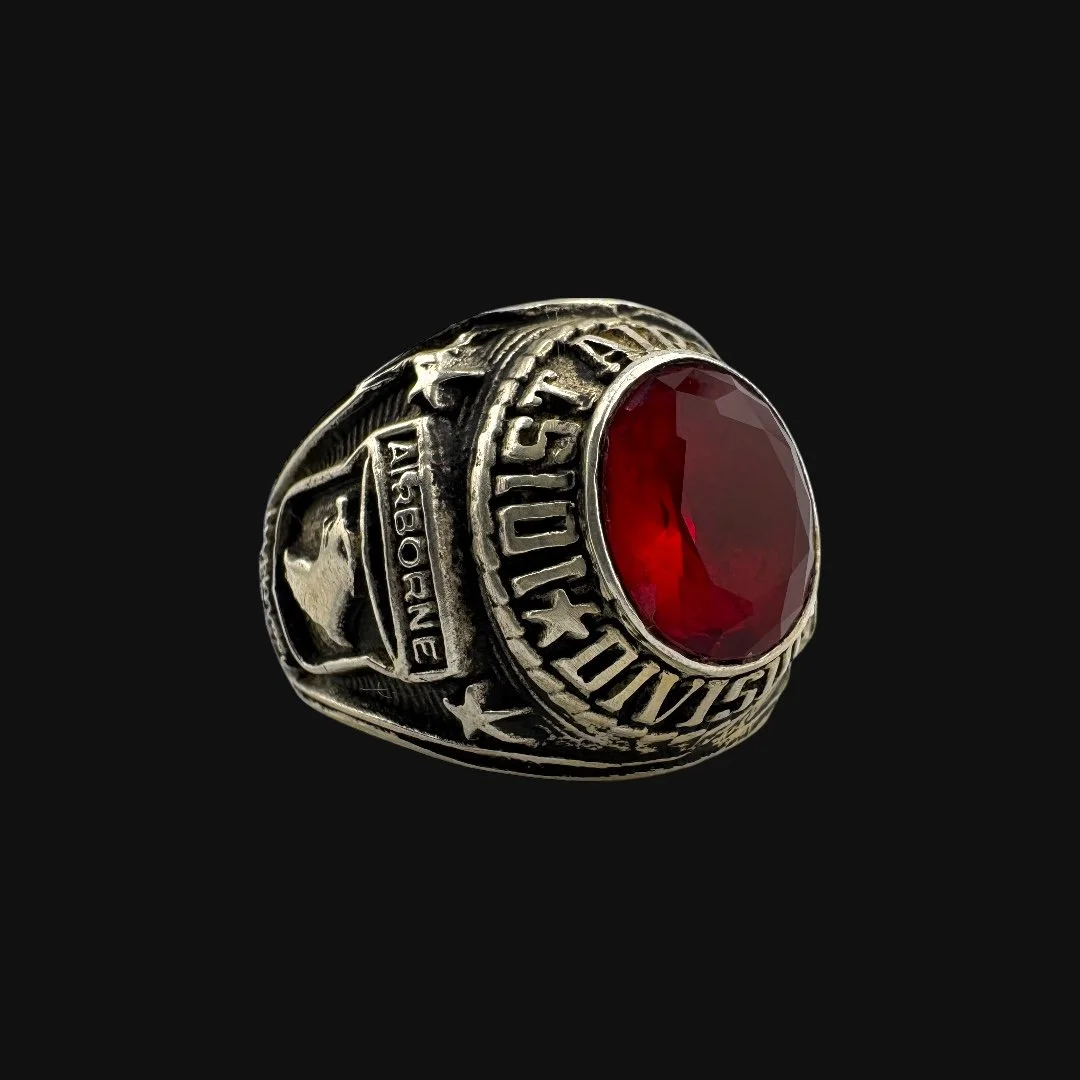 Image 1 of 14
Image 1 of 14

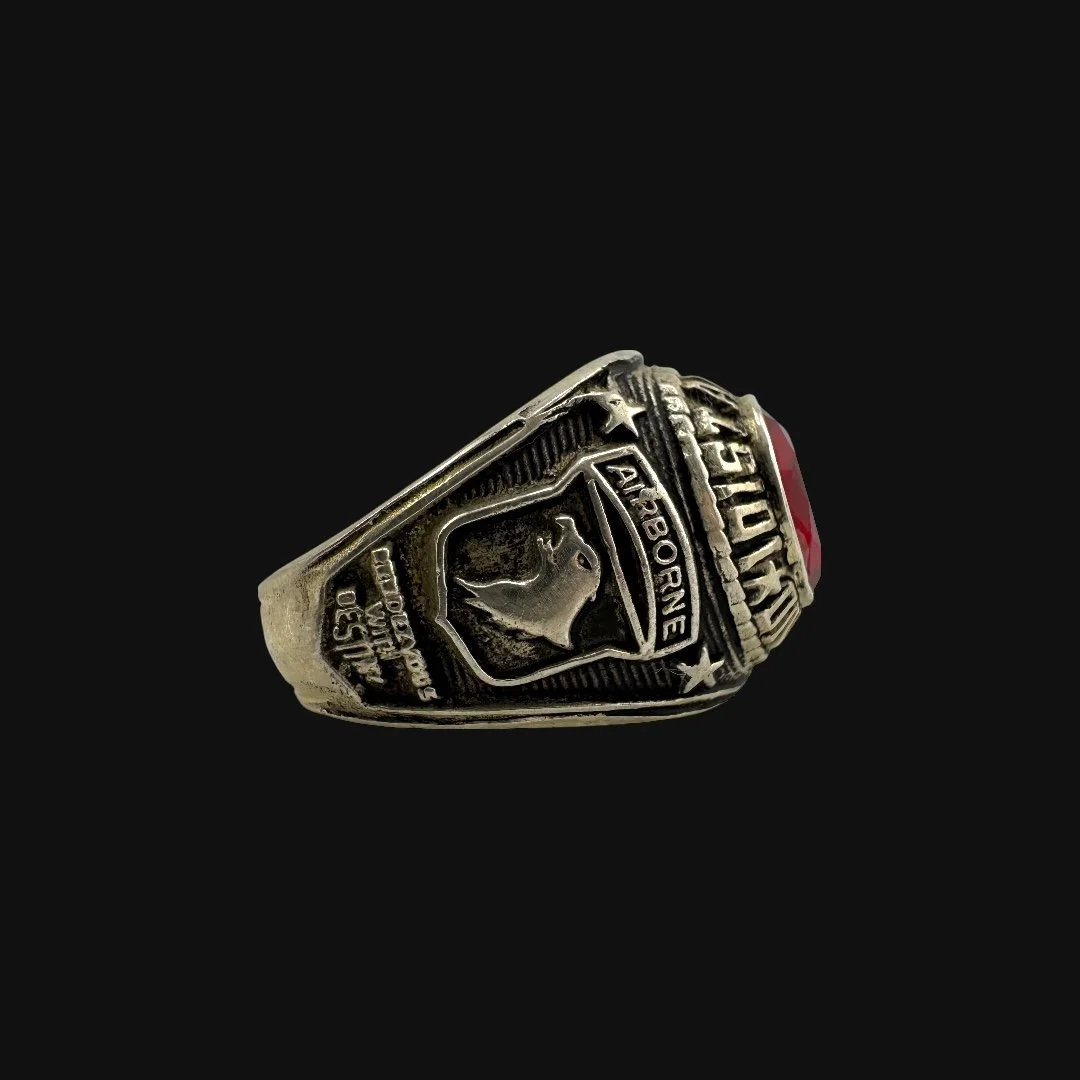 Image 2 of 14
Image 2 of 14

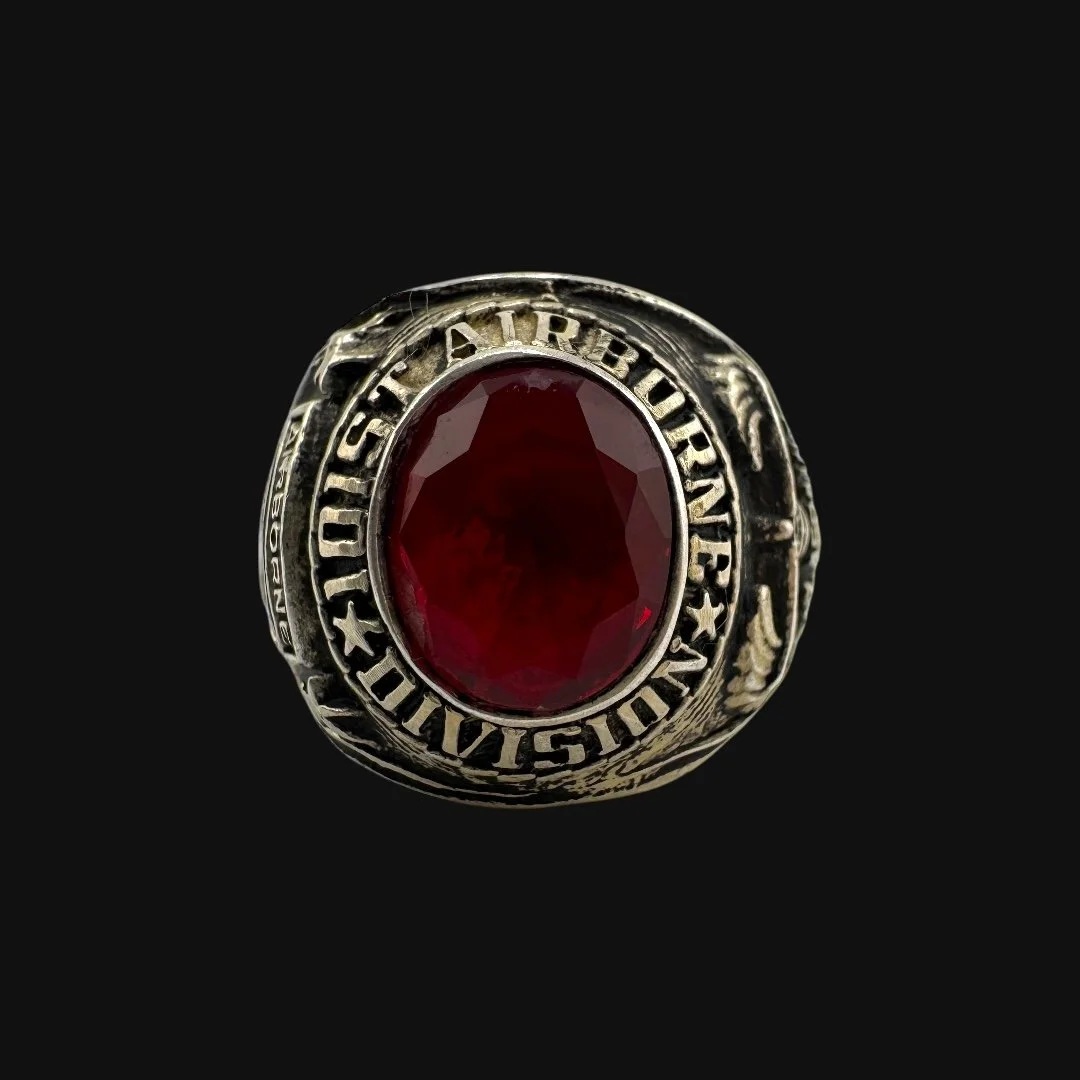 Image 3 of 14
Image 3 of 14

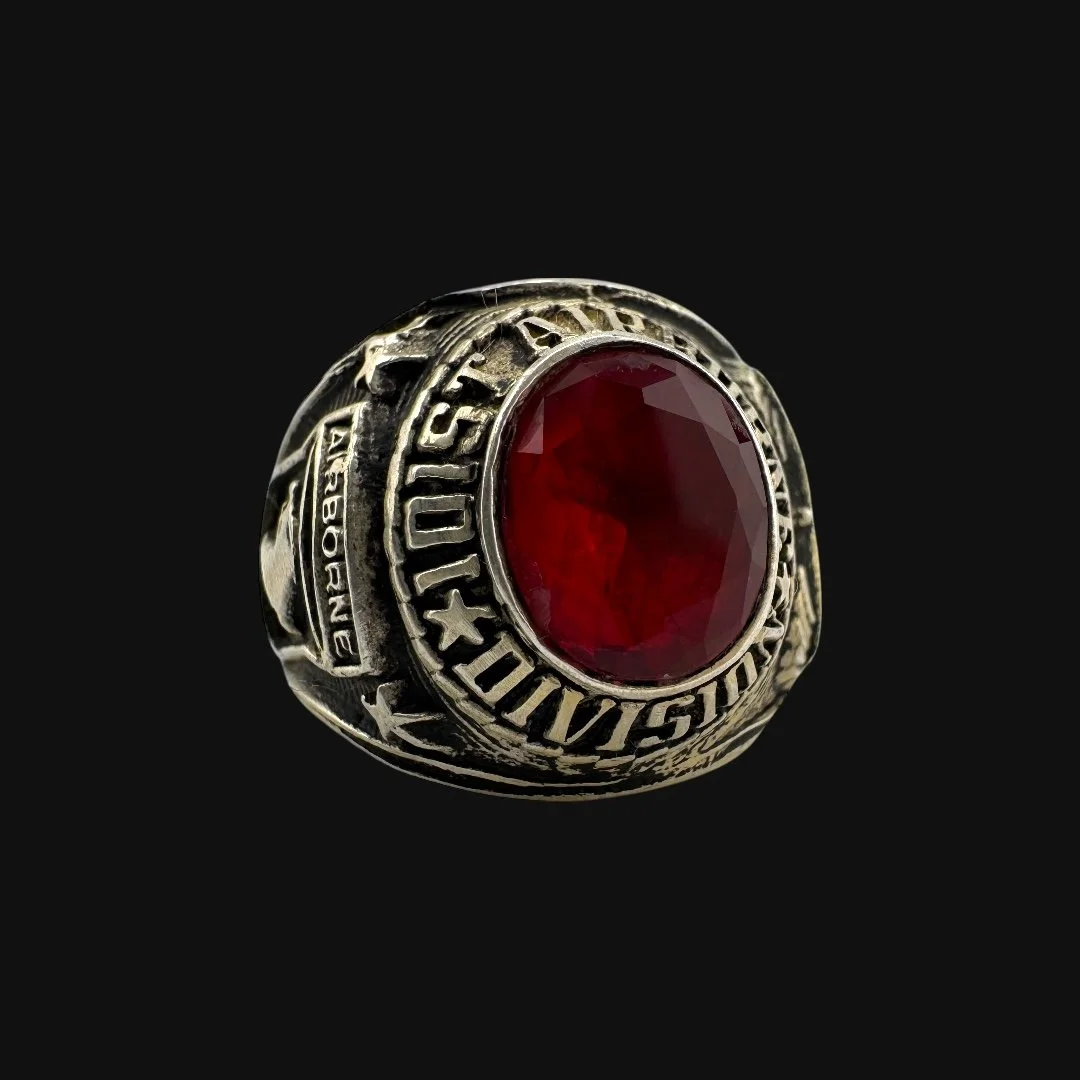 Image 4 of 14
Image 4 of 14

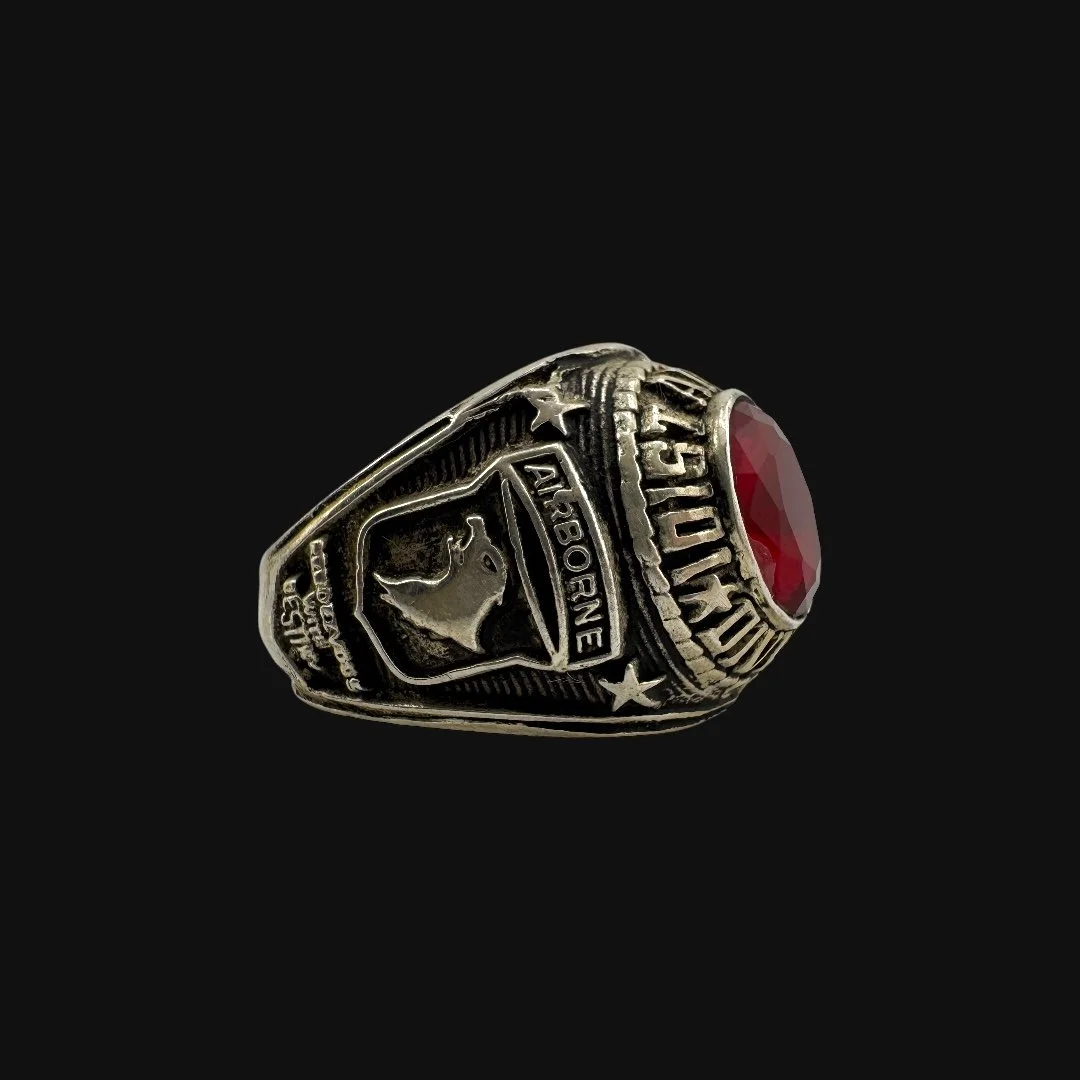 Image 5 of 14
Image 5 of 14

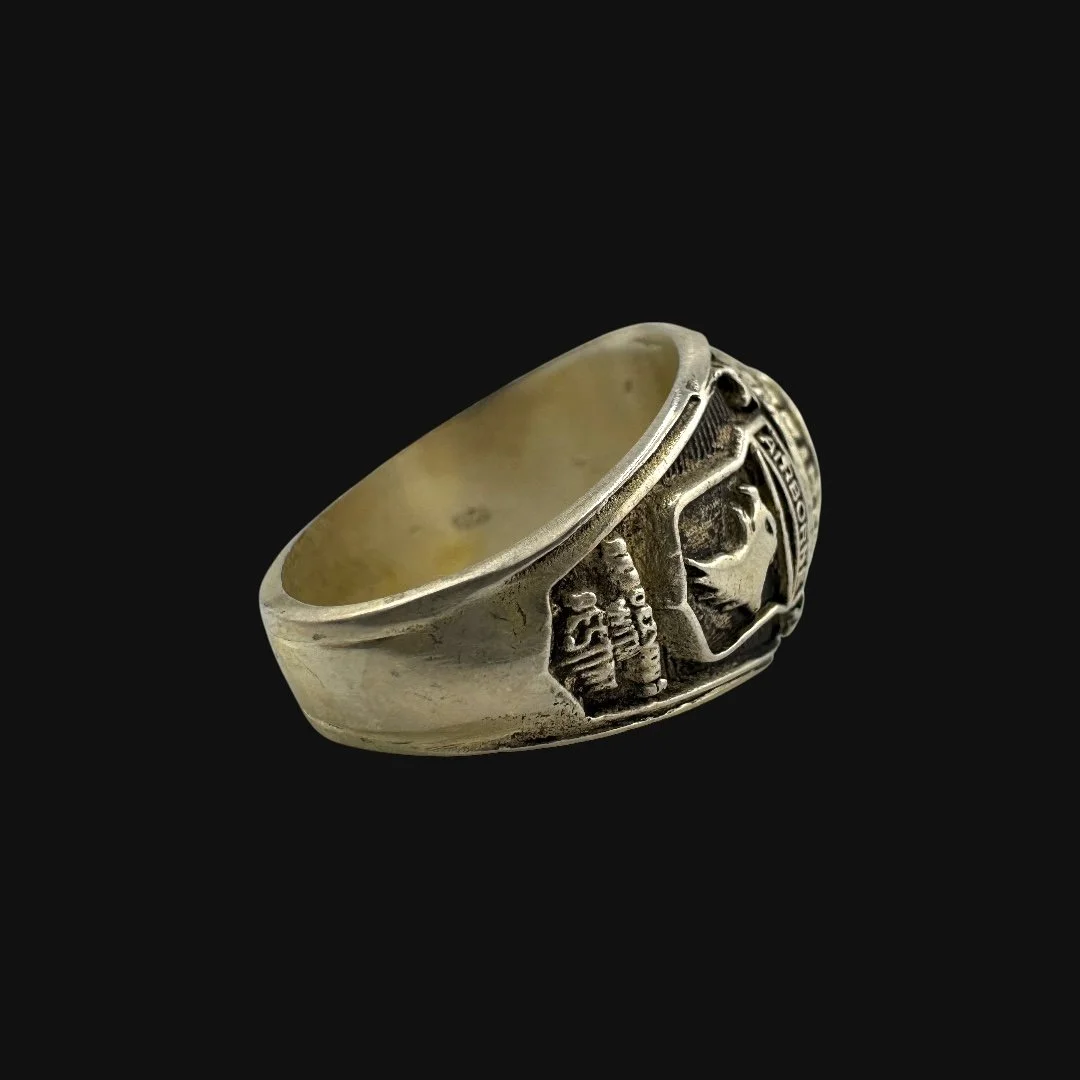 Image 6 of 14
Image 6 of 14

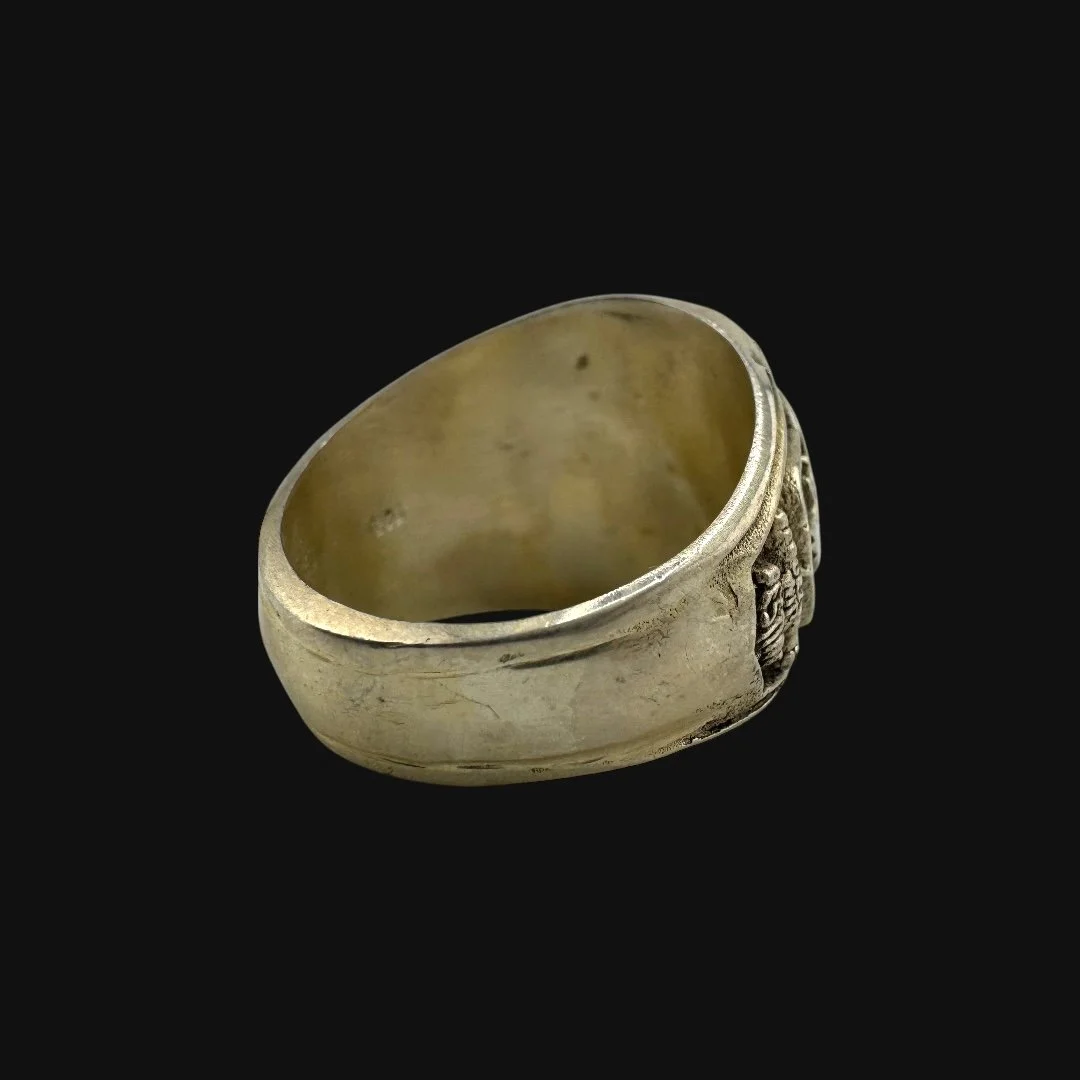 Image 7 of 14
Image 7 of 14

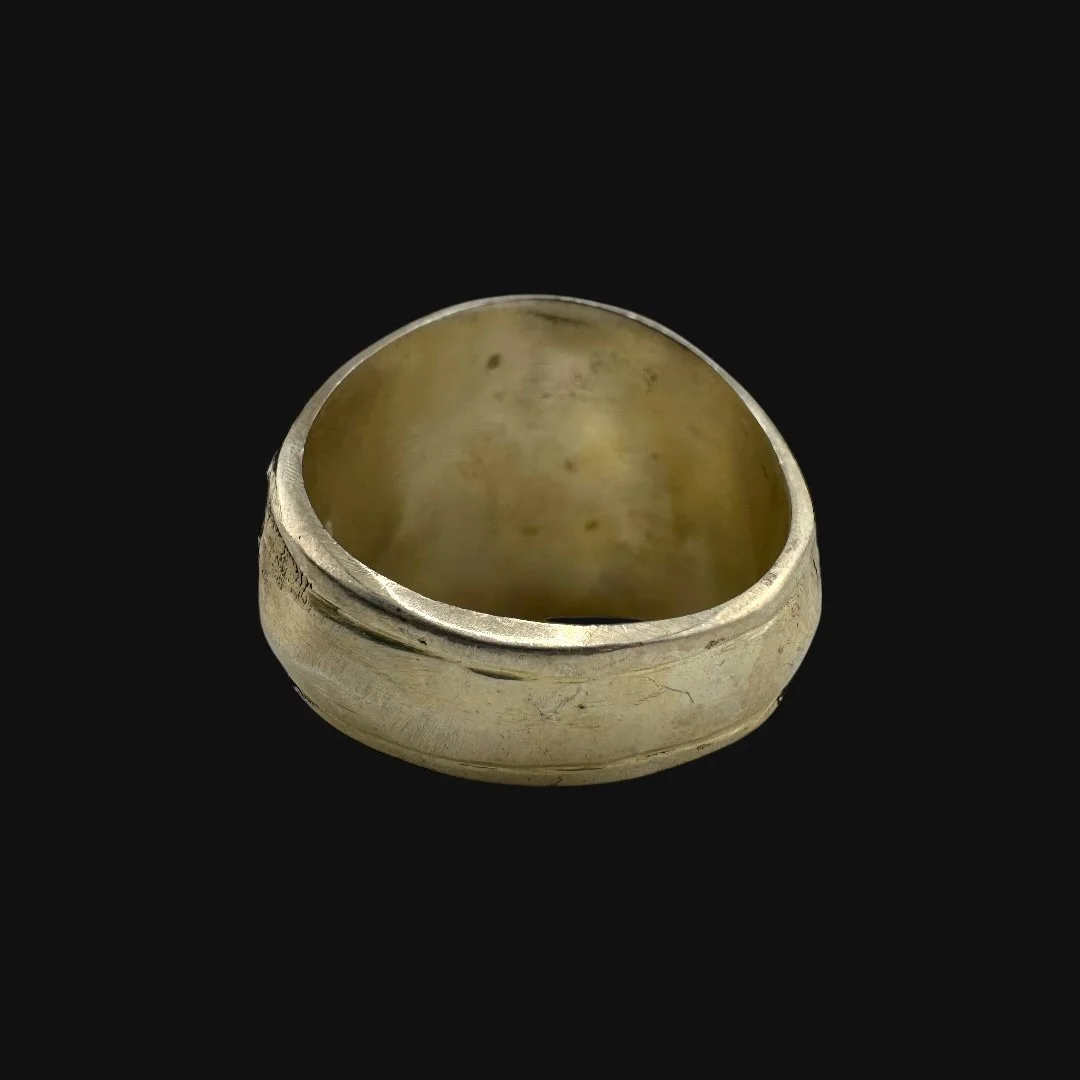 Image 8 of 14
Image 8 of 14

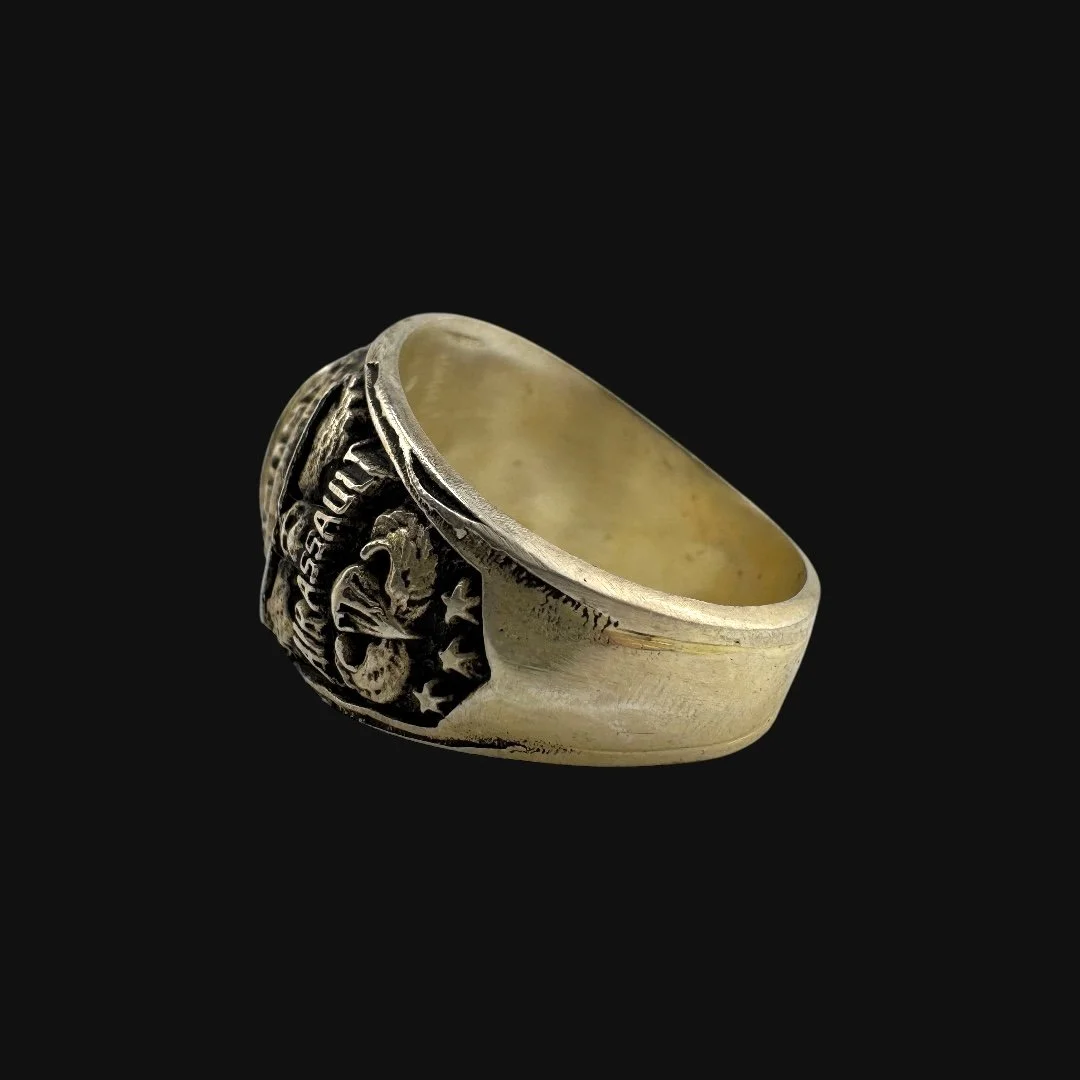 Image 9 of 14
Image 9 of 14

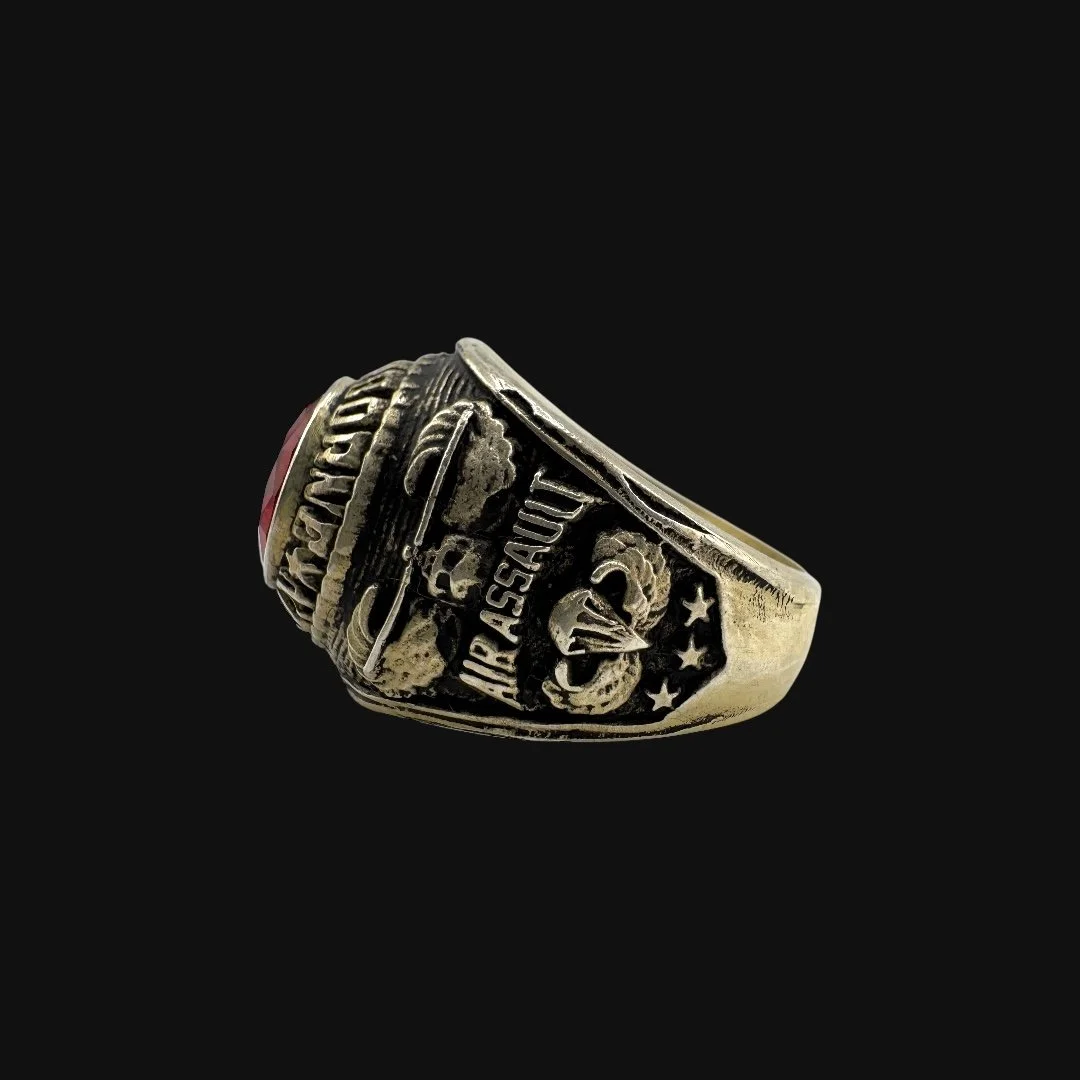 Image 10 of 14
Image 10 of 14

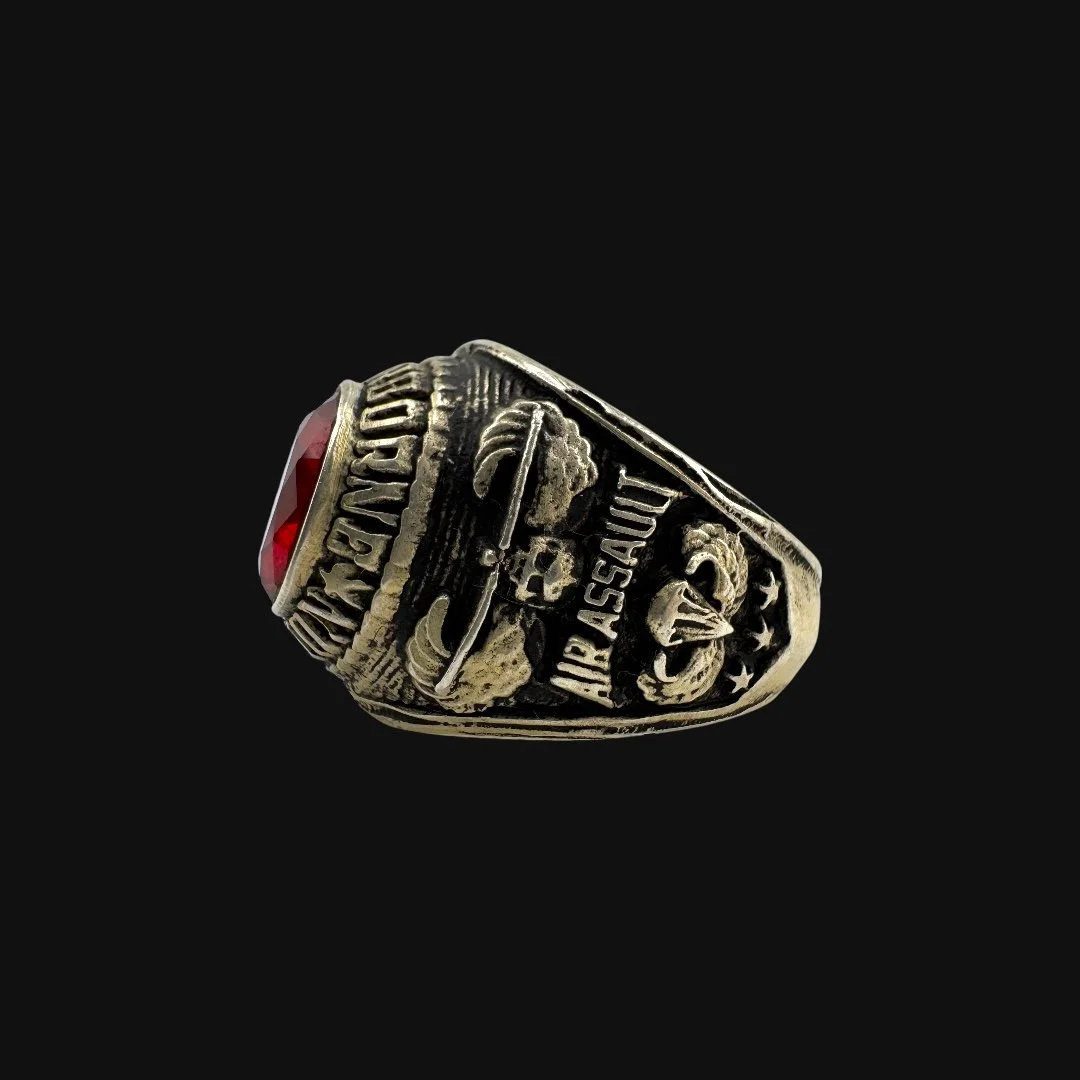 Image 11 of 14
Image 11 of 14

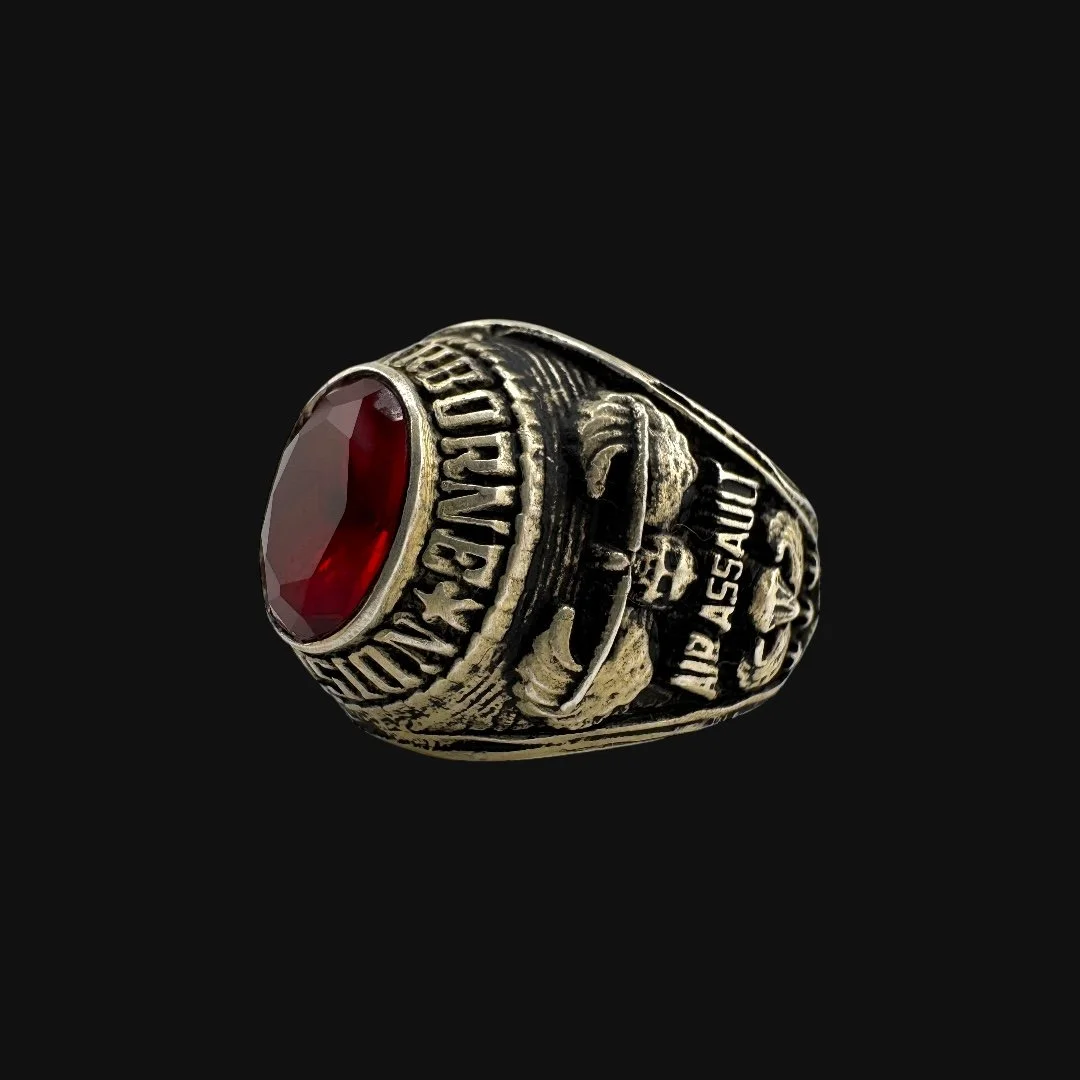 Image 12 of 14
Image 12 of 14

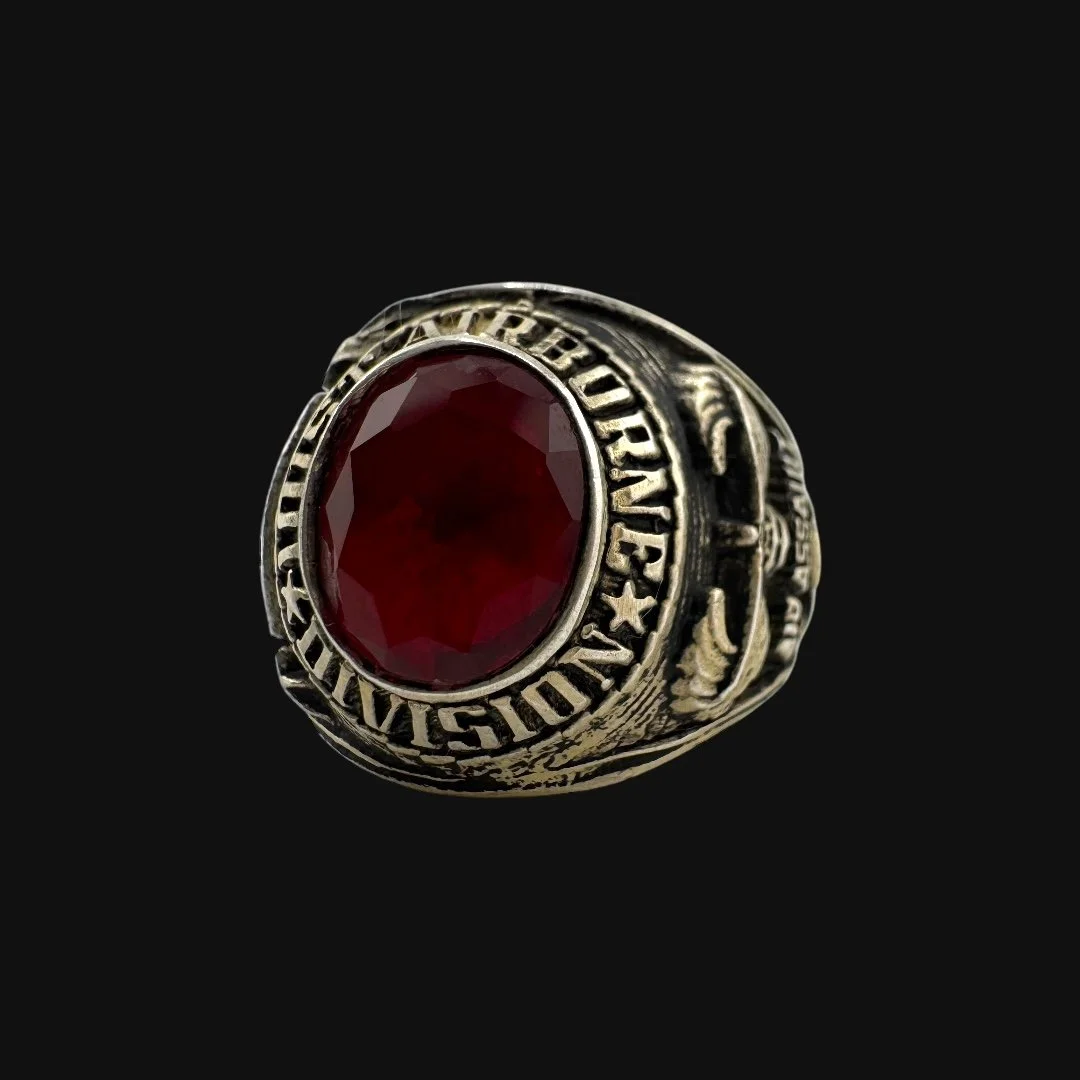 Image 13 of 14
Image 13 of 14

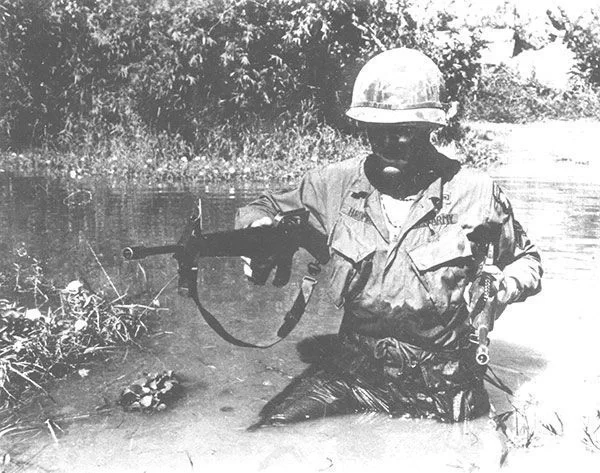 Image 14 of 14
Image 14 of 14















Original Vietnam War 101st Airborne Division “Air Assault” .925 Sterling Silver Red Gemstone Ring (Size 11.25)
Comes with a hand-signed C.O.A. and a full historical research write-up
From: Vietnam War
Branch: U.S. Army
Division: 101st Airborne Division
Dated: 1960’s-1970’s
Ring Size: 11.25 (US)
Material: .925 Sterling Silver
Wearable History Collection:
This authentic Vietnam War–era ring, preserved in its original and unaltered condition, reflects the craftsmanship and resilience of a generation that served in one of America’s most challenging conflicts. Forged during the turbulent years of the 1960s and 1970s, it carries the weight of history while remaining fully suitable for modern wear today. As part of our exclusive Vietnam War “Wearable History Ring Collection,” it offers a rare chance to own and wear a genuine artifact of the era. Both a timeless accessory and a direct link to the men who endured the jungles, firebases, and patrols of Vietnam, this one-of-a-kind ring stands as a wearable tribute to their courage, sacrifice, and brotherhood.
Historical Significance to the 101st Airborne Division in Vietnam:
The 101st Airborne Division, the “Screaming Eagles,” entered the Vietnam War in 1965 and quickly adapted from its traditional airborne role to become an airmobile force. Relying on helicopters to move swiftly through jungles and mountains, the division developed into one of the most effective rapid-strike units in the conflict. This shift allowed the 101st to conduct major operations in areas like Thừa Thiên Province, where it launched Operation Nevada Eagle in 1968 to secure the region after the Tet Offensive and safeguard the city of Huế.
The division’s most infamous battle came in May 1969 at Hill 937, better known as Hamburger Hill. Over ten days of relentless assaults in the A Shau Valley, the 101st fought uphill through dense jungle against heavily fortified North Vietnamese positions. Although the hill was eventually captured, the high casualties and subsequent withdrawal stirred controversy back in the United States. Still, the battle became a lasting symbol of the Screaming Eagles’ determination under fire.
Beyond Hamburger Hill, the 101st was heavily engaged across the A Shau Valley, a critical supply corridor tied to the Ho Chi Minh Trail. Operations like Apache Snow and the defense of Firebase Ripcord in 1970 highlighted the division’s ability to endure some of the most intense combat of the war. Even as U.S. strategy shifted toward Vietnamization in the early 1970s, the 101st maintained its presence until its gradual withdrawal, leaving behind a legacy of resilience, innovation, and sacrifice.
The Vietnam War remains one of the most defining chapters in the division’s history. The 101st Airborne not only pioneered large-scale airmobile warfare but also proved itself in some of the most grueling campaigns of the conflict. Its soldiers’ courage in places like the A Shau Valley continues to stand as a tribute to the men who carried the Screaming Eagle into one of America’s most difficult wars.
The Legacy Within This Ring:
This Vietnam War ring reflects the enduring story of a 101st Airborne Division paratrooper who fought through some of the most grueling campaigns in Southeast Asia. The Screaming Eagles carried their reputation into the jungles, where every operation demanded unyielding courage, discipline, and unity. For the soldier who wore it, this ring was not simply a personal keepsake. It became a silent witness to hardship and survival, etched with the weight of airborne combat.
At its heart lies a red gemstone, a feature steeped in powerful symbolism. Red has long been tied to sacrifice, valor, and the will to endure. In the context of war, it could stand for the lifeblood of comrades, the fire of determination, and the raw courage required to press forward despite overwhelming odds. For a paratrooper navigating the chaos of Vietnam, the stone may have served as a reminder of strength in struggle, a beacon of resilience, and a symbol of brotherhood forged in battle.
Today, the ring survives as both a personal relic and a piece of living history. It preserves the memory of the paratrooper who wore it and honors the legacy of the 101st Airborne Division, whose soldiers carried America’s fight deep into the heart of Vietnam. The red gemstone at its center ensures it endures not only as a symbol of conflict, but also as a lasting testament to sacrifice and courage.
Comes with a hand-signed C.O.A. and a full historical research write-up
From: Vietnam War
Branch: U.S. Army
Division: 101st Airborne Division
Dated: 1960’s-1970’s
Ring Size: 11.25 (US)
Material: .925 Sterling Silver
Wearable History Collection:
This authentic Vietnam War–era ring, preserved in its original and unaltered condition, reflects the craftsmanship and resilience of a generation that served in one of America’s most challenging conflicts. Forged during the turbulent years of the 1960s and 1970s, it carries the weight of history while remaining fully suitable for modern wear today. As part of our exclusive Vietnam War “Wearable History Ring Collection,” it offers a rare chance to own and wear a genuine artifact of the era. Both a timeless accessory and a direct link to the men who endured the jungles, firebases, and patrols of Vietnam, this one-of-a-kind ring stands as a wearable tribute to their courage, sacrifice, and brotherhood.
Historical Significance to the 101st Airborne Division in Vietnam:
The 101st Airborne Division, the “Screaming Eagles,” entered the Vietnam War in 1965 and quickly adapted from its traditional airborne role to become an airmobile force. Relying on helicopters to move swiftly through jungles and mountains, the division developed into one of the most effective rapid-strike units in the conflict. This shift allowed the 101st to conduct major operations in areas like Thừa Thiên Province, where it launched Operation Nevada Eagle in 1968 to secure the region after the Tet Offensive and safeguard the city of Huế.
The division’s most infamous battle came in May 1969 at Hill 937, better known as Hamburger Hill. Over ten days of relentless assaults in the A Shau Valley, the 101st fought uphill through dense jungle against heavily fortified North Vietnamese positions. Although the hill was eventually captured, the high casualties and subsequent withdrawal stirred controversy back in the United States. Still, the battle became a lasting symbol of the Screaming Eagles’ determination under fire.
Beyond Hamburger Hill, the 101st was heavily engaged across the A Shau Valley, a critical supply corridor tied to the Ho Chi Minh Trail. Operations like Apache Snow and the defense of Firebase Ripcord in 1970 highlighted the division’s ability to endure some of the most intense combat of the war. Even as U.S. strategy shifted toward Vietnamization in the early 1970s, the 101st maintained its presence until its gradual withdrawal, leaving behind a legacy of resilience, innovation, and sacrifice.
The Vietnam War remains one of the most defining chapters in the division’s history. The 101st Airborne not only pioneered large-scale airmobile warfare but also proved itself in some of the most grueling campaigns of the conflict. Its soldiers’ courage in places like the A Shau Valley continues to stand as a tribute to the men who carried the Screaming Eagle into one of America’s most difficult wars.
The Legacy Within This Ring:
This Vietnam War ring reflects the enduring story of a 101st Airborne Division paratrooper who fought through some of the most grueling campaigns in Southeast Asia. The Screaming Eagles carried their reputation into the jungles, where every operation demanded unyielding courage, discipline, and unity. For the soldier who wore it, this ring was not simply a personal keepsake. It became a silent witness to hardship and survival, etched with the weight of airborne combat.
At its heart lies a red gemstone, a feature steeped in powerful symbolism. Red has long been tied to sacrifice, valor, and the will to endure. In the context of war, it could stand for the lifeblood of comrades, the fire of determination, and the raw courage required to press forward despite overwhelming odds. For a paratrooper navigating the chaos of Vietnam, the stone may have served as a reminder of strength in struggle, a beacon of resilience, and a symbol of brotherhood forged in battle.
Today, the ring survives as both a personal relic and a piece of living history. It preserves the memory of the paratrooper who wore it and honors the legacy of the 101st Airborne Division, whose soldiers carried America’s fight deep into the heart of Vietnam. The red gemstone at its center ensures it endures not only as a symbol of conflict, but also as a lasting testament to sacrifice and courage.
